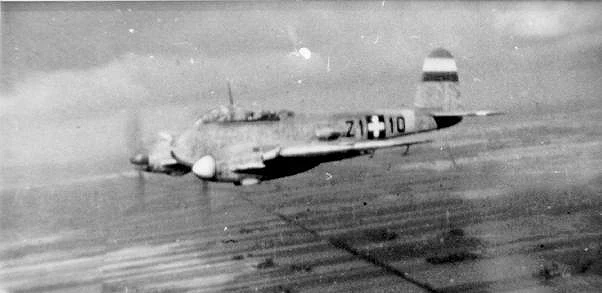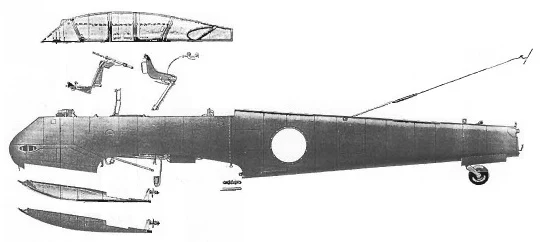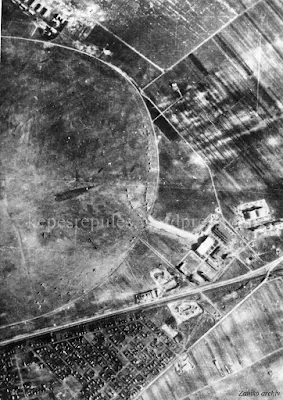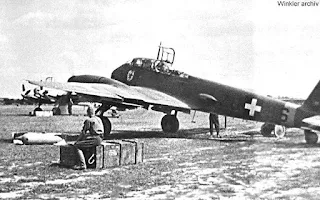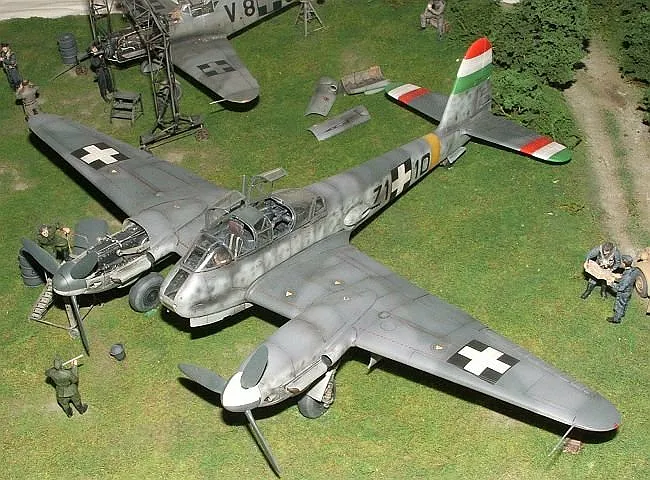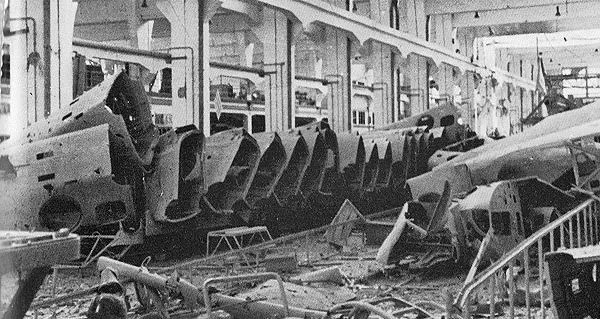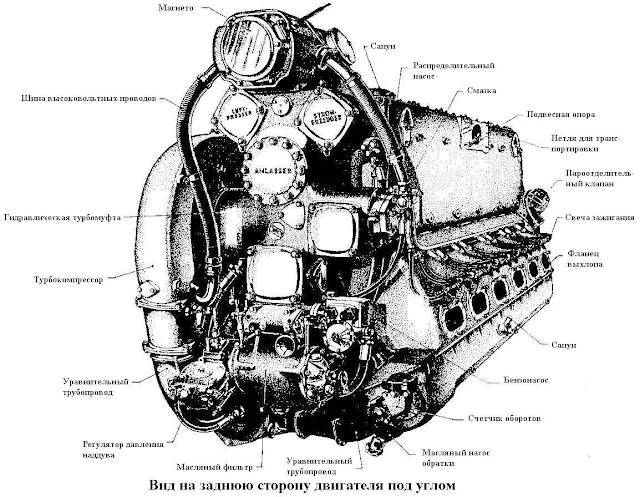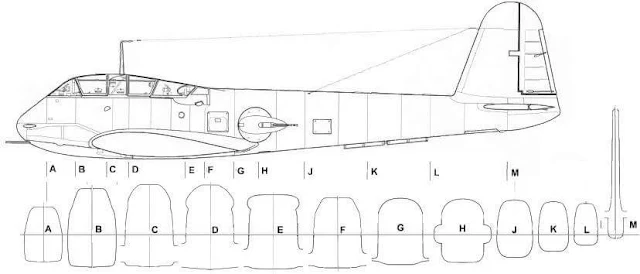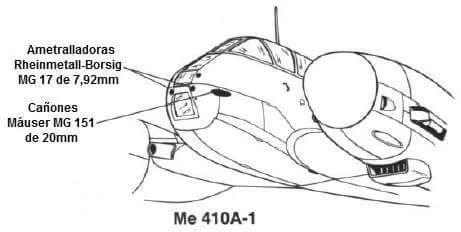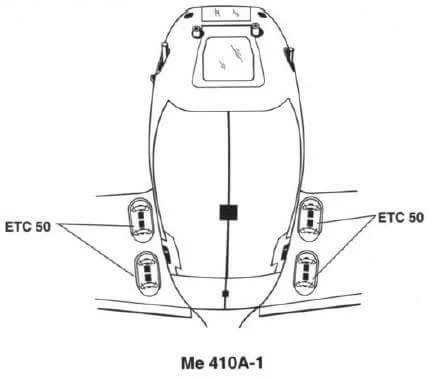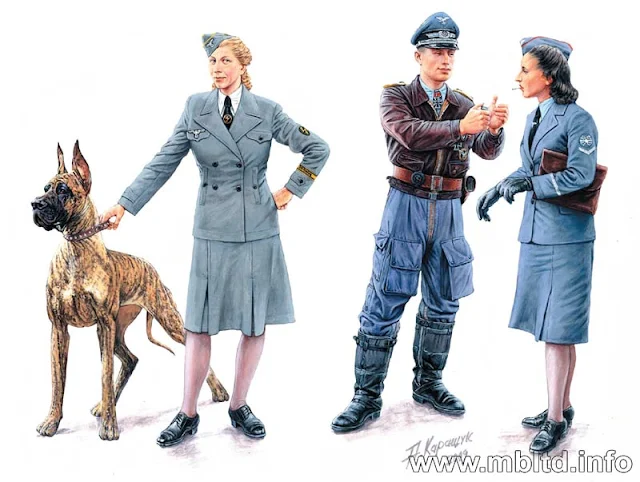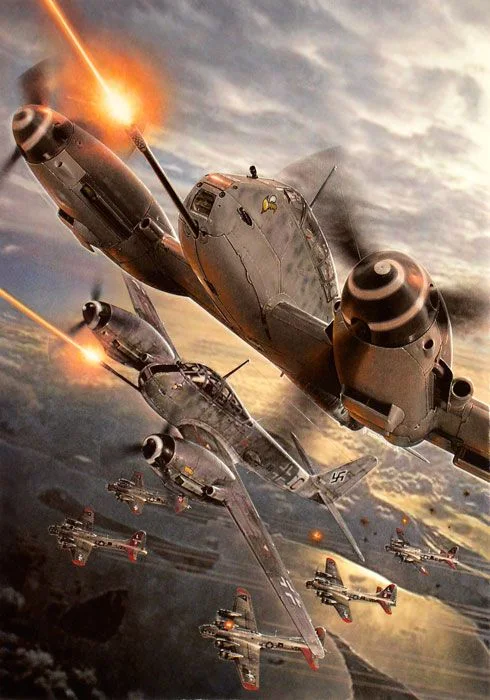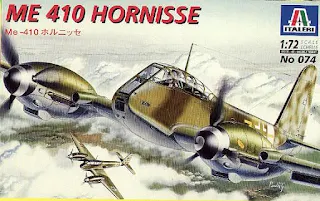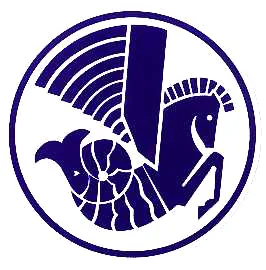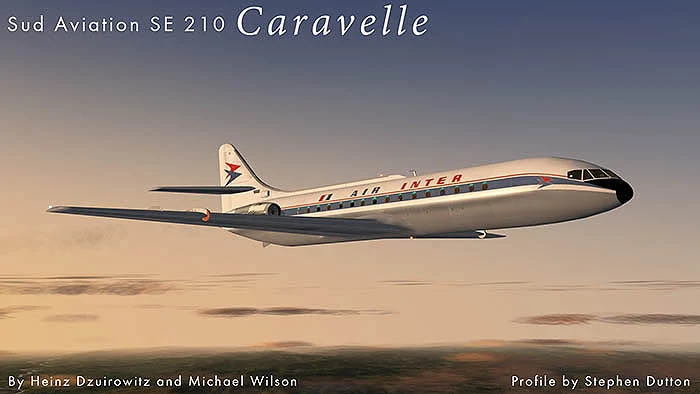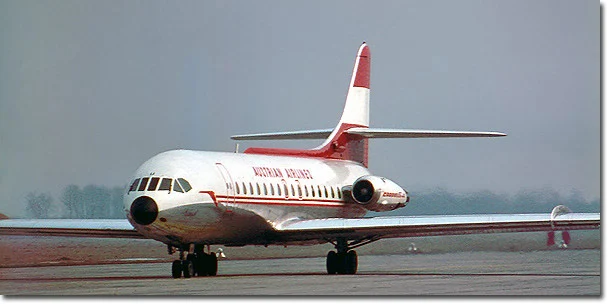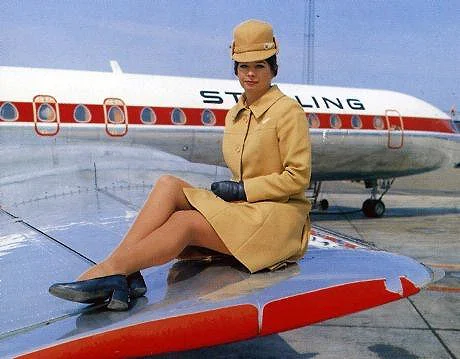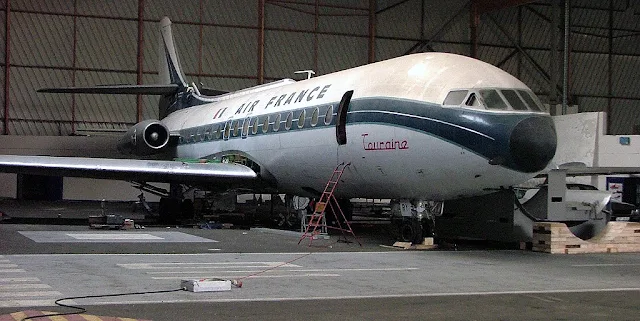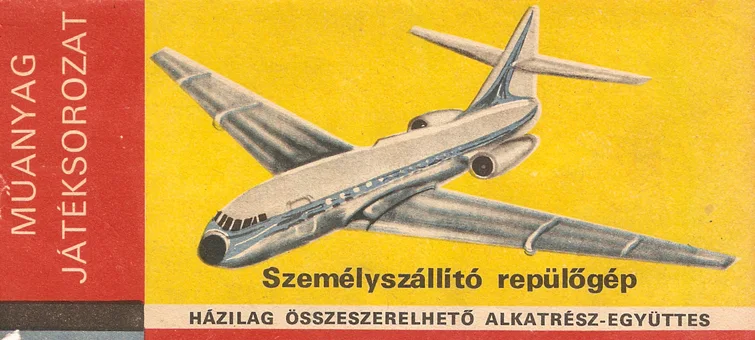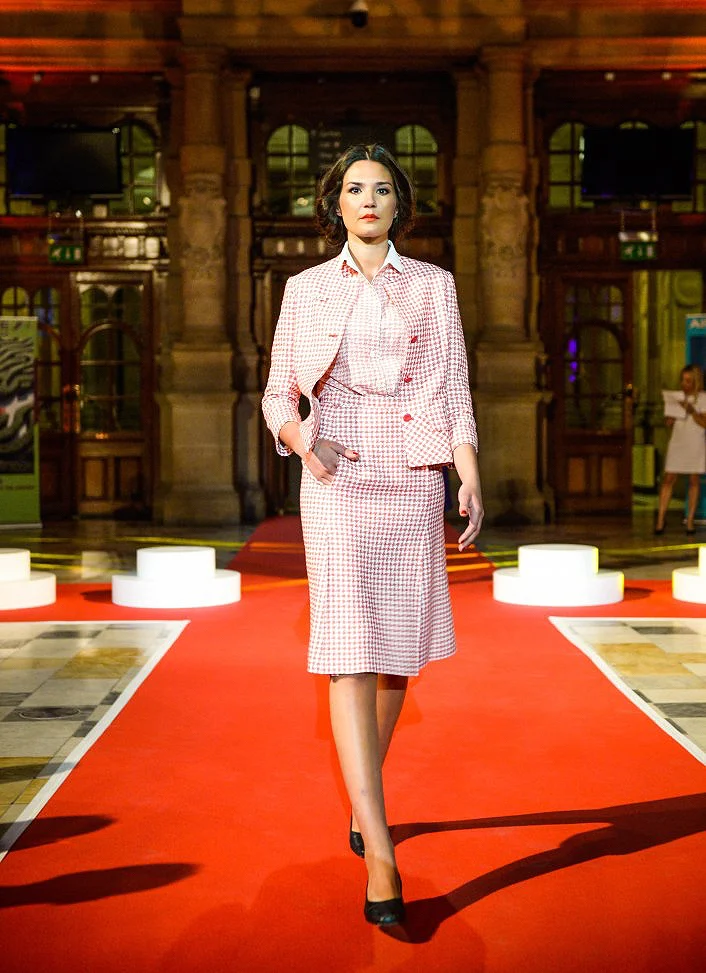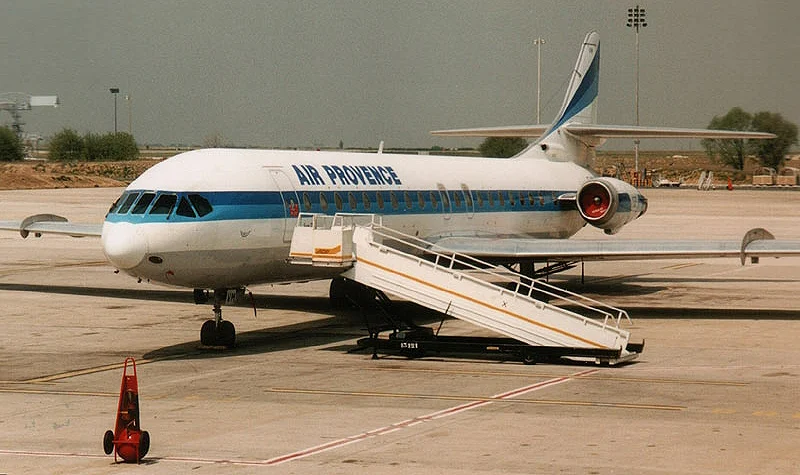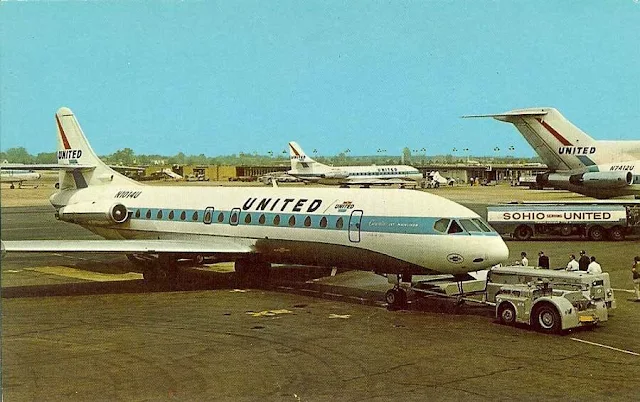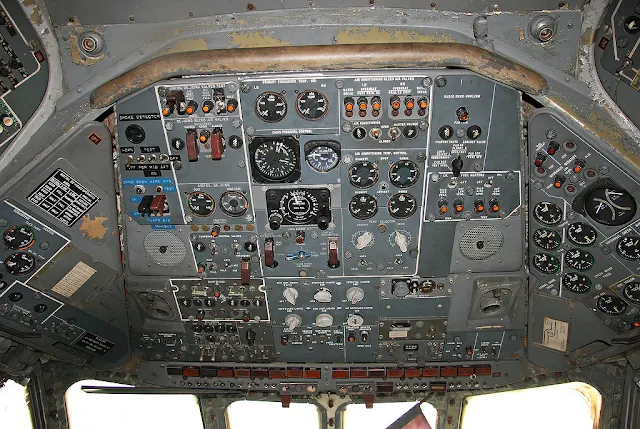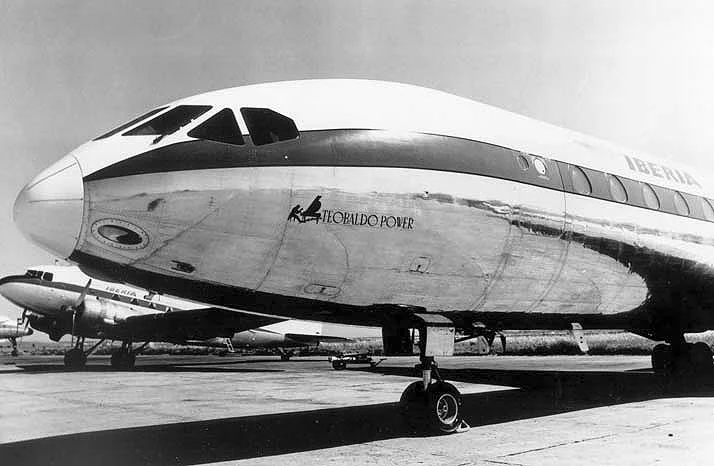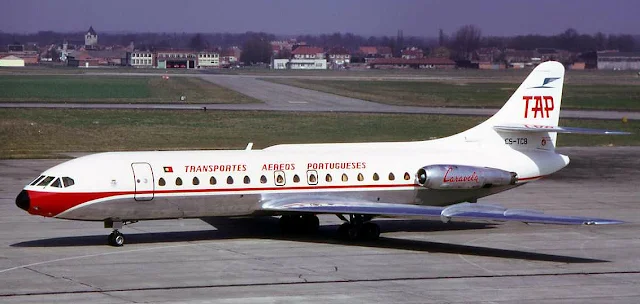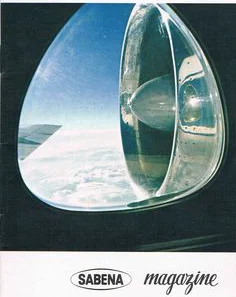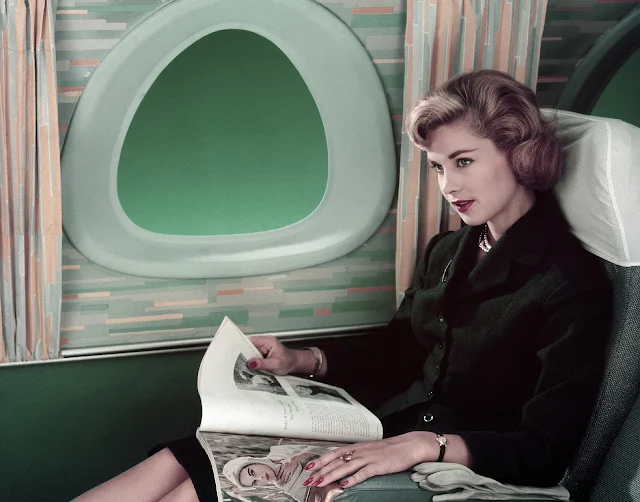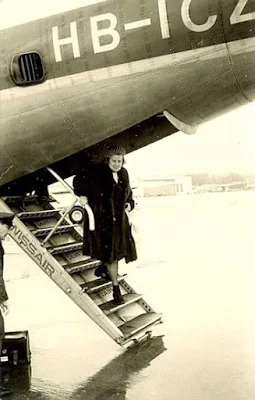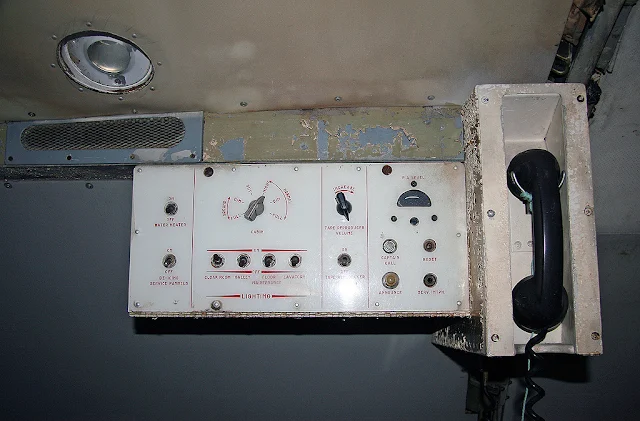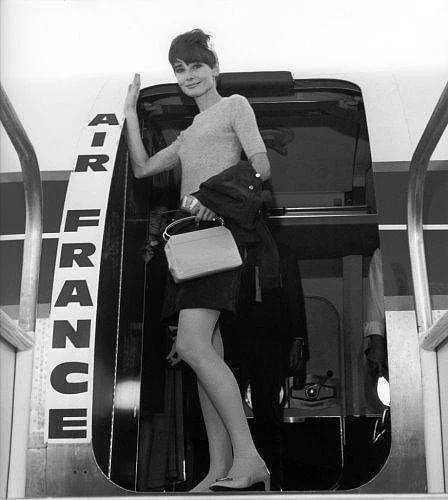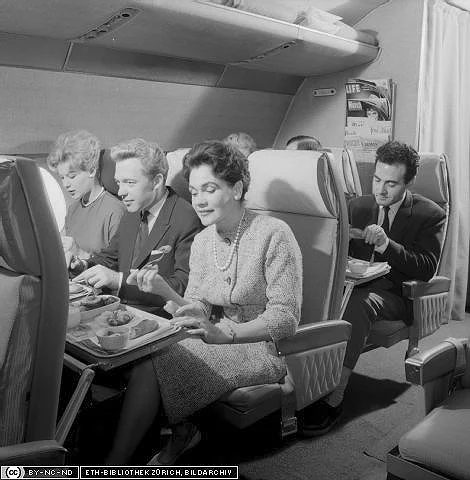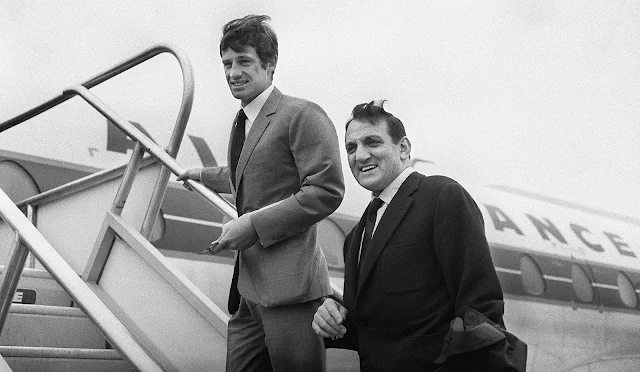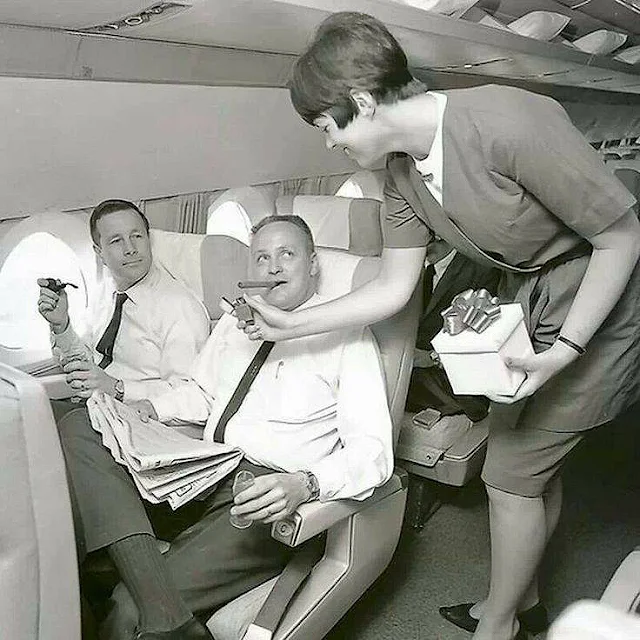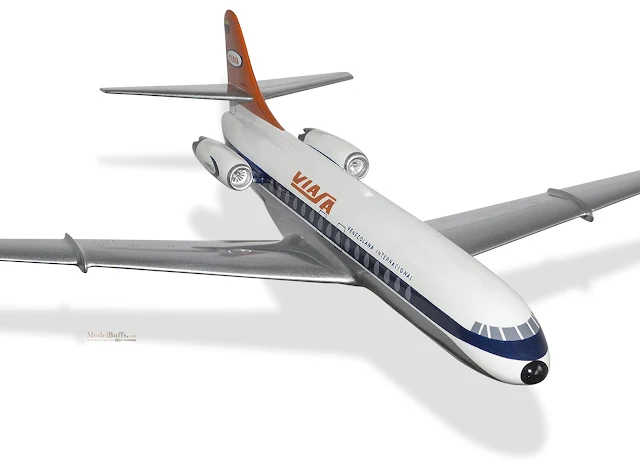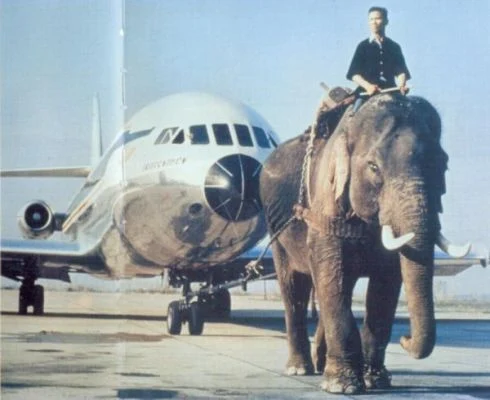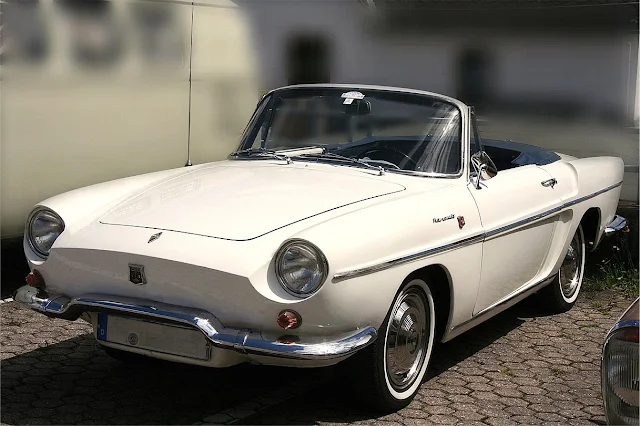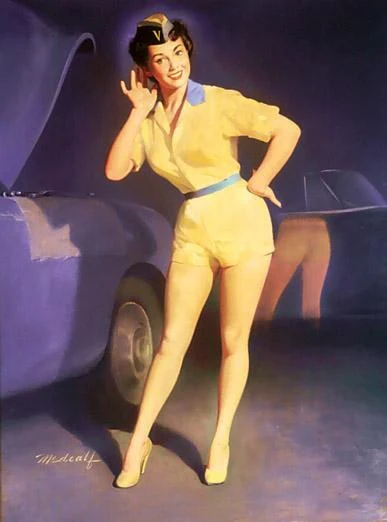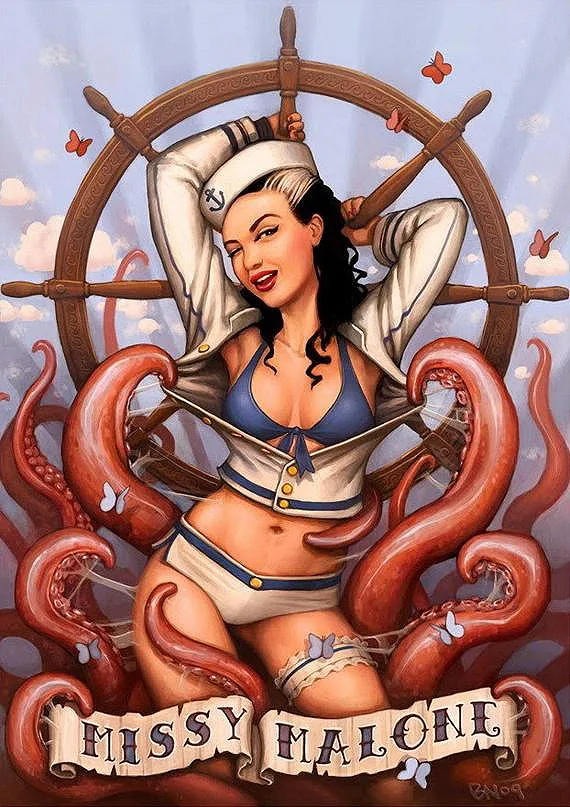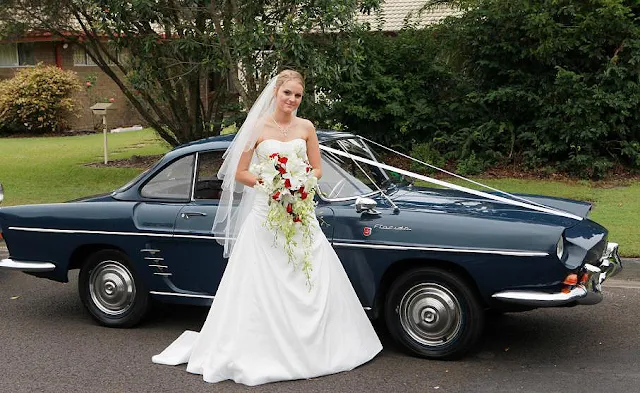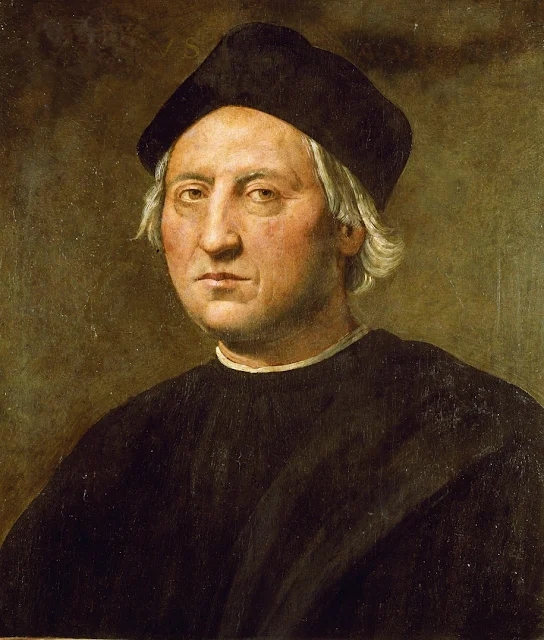210s - Kettőtizesek: #Messerschmitt #Me-210 Ca-1/410 '#Hornisse' #Zerstörer - #Romboló/#Schlachtflugzeuge #DRRt. & #Sud-Aviation #SE-210 '#Caravelle' #airliner-jet: #Air-France, #SABENA, #SAS, #Finnair, #VARIG. -#Jackal-, #Renault 'Caravelle' #VW, P.M. #Orbán Viktor. '#Caravella' #Columbus' #vessel. (#Wikipedia)
NoHigher! above: Me 210 Ca-1 HUN RFPA by: Jutocsa below: Hu.RHAF Profile source: Pinterest
above: MedRes! R.HuHDAF. Me 210 Ca-1 below Two: NoHigher! On air during mission
En. text: Role: Heavy fighter, ground-attack aircraft, fighter-bomber, dive bomber
Manufacturer: Messerschmitt, Dunai Repülőgépgyár Rt.
First flight: 2 September 1939
Introduction: 1943
Retired: 1945
Primary users: Luftwaffe & Hungary
Number built: 90 finished and 320 partially completed in Germany, 272 in Hungary
Developed from: Bf 110
Variants: Me 410
De. text: Typ: zweimotoriger Zerstörer
Entwurfsland: Deutsches Reich (NS-Zeit) Deutsches Reich
Hersteller: Messerschmitt AG
Erstflug: 2. September 1939
Indienststellung: 1941
Produktionszeit: 1941 bis 1944
Stückzahl: 702
Hu. text: Funkció: nehézvadász, gyorsbombázó
Gyártó: Messerschmitt, Dunai Repülőgépgyár Rt.
Fő üzemeltetők: Luftwaffe, Magyar Királyi Honvéd Légierő
Személyzet: 2 fő
Első felszállás: 1939
Szolgálatba állítás: 1942
Méretek:
Hossz: 12,96 m
Fesztáv: 6,4 m
Magasság: 4.3 m
Szárnyfelület: 36,2 m²
Tömegadatok:
Szerkezeti tömeg: 5440 kg
Max. felszállótömeg: 8400 kg
Hajtómű: 2 db Daimler-Benz DB–605 B (magyar változat)
Teljesítmény: 1100 kW (1475 LE), német gyártás DB601F 1025 kW (1395 LE) kW
Repülési jellemzők:
Max. sebesség: 560 km/h
Hatótávolság: 2000 km
Legnagyobb repülési magasság: 0 500 m
Emelkedőképesség: ?m/min
Fegyverzet:
Beépített fegyverzet: db 20 mm-es MG 151/20 gépágyú,
2 db 7,92 mm-es MG 17 géppuska,
2 db 13 mm-es MG 131 géppuska
Bombák: 1000 kg bomba source: Wikipedia


above: MedRes! & below: MedRes!: Messerschmitt #Me-210-Ca.2 Hu. graf: HDTSz. 2013. october
above: HiRes! Three view of Me 210 trzech rzutach - A Messerschmitt Me 210 1A háromnézeti rajza
Wilhelm Emil Messerschmitt (* 26. Juni 1898 in Frankfurt am Main; † 15. September 1978 in München) war ein deutscherFlugzeugkonstrukteur und Unternehmer. Er gilt als ein Pionier der Luftfahrt.
Wilhelm Emil Messerschmitt (/'vĭli 'messer shmĭt/) (June 26, 1898 – September 15, 1978) was a German aircraftdesigner and manufacturer. He was born in Frankfurt am Main, the son of Baptist Ferdinand Messerschmitt (1858–1916) and his second wife, Anna Maria née Schaller (1867–1942).
Probably Messerschmitt's single most important design was the Messerschmitt Bf 109, designed in 1934 with the collaboration of Walter Rethel. The Bf 109 became the most important fighter in the Luftwaffe as Germany rearmed prior to World War II. To this day, it remains one of the most-produced warplanes in history, with some 34,000 built, with only the Russian Ilyushin Il-2 surpassing it at 36,000. Another Messerschmitt aircraft, first called "Bf 109R", purpose-built for record setting, but later redesignated Messerschmitt Me 209, broke the absolute world airspeed record and held the world speed record for propeller-driven aircraft until 1969. His firm also produced the first jet-powered fighter to enter service — the Messerschmitt Me 262, although Messerschmitt himself did not design it. ... https://en.wikipedia.org/wiki/Willy_Messerschmitt

Prof. eng. Willy Messerschmitt general constructeaur.

above: NoHigher! #Ernst-Udet & #Willy-Messerschmitt
De. text: Ernst Udet (* 26. April 1896 in Frankfurt am Main; † 17. November 1941 in Berlin) war während des Ersten Weltkriegs Jagdflieger in der Fliegertruppe des Deutschen Heeres. Nach Manfred von Richthofen erzielte er die höchste Zahl von Abschüssen unter den deutschen Jagdpiloten. Nach dem Ersten Weltkrieg war er im Kunstflug und bei Schauflügen aktiv. Während der Zeit des Nationalsozialismus war Udet im Reichsluftfahrtministerium verantwortlich für die technische Ausrüstung der Luftwaffe und bekleidete ab 1939, zuletzt im Rang eines Generaloberst, das Amt des Generalluftzeugmeisters der Wehrmacht. ... https://de.wikipedia.org/wiki/Ernst_Udet

above: MedRes! Reich Luftharts Ministerium (#RLM) - Birodalmi Légügyi Minisztérium Berlin Bundesarchiv Bild:183-H27413 below: NoHigher! A Luftwaffe Me 210 A-1 of the Versuchsstaffel 210 test squadron, over France in 1942 - Me 210 über Frankreich source: wikipedia
De. text: Das Reichsluftfahrtministerium (RLM) war ein im April 1933 gegründetes Ministerium im Dritten Reich. Für dieses Ministerium wurde 1935 ein monumentales Bürogebäude in Berlin errichtet, das heute Sitz des Bundesfinanzministeriums ist.
Zu DDR-Zeiten wurde es als ‚Haus der Ministerien‘ bezeichnet; seit 1992 trägt es als damaliger Sitz der Treuhandanstalt den Namen des ermordeten Detlev Rohwedder. ...
above: NoHigher! Bundesarchiv_Bild_101I-363-2270-09,: Frankreich, Flugzeug Me 210 source: Wiki
De. text: Die Messerschmitt Me 210 war ein von der deutschen Luftwaffe im Zweiten Weltkrieg eingesetztes zweisitziges, zweimotoriges Kampfflugzeug der Klasse Zerstörer.
Beschreibung:
Sie war als Nachfolger der Messerschmitt Bf 110 geplant. Wie diese besaß auch der erste Prototyp, die Me 210 V1, anfangs ein doppeltes Seitenleitwerk, das aber bei allen anderen Maschinen durch ein großes einzelnes ersetzt wurde. Aufgrund von Konstruktionsfehlern, die die Maschine ins gefährliche Flachtrudeln bringen konnte, musste die schon angelaufene Produktion nach 261 gebauten Maschinen gestoppt und die Fertigung der Bf 110 wiederaufgenommen werden. 148 Exemplare der bereits gebauten Flugzeuge wurden auf langen Rumpf umgebaut und mit DB 605 ausgerüstet, wodurch die Probleme behoben werden konnten. 64 Flugzeuge mit langem Rumpf (incl. 12 V-Mustern) wurden aus Baugruppen erstellt, so dass aus deutscher Produktion insgesamt 325 Me 210 bis März 1943 gebaut wurden. In Ungarn wurde die Fertigung Anfang 1943 aufgenommen und insgesamt 377 Flugzeuge bis Juli 1944 produziert. Somit liegt die Gesamtproduktion der Me 210 bei 702 Flugzeugen und damit deutlich über allen bisher in der Literatur genannten Zahlen. Als Weiterentwicklung mit modifizierter Tragfläche und stärkeren Motoren vom Typ DB 603 wurde ab 1943 die Me 410 in Dienst gestellt.
Produktionszahlen:
Version Verwendung Produktion Bemerkung
V-Muster Prototypen 12 aus Me 210-Baugruppen
A-1 Zerstörer 151 kurzer Rumpf
B-1 Aufklärer 4 kurzer Rumpf
A-1 Zerstörer 106 nur zum Umbau fertiggestellt
A-1 Zerstörer (148) aus Umbau mit langem Rumpf
A-1 Zerstörer 36 aus Baugruppen mit langem Rumpf
C-1 Aufklärer 16 aus Baugruppen mit langem Rumpf
Ca-1 Zerstörer 105 Neubau aus Ungarn
Ca-1 Zerstörer 272 Neubau, für ungarische Luftwaffe
SUMME 325 aus deutscher Produktion
SUMME 377 aus ungarischer Produktion
Quellen: Unterlagen aus dem Bundesarchiv/Militärarchiv Freiburg, Bestand RL 3, Produktionsprogramme
Technische Daten:
Kenngröße Me 210 A-1 Me 210 Ca-1
Spannweite 14,34 m 16,34 m
Länge 12,12 m 12,56 m
Höhe 4,28 m 5,21 m
Motor 2 × DB 601 F mit je 1350 PS (998 kW) 2 × DB 605 B
Max. Startgewicht 10.690 kg 9.705 kg
Höchstgeschwindigkeit 538 km/h 580 km/h
Reichweite 1.620 km 2.400 km
Gipfelhöhe 8.900 m 10.000 m
Bewaffnung 2 × 20-mm-MG 151/20 im Bug,
2 × 7,92-mm-MG 17 im Bug,
2 × 13-mm-MG 131 in fernbedienten, seitlichen Lafetten 2 × 20-mm-MG 151/20 im Bug,
2 × 7,92-mm-MG 17 im Bug,
2 × 13-mm-MG 131 in fernbedienten, seitlichen Lafetten,
bis zu 1.000 kg Bombenlast
Hu. text: A Messerschmitt Me 210 egy második világháborús, kétmotoros, alsószárnyas, fémépítésű német romboló (Zerstörer) és gyorsbombázó repülőgép volt. 1943-tól Magyarországon is készültek Me 210-esek, a típust rendszeresítette a Magyar Királyi Honvéd Légierő is.
Története:
A Messerschmitt Bf 110 utódaként tervezték 1937-ben. Bár az első felszállására már 1939-ben sor került, a sorozatgyártás a gép rossz repülőtulajdonságai miatt csak 1941-ben kezdődött, de a sok baleset miatt a 325. gép átadása után leállították. A gyártás újraindítását csak hosszas tesztelés és a számos szerkezeti elem újjátervezése után engedélyezték a légügyi hatóságok. A már elkészült példányok egy részét hosszabb törzsrésszel látták el és a DB 605-ös motorral építették meg. A gépeket a keleti fronton főleg gyorsbombázó és felderítő feladatokra alkalmazták. Gépágyúkkal, rakétákkal és radarral felszerelt nappali és éjszakai nehézvadász változatait a Németországot támadó szövetséges stratégiai bombázó kötelékek rombolására használták. A típus egyik sajátossága a hátsó támadások elhárítására alkalmazott távirányítású géppuska pár volt. A teljes áttervezés eredményeként létrejött, 1900 LE-s DB-603 motorokkal felszerelt géptípust utolsó változatát már Me 410 jelzéssel állították hadrendbe.
A magyar változat:
A Messerschmitt Me 210-et Magyarországon is gyártották az 1941. június 6-i német–magyar államközi egyezmény alapján, a Dunai Repülőgépgyár Rt. Horthy-ligeti (szigetszentmiklósi) üzemében. Az első magyar gyártású Messerschmitt 210Ca-1 tesztrepülésére 1942 december 21-én került sor Eszenyi Dénes repülőszázados vezetésével. A Honvéd légierő az első két gépet 1943 júliusában állította hadrendbe. 1944 április 1-ig 270 Me–210Ca–1 készült a Dunai Repülőgépgyárban. 160 db került a Magyar Királyi Honvéd Légierő birtokába, 110 pedig a Luftwaffe állományába. A gép alapfegyverzetét a magyar tervezők megváltoztatták, így a törzsbe építettek egy M 36 mintájú, 40 mm-es gépágyút, valamint a szárnyak alá függesztettek egy-egy 152 mm-es űrméretű füstvetőrakéta-indító blokkot. A korszerű, nagy tűzerejű gépekkel a 102/1-es Sas a 102/2-es Tigris és a Villám gyorsbombázó századokat és az 5/1-es Bagoly éjszakai vadászszázadot szerelték fel. A Sas és a Tigris gyorsbombázó századok 1944 nyarán több eredményes támadást hajtottak végre a Szovjetunió területén található vasúti célpontok ellen. 1944 márciusától részt vettek a Magyarországot bombázó amerikai légikötelékek elleni harcokban is. Alacsonytámadó feladatkörben pusztították a Magyarországon harcoló szovjet és román csapatok utánpótlási útvonalait, akadályozva az ellenséges felvonulást a tordai és tiszántúli csatákban, majd a Budapest környéki és dunántúli harcokban. A még 1945 márciusában is aktívan harcoló alakulatot az ausztriai Pándorfalu repülőterére költöztették ahol a német hadsereg a még használható gépeket a földön megsemmisítette, hogy azok ne kerüljenek szovjet kezekbe. ...
below: Youtube Video by: Hu. collector; Pink-Panther Padawan
ドイツ空軍 LUFTWAFFE メッサーシュミット Me210 410
above: NoHigher! Me 210 Ca.2: Armours - Páncélozás source: Hu. graf: HDTSz-2013.oct. from author Sárhidai Gyula
above: NoHigher! Me 210 cockpit below: MedRes! Me 210s

NEW! NoHigher! Messerschmitt KR-200 'Kabinenroller' - Scooter, Streetcar - "Törpeautó" below: Before USAF's Lockheed P-80 'Shooting Star' jet fighter
above & below: NoHigher! Hungarian RHAF archive photo
above: NoHigher! RHDAF Airmen badge - MKHL - Magyar Királyi Honvéd Légierő hajózójelvény

above: MedRes! Me 210 cockpit: Pilot seat and Revi reflex-visier sight - célzókészülék
above & below: NoHigher! Revi E/12 kennblatt - sight source: LuftArchiv.de - Wikipedia
En. text: A reflector sight or reflex sight is an optical device that allows the user to look through a partially reflecting glass element and see an illuminated projection of an aiming point or some other image superimposed on the field of view. These sights work on the simple optical principle that anything at the focus of a lens or curved mirror (such as an illuminated reticle) will look like it is sitting in front of the viewer at infinity. Reflector sights employ some sort of "reflector" to allow the viewer to see the infinity image and the field of view at the same time, either by bouncing the image created by lens off a slanted glass plate, or by using a mostly clear curved glass reflector that images the reticle while the viewer looks through the reflector. Since the reticle is at infinity it stays in alignment with the device the sight is attached to regardless of the viewer's eye position, removing most of the parallax and other sighting errors found in simple sighting devices.
Since their invention in 1900, reflector sights have come to be used as gun sights on all kinds of weapons. They were used on fighter aircraft, in a limited capacity in World War I, widely used in World War II, and still used as the base component in many types of modern head-up displays. They have been used in other types of (usually large) weapons as well, such as anti-aircraft gun sights, anti tank gun sights, and any other role where the operator had to engage fast moving targets over a wide field of view, and the sight itself could be supplied with sufficient electrical power to function. There was some limited use of the sight on small arms after World War II but it came into widespread use after the late 1970s with the invention of the red dot sight, with a red light-emitting diode (LED) as its reticle, making a dependable sight with durability and extremely long illumination run time.
Reflector sights are also used in civilian applications such as sights on surveying equipment, optical telescope pointing aids, and camera viewfinders. ...
above: A view through the Mark III Free Gun Reflector Sight, first produced in 1943, used on army guns, naval guns, and as a pilot sight and a defensive gun sight on aircraft. Reticle image in this sight is produced by an optical collimator bounced off a beam splitter. The dot remains on the target even though the viewer's head is moved side to side - Ein Blick durch ein Reflexvisier vom Typ Mark III Free Gun Reflector Sight aus verschiedenen Blickrichtungen
above: HiRes! Collimating reflex visiers: insiderguide Munich source: google/cnn.com
above: Left: MedRes! Zeiss 'Ikoflex' by: www.butkus.org Right: MedRes! IKOFLEX source: pinterest
above: MedRes! Ikoflex-3 TLR camera. web From: Photoguide, October 1956.
The Ikoflex II (851/16) is a TLR camera that was made by Zeiss Ikon from 1936 till 1951. Confusingly, it was renamed Ikoflex 1 or Ikoflex I (850/16) in 1939, replacing the original Ikoflex I (coffee can model). The name Ikoflex II was given again to another camera in 1939, the model 852/16. It creates 6x6cm negatives (or slides) on 120 film.
The earlier Ikoflex II's have a focus lever on the left side of the body. This was replaced by a focus knob on the later Ikoflex I. Another difference is the eye-level sport finder which the Ikoflex II has but was abandoned with the name change to Ikoflex I. ... camera-wiki.org/Zeiss_Ikon_Ikoflex_II
above: MedRes! #Carl-Zeiss-Jena: Kennblatt #Revi-C/12F #sight below: NoHigher! #Revi#C/12D
http://www.reflexvisier.com/revi-c12-schreagbewaffnung
En. text: Carl Zeiss (German pronunciation: [ˌkaʁl ˈtsaɪs]), branded as ZEISS, is a German manufacturer of optical systems, industrial measurements and medical devices, founded in Jena, Germany in 1846 by optician Carl Zeiss. Together with Ernst Abbe (joined 1866) and Otto Schott (joined 1884) they built a base for modern optics and manufacturing. There are currently two parts of the company, Carl Zeiss AG located in Oberkochen with important subsidiaries in Aalen, Göttingen and Munich, and Carl Zeiss GmbH located in Jena.
Carl Zeiss AG is the premier company of the Zeiss Gruppe, one of the two large divisions of the Carl-Zeiss-Stiftung. The Zeiss Gruppe is located in Heidenheim and Jena. Also controlled by the Carl-Zeiss-Stiftung are the glass manufacturers Schott AG and Jenaer Glas, located in Mainz and Jena respectively. Carl Zeiss is one of the oldest existing optics manufacturers in the world. ...
De. text: Die Carl Zeiss AG ist ein Unternehmen der feinmechanisch-optischen Industrie. Sitz der Konzernleitung ist heute Oberkochen. Weitere Standorte befinden sich in Jena, Aalen, Dresden, Berlin, Göttingen, München, Bochingen und Wetzlar sowie in den USA, Ungarn, der Schweiz, Mexiko, Weißrussland, Großbritannien, Frankreich, Israel, Indien und China. ...
above: MedRes! Destroyed Factory of Carl Zeiss in Jena source: Wikipedia
above: NoHigher! Bundesarchiv Bild-F001048-0011, Göttingen, Optische Werke Zeiss-Winkel
above: NoHigher! Zeiss Ikon Boxes: Tengor, Zeiss "Ikoflex Favorit" by: Dr.Theodor Yemenis
NoHigher! above Two: CZJ sight Revi 16B below: Revi 7D source: www.aircraft-gunsight.com
above: NoHigher! #Carl-Zeiss-Jena: #Kennblatt #Revi E 2A #Sight - #Reflexüveges-célzókészülék
above: NoHigher! Revi E2A sight source: LuftArchiv.de
above: NoHigher! Vintage Tengor photographer by: Pinterest source: Camerapedia-Fandom A rare Zeiss Ikon Ikoflex 850/16 1K 'Coffee Can' TLR with f4.5/80mm Novar taking lens c1934. Designed in the Art Noveau style, the 120 rollfilm runs

above: MedRes! Wirelles/Radio Operator equipment source: Super Hobby
above: NoHigher! Cockpit fuselage
NoHigher! above: Control stick/coloumn - botkormány and dashboard/instrument panel - műszerfal below: #Rudder-pedal - #Oldalkormány-pedál
Artifical Horizon: http://szextant.blogspot.hu/2014/04/64-muhorizont-artifical-kunstlicher.html
above & below: NoHigher! Dashboard Sidepanel photos
above: MedRes! Me 410 cockpit source: Pinterest.com

above: HiRes! CCW Horizontal laying! color photos due max 1600px. HiRes!
above & below: NoHigher! spahr me 410 by: IPMS-Stockholm
above: NoHigher! Drawing of Me-210/410 canopy - kabintető source: Luftwaffelowers Blog
NoHigher! above: Main parts of fuselage below: Hu. RHAF - MKHL pilots in cockpit
above: NoHigher! Hu. RHAF Me 210 in RKI - Repülő Kísérleti Intézet -Budapest,- Ferihegy airfield- Flying Test Institute: Aerodinamics test strips on the wing

above: NEW! MedRes! 'Ferihegy' airfield Budapest-city, RKI - Repülőkísérleti Intézet - Aviation Test Institute: Left: 1944. augst Right: 1944 spring - tavasz source: Zainkó archiv /kepesrepules.wordpress.com
NEW! above: NoHigher! Sketch about 'Ferihegy' airfield in WW-Two 1944-'45 for AAF 8th Bomber group -Légi Hadsereg- B-17, B-24 navigators and bomb aimer officers below: HiRes! 'Kisferihegy'


above: MedRes! RHAF me 210 5/1. below Two: MedRes! profiles by: Hu. Punka György

above: HiRes! Me 210 Ca.2 RHAF - MKHL profiles by: George Punka György source: Haditechnika
above: NoHigher! Profile Artist: Hu. Kozlik Viktor below: HiRes! Me 210 Ca-1 source: Google/Warthunder Forum
above. HiRes! Hornisse - Hornet's head source: Wikipedia
Ru. text: Ше́ршни (лат. Vespa, букв. «оса») — род самых крупных представителей так называемых общественных ос. Самые крупные представители рода (Vespa mandarinia) имеют размеры до 55 мм в длину. ... https://ru.wikipedia.org/wiki/Seersiy
Hu. text:"A mérnökök szerint a dongó nem képes repülni, a dongó erről nem tud és vígan repül." Biztosan mindenki találkozott már ezzel a szellemes mondással, amit nem ritkán valami kifejezetten megkérdőjelezhető dolog igazolásához használnak fel. A dongó esete hol a tudományos…
"A mérnökök szerint a dongó nem képes repülni, a dongó erről nem tud és vígan repül." Biztosan mindenki találkozott már ezzel a szellemes mondással, amit nem ritkán valami kifejezetten megkérdőjelezhető dolog igazolásához használnak fel. A dongó esete hol a tudományos igazság relativizálására, hol pedig az önbizalom fontosságára kellene, hogy felhívja a figyelmet.
A baj az, hogy a mondás nem igaz. Helyesebben hangzana így: "Szerintünk a mérnökök azt mondják, hogy a dongó nem tud repülni, a mérnökök erről nem tudnak és vígan mérnökösködnek." .... http://criticalbiomass.blog.hu/2014/12/15/a_dongo_es_az_aerodinamika
above: NoHigher! RHAF in field:scale 1:48 diorama by Hu. Ákos source: www.aircair
above: NoHigher! Haditechnika 2013./5 - Military Technic source: armedia.hu
above & below: NoHigher! Me 210
above: NoHigher! Me 410 by: Luftwaffelowers.Blogspot
above: NoHigher! Me 210 M.G.s below: HiRes! 20mm gun
above: NoHigher! #Guns and #Cannons
above: MedRes! Drawing source: Hu. Mr. Sárhidai Gyula Haditechnika

above: Left: MedRes! Gun Armament variant Right: MedRes! De. text: Me 410
above: NoHigher! Me 410-B2-am cannon by: Hyperscale
NoHigher! above: Soviet captured Me 410B-2 below: Me 210-A1 weapons ships SC50 bombs
above: NoHigher! Me 210 featured a bomb bay, unlike its predecessor Bf 110 - Beladen einer Me 210 source: Wikipedia/Bundesarchiv_Bild_101I-363-2271-21,:Frankreich, Flugzeug Me 210, Bomben
above: NoHigher! artist Hans #Liska artisty drawing WW-Two

above: MedRes! Tail section cutaway drawing
above: NoHigher! The FDSL 131 remote gun turret of an Me 210 being maintained - Bundesarchiv_Bild_101I-445-1861-19,: Nordafrika, Arbeit an Bordwaffen einer Me 210-410 source: Wikipedia
above: NEW! NoHigher! RHAF - HuAF - MKHL source: A Magyar Repülés Története
Twin 2 pcs db 13 mm-es MG 131
above Three: NoHigher! Defender gun-komplex
above: NoHigher! Rear sight
above: NoHigher! Me 410 hyperscale model source: Hsgalleries below: MedRes! Photos
above: NoHigher! Me 410 hyperscale model source: Hsgalleries below: MedRes! Photos

above: MedRes! Luftwaffe Me 210A scale 1:72 source: facebook
above: NoHigher! German & Hungarian Me 210/410 by: HADMODELS source: e-bay.com
above: NoHigher! Hu Messershmitt ZO+20
above: NoHigher! Hu. text article by Haditechnika: Hu. producing & developing of MRCA - Multi-Role Combat Aircraft Me 210 by: Hu. author: Osváth Sándor
above: NoHigher! Budapest: TMA of LHBP in 1990's: Csepel-sziget - island and Szigetszentmiklós - Halásztelek villages = Tököl airfield source: Maracskó Média www.pilotshop.hu
Hu. text article: A TÖKÖLI REPÜLŐTÉR 2016-08-16:
A ma 20-25 év körüli fiataljai nem is emlékeznek arra, milyen idillikus hangulat volt Tökölön régen arra ébredni hajnali 4-kor, reszketnek az ablakok, szállnak fejünk felett a repülők, néha a kert végében a függőleges próbarepüléskor remegésbe kezdett a gyümölcsfák levélzete, vagy repült a cserép a tetőről. A most bátor hangadó, akkor mélyen hallgatott. A fegyverek árnyékában nem volt mindenki oly mélyen hazafi. És akkor, aki élni akart, az ma nem feltétlen követendő. Megpróbálom összegyűjteni a múltból azokat, amelyek a jelen számára már csak emlékek és elgondolkodtatóak.
A repülőtér alapítása 1940-ben kezdődött. Az akkor a Dunai Repülőgépgyár Rt. gyári repülőtere volt. Itt gyártottak a Messerschmitt BF 109, M 210 és feltehetően a 410-esek egy részét is.
A repülőtér – a gyártás mellett – kísérletek színtere is volt, háborús körülmények között.
1944-ban bombázás is érte a repteret, majd 1944. november vége felé a szovjet csapatok elfoglalták.
A kivonásukig itt is maradtak. A reptér részese volt az 1956-os eseményeknek is. 1968-ban az MH. 93. Vitéz Háry László Vegyes Repülőosztály települt a reptérre, s maradt kivonásig.
Ezután kezdődött meg a repülőtér hanyatlása, feldarabolása és jöttek a bérlők, a különböző rendezvények, tervek s viták, környezetvédelmi aggályok. A repülőtérnek mostanáig sincs rendezve a sorsa, csak néha történik valami érdekes.
Vasárnaponként autóbőgés, gyorsasági futamok, meg ki tudja, milyen úri szórakozások. Bessenyei Pétert is kitiltották. A MiG-21-esek régen, melyek hol egyedül, hol párban reszkették meg a környéket, alig voltak zajosabbak. ... http://tokolicivilek.hu/2016/08/16/a-tokoli-repuloter/
above: HiRes! DRRT - Dunai Repülőgépgyári Rt. - Danubaer Aircraft Factory DRRT Corporation. Budapest sud, Csepel-sziget island, Halásztelek & Szigethalom 'Tököl' airfield. Nowadays overthere build up close to DRRT the Hypermarket TESCO? Green marker
Only Hu. text: A tököli repülőtér Tököl, Szigetszentmiklós, Szigethalom, Halásztelek, valamint a Duna által határolt, egykor Horthy-ligetnek nevezett területen található repülőtér. Besorolása nem nyilvános fel- és leszállóhely. A Dunai Repülőgépgyár Rt. gyári repülőtereként létesült az 1940-es évek elején. A második világháborútól 2001-ig katonai repülőtérként üzemelt.
Története:
A Dunai Repülőgépgyár törzsszereldéje 1944-ben
A tököli repülőtér az 1940-es évek elején létesült a Dunai Repülőgépgyár Rt. üzemi repülőtereként. A Pesti Magyar Kereskedelmi Bank és a Weiss Manfréd Művek 1941 februárjában kötött haszonbérleti szerződést Szigetszentmiklós községgel egy új repülőgép- és repülőgépmotor-gyár felépítéséhez szükséges területről. Az új repülőgépgyár a magyar repülőgépgyártás növekvő kapacitás-igénye miatt jött létre. Kezdetben a Messerschmitt Bf 210 romboló repülőgép és a Bf 109 vadászrepülőgép gyártását tervezték, a hozzájuk tartozó DB 605 repülőgépmotorokkal együtt. A céget 1941. július 1-jén jegyezték be, majd még azon a nyáron megkezdődött az üzemcsarnokok, műhelyek és a gyári repülőtér építése a Szigetszentmiklós és Tököl közötti területen, melyet Horthy-ligetnek neveztek. A repülőgépgyár 1942 novemberében kezdte meg a termelését.
A világháborús események miatt a Dunai Repülőgépgyár gyári repülőterén 1943 márciusában felállították a Bf 109 vadászrepülőgépekkel felszerelt 5/3-as vadászrepülő századot, melynek feladata Budapest védelme volt.
1944. április 13-án súlyos bombatámadás érte a tököli repülőteret. Amerikai bombázók több mint 200 tonna bombát dobtak a Dunai Repülőgépgyár létesítményeire és Horthy-ligetre. Június 30-án újabb amerikai bombatámadás érte a repülőteret.
Horthy-ligetet és a tököli repülőteret 1944. november 22-én foglalták el a szovjet csapatok. A repülőteret 1945 januárjában vették használatba, ide települt a szovjet légierő több hadosztálya, köztük A–20 Boston bombázók, vadászrepülők és csatarepülők. A front nyugatra vonulásával azonban a szovjet repülő alakulatok nem távoztak, pár egység 1945 nyaráig maradt. A tököli repülőteret 1945 végén vette ismét használatba a Vörös Hadsereg, ezzel a repülőtér több évtizedes szovjet használata vette kezdetét. Az első megtelepült alakulat a 36. bombázóezred volt.
1947-ben államosították a repülőtér mellett működő Dunai Repülőgépgyárat, majd 1949 novemberében beolvasztották a Csepel Autógyár Nemzeti Vállalatba. Ugyanebben az időben a repülőtér szomszédságában létrehozták a Repülő Műszaki Intézetet (REMI) is.
1949-ben a Magyar Néphadsereg az eredetileg 1200 m hosszú betonpályát 13 cm-el megvastagította, egyben 2500 m hosszúságúra növelte.
Az 1950-es évek elején a Magyar Néphadsereg is használni kezdte a tököli repülőtér egy részét. 1951-ben érkeztek meg a Magyar Néphadsereg új MiG–15-ös vadászrepülőgépei és Jak–18-as kiképző repülőgépei Tökölre. Ezt követően, 1952-ben a magyar Honvéd Légierő 24. és 25. vadászrepülő ezrede is a tököli repülőtérre települt, 1953. október 1-jén pedig létrehozták a Magyar Néphadsereg tököli repülőbázisát. Ugyanebben az évben a repülőtéren működő repülőgépjavító vállalatot leválasztották a Csepel Autógyár Nemzeti Vállalatról és létrehozták a katonai repülőgépek javítására szakosodott Pestvidéki Gépgyárat. A nagyjavított repülőgépek berepülését végezték a tököli repülőtéren.
A Szovjet Légierő vadászezrede itt települt 1950 és 1951 vége között, majd Veszprémbe távozott, őket egy bombázóezred követte Pe–2, majd Il–28 gépekkel. 1956-tól a bombázók távoztak, s több vadászezred, - hadosztály illetve egy vegyes repülőszázad érkezett ide, nem beszélve a Déli Hadseregcsoport Légvédelem alakulatairól.
Az 1956-os forradalom idején, november 1-jén a repülőtér magyarok által használt részét szovjet alakulatok vették körül, míg a szovjet használatú részt légvédelmi lövegekkel erősítették meg. A szovjet erők a Tökölön található összes magyar repülőeszközt lefoglalták.
A magyar katonai repülés csak 1968-ban tért vissza a tököli repülőtérre, amikor megalakították a kormányzati légi szállítási feladatokat végző szállítórepülő századot. Az alakulatnak kezdetben két darab An–24V és két darab Il–14 szállító repülőgépe volt.
Az itt települő szovjet vadászezredet 1989 nyarán megszűntették. Helyére az akkor megalakuló helikopterezred érkezett. Az alakulat a Mi-24V, P, K, R és Mi-8MT, MTV, Mi-8VKP és Mi-9 gépeket használt. A szovjet csapatokat 1991 június 19-ig kivonták Magyarországról, így a tököli repülőtéren állomásozó alakulatok: a hadosztálytörzs és a 201. repülőszázad az év júniusában távozott. A bázis történetéről apró részletességig írt Vándor Károly: Légierő társbérletben című kétkötetes könyvében (2009, 2010) A repülőteret a szovjet fél, a 36. Légi Hadsereg Törzs 1991. június 5-én adta át a Magyar Honvédségnek. Üzemeltetését azonban már május 5-től az MH 93. Vitéz Háry László Vegyes Repülőosztály vette át. Az alakulat 1992-ben a kiöregedett An–24V-k helyett két db An–26-ost vett át a szolnoki MH 89. Vegyes Repülődandártól. A repülőosztály 2001 augusztusáig működött Tökölön, ezt követően beolvasztották a szolnoki repülőezredbe, így ekkor a Magyar Honvédség kiürítette a repülőteret. Közben a repülőtér mellett működő repülőgépjavító üzem katonai tevékenységgel foglalkozó részéből megalakult a Dunai Repülőgépgyár Rt.
Az első nyilvános polgári rendezvényre 2003. július 26-án került sor, amikor a repülőtér adott helyet a Red Bull Air Race Világkupa egyik futamának. ... https://hu.wikipedia.org/wiki/Tokoli-Repuloter-Tortenete
Weiss Manfréd művek-Csepel - Budapest
above: NoHigher! De. text: Strategic Bombing "Box" formation of USAAF

above: MedRes! & below: NoHigher! Bombing of Csepel-island by USAAF - U.S. Army Air Force's 8th/Eight Air Force's Consolidated B-24 'Liberator' form in 1944 source: www.FORTEPAN.hu
Over; the North direction you can see to right/East the Molnár-sziget - Miller-island ("MOLNAR" reporting point of LHBP) on Soroksári-Dunaágon - Arm of Danube-river name 'Soroksaer'/now Ráckevei dunaág. Bombs uprased Blasting smoke from DRRT works. - a Dunai Repülőgépgyárat és a gyári repülőteret (a mai Tököli repülőtér) bombázó B-24 Liberátorok a Csepel-sziget fölött. source: FORTEPAN
above: HiRes! Juci'bácsi's navigation collect: Hu. AIP: LHBP 'Ferihegy' IAP Approach chart for IFR procedures from 1990's
above: HiRes! Csepel-sziget - island Highway plan: M0-autopálya-terv; Tököl airfield, DRRT site is color Mark. & Airfields.scale: M-1:50.000 by: unitef.map-med (Crop!) source: www.ok.ingatlan.hu
above: HiRes! Csepel-sziget - island Highway plan: M0-autopálya-terv; Tököl airfield, DRRT site is color Mark. & Airfields.scale: M-1:50.000 by: unitef.map-med (Crop!) source: www.ok.ingatlan.hu
above: NoHigher! Hu. text: A #Dunai #Repülőgépgyár törzsszereldéje 1944-ben source: Wikipedia
Hu. text - Magyar szöveg: A Dunai Repülőgépgyár (DRGY) törzsszereldéje 1944-ben. Szigetszentmiklós, Horthy -liget. Ismeretlen fényképész felvétele. 1941. július 1-én a Weiss Manfréd Konszern és a Magyar Állam megalapította a Dunai Repülőgépgyár (DR) Rt.-t. Tököl mellett 228 katasztrális holdon repülőteret is létesítettek. Ezeket a területeket egységesen a Horthy-ligetnek nevezték el. A Repülőgépgyárat Sailer István építész tervei alapján kivitelezték. Az építési munkák 1942. januárjában fejeződtek be. A gyárban az augsburgi Messerschmitt gyár Me210 és Me109 típusú repülőgépek C-1-es sárkányait szerelték össze és a stuttgarti Daimler Benz gyár 605A és 605B motorjait gyártották licenc alapján. Az amerikai bombázás miatt a gyárat a kőbányai pincerendszerbe költöztették át. 1944. október 16-ig 272 darab Me210 Ca-1-es szárnyat és a csepeli Weiss Manfréd Repülőgép- és Motorgyár Rt.-vel közösen 1208 darab DB 605A, B és D motort gyártottak le.
Date: 14 June 2013, 19:22:18 https://commons.wikimedia.org/wiki/File:Dunai_Repgyár
Source: http://falanszter.blog.hu https://www.flickr.com/photos/59061037@N02/37550265511/in/dateposted-public/ 20171007
above: MedRes! DRRT after bombing 1944 Danubian Aircraft Company Jsc. - Bombázás után Dunai Repülőgépgyár Rt. source: DRGyM Kft.
Hu. text: Bemutatkozás: A Dunai Repülőgépgyár Magyarország Kft. 1992-ben alakult a több évtizedes múltra visszatekintő hazai repülőipari kapacitások hasznosítására, a tevékenység továbbvitelére.Tulajdonosi döntés alapján időközben magába integrálta a Dunai Repülőgépgyár Zrt. mintegy negyed évszázados működése során megszerzett vállalkozási tapasztalatokat és piacokat is. A cég jelenlegi tevékenységében kiemelt szerepet játszik a gépgyártás, járműgyártás és -korszerűsítés. ... http://www.danubian.hu/hu/
En. text: Introduction: Danubian Aircraft Company Hungary was founded in 1992 with the purpose of using domestic aviation industry experience of many decades and continue the aviation activity.By decision of the owners the 25-year experience of business and markets of Danubian Aircraft Company jsc. have since been integrated. In the current activity of the company play a major role engineering, production and modernization of vehicles. ...
above: NoHigher! Me 210 Ca-1 in #DRRT during produce below: LW Me 210
above: NoHigher! Twin domes/cones: Rare WW2 Photos Likely Things source: pinterest
above Three: LW Me 210s & 'Horten' jeep

above Two: MedRes! Belly landed Me 210
above & below: NoHigher! Daimler-Benz DB 605 engine
Preserved Daimler-Benz DB 601. (Wikipedia)
Type Piston V12 aircraft engine
National origin Germany
Manufacturer Daimler-Benz
First run 1935
Major applications Messerschmitt Bf 109E-F
Messerschmitt Bf 110C-F
Developed from Daimler-Benz DB 600
Variants Aichi Atsuta
Kawasaki Ha-40
Developed into Daimler-Benz DB 603
Daimler-Benz DB 605
above Two: NoHigher! DB 601 below: HiRes! Hu. made DB-605 Hu. text source: Haditechnika
En. text: The Daimler-Benz DB 605 is a German aircraft engine, built during World War II. Developed from the DB 601, the DB 605 was used from 1942 to 1945 in the Messerschmitt Bf 109 fighter, and the Bf 110 and Me 210C heavy fighters. The DB 610, a coupled "power system" powerplant comprising a pair of side-by-side configured examples of the DB 605, geared together in the front to turn a single output shaft — and which, like the very similar DB 606 that it replaced, weighed in at some 1,515 kg apiece — was used in the A-3 and all A-5 variants of Germany's only operational heavy bomber, the Heinkel He 177A.
License-built versions of the DB 605 were used in the Macchi C.205, Fiat G.55, Reggiane 2005 and some other Italian aircraft. It was also initially used in the pusher-design Swedish Saab J21. Approximately 42,400 DB 605s of all kinds were built.
License-built versions of the DB 605 were used in the Macchi C.205, Fiat G.55, Reggiane 2005 and some other Italian aircraft. It was also initially used in the pusher-design Swedish Saab J21. Approximately 42,400 DB 605s of all kinds were built. ...
De. text: Der Daimler-Benz DB 605 war ein flüssigkeitsgekühlter Zwölfzylinder-Flugmotor mit 35,7 Litern Hubraum undBenzindirekteinspritzung von Daimler-Benz. Mit über 42.000 Exemplaren war er nach dem Junkers Jumo 211(68.248 Stück) einer der meistgebauten deutschen Kolben-Flugmotoren des Zweiten Weltkriegs. Die überwiegende Zahl der Jagdflugzeuge Messerschmitt Bf 109 war mit diesem Motor ausgerüstet. .. https://cs.wikipedia.org/wiki/Daimler-Benz_DB_605
above & below: HiRes! Cyrillic text: Russian drawing about DB-601
En. text: The Daimler-Benz DB 601 was a German aircraft engine built during World War II. It was a liquid-cooled inverted V12, and powered the Messerschmitt Bf 109, among others. The DB 601 was basically an improved DB 600 with direct fuel injection.
The DB 601Aa was licence-built in Japan by Aichi as the Atsuta, by Kawasaki as the Ha-40, and in Italy by Alfa Romeo as the R.A.1000 R.C.41-I Monsone. ...
De. text: Der Daimler-Benz DB 601 war ein flüssigkeitsgekühlter Zwölfzylinder-Flugmotor mit 33,9 Litern Hubraum und Benzindirekteinspritzung, der in vielen deutschen Militär- und Rekordflugzeugen zum Einsatz kam. Er wurde bei Daimler-Benz ab 1934 aus dem hubraumgleichen Vergasermotor DB 600 entwickelt.
Daimler-Benz und diverse Vertragsfirmen stellten im Deutschen Reich zwischen 1937 und 1943 insgesamt 19.180 Stück her. Als Lizenzbau wurde der DB 601 auch in den verbündeten Achsenmächten Italien und Japan gefertigt.
Technische Daten DB 601 A-1:
Zwölfzylinder-V-Motor mit 60° Bankwinkel mit hängenden Zylindern (Kurbelwelle oben; auch „A-Motor“ genannt)
Ventilsteuerung: je Zylinderbank eine über Königswelle angetriebene obenliegende Nockenwelle (OHC), die je Zylinder zwei Einlass- und zwei natriumgekühlte Auslassventile betätigt (Vierventiltechnik), Benzindirekteinspritzung, Doppelzündung
Bohrung: 150 mm
Hub: 160 mm
Hubraum: 33,9 Liter
Verdichtungsverhältnis: 6,9:1
linksseitig ein Radialkompressor, stufenlos über eine barometrisch geregelte hydraulische Kupplung angetrieben
Startleistung: 1100 PS (809 kW) bei 2400 min−1
Literleistung: 32,4 PS/l (23,9 kW/l)
Volldruckhöhe: 4500 m
Kühlung: Flüssigkeit (Glykol-Wasser-Gemisch als Kühlmittel)
Schmierung: Trockensumpfschmierung mit einer Druck- und zwei Saugpumpen (je Zylinderkopf eine)
Trockenmasse: 610 kg
Gewichtsbezogene Leistung: 1,8 PS/kg (1,3 kW/kg)
Treibstoff: Benzin, Typ B4 mit einer Oktanzahl von 87 ROZ ...
Ru. text: Даймлер-Бенц DB 601 (нем. Daimler-Benz DB 601) — немецкий поршневой авиационный двигатель времён Второй мировой войны. Представлял собой двенадцатицилиндровый двигатель жидкостного охлаждения. Являлся развитием Daimler-Benz DB 600 с непосредственным впрыском топлива. Применялся на истребителях Bf.109 и ряде других самолетов.
Двигатель был очень удачен, и модификация DB 601Aa также выпускалась по лицензии. Японские компании Аичи (под названием Atsuta) и Кавасаки (под названием Ha-40) производили двигатели, которые применялись на истребителе Ki-61. В Италии этот двигатель под названием R.A.1000 RC.41 производила фирма Альфа Ромео. Двигатель ставился на истребители Макки C.202.
Германия (DB 601)
Dornier Do 215
Heinkel He 100
Henschel Hs 130A-0
Messerschmitt Bf 109
Messerschmitt Bf 110
Messerschmitt Me 210
Hu. text: A Daimler–Benz DB 601 a második világháború időszakában, 1937–1943 között idején Németországban a ludwigsfeldei Daimler-Benz Motoren GmbH által gyártott folyadékhűtésű, V12 hengerelrendezésű, mechanikus feltöltővel felszerelt repülőgépmotor. A DB 601 a DB 600 típusú motor továbbfejlesztett, közvetlen üzemanyag-befecskendezésű változata.
Licenc alapján Japánban az Aichi gyár Acuta, a Kawasaki Ha–40 néven gyártotta, olasz változata pedig az Alfa–Romeo által gyártott R.A.1000.
Műszaki adatai (DB 601 Aa):
Hossz: 1722 mm
Szélesség: 739 mm
Magasság: 1027 mm
Száraz tömeg: 590 kg
Hengerűrtartalom: 33,9 liter
Felszálló teljesítmény (tengerszinten): 876 kW (1175 LE) 2400 1/perc fordulatszámnál
Névleges teljesítmény: 745 kW (1000 LE) 2400 1/perc fordulatszámnál
Reduktor áttétele: 1:0,645 (1:0,532 a Ba változatnál)
A magassági feltöltő 4 km repülési magasságra volt beállítva. ...
above: MedRes! DB-601N cutaway by: FLIGHT I N T E R N A T I O N A L www.flightglobal.com
below: Youtube Video by: Hu. collector; Pink-Panther Padawan
ME 410 ENGINE RUN
ME 410 engine run at RAF St Athan South Wales 1988. Built late 43 "PD+VO" - "3U+AK" - I/ZG.26 "3U+CC" - captured Vaerlose, Denmark 05/45 - painted as "Air Min V-2" - flown to Kastrup 20/08/45 force landed with one engine on fire - flown to Schleswig 03/10/45 - flown to RAE Farnborough 13/10/45 - AM.72 - 6 MU Brize Norton 28/12/45 - 76 MU Wroughton 14/08/46 - 47 MU Sealand - RAF Stanmore Park 49 - 15 MU Wroughton late 55 - RAF Fulbeck c.58 - RAF Cosford early 60 "CC" - RAFM Hendon c.11/75 "Wings of the Eagle" temporary display - RAFM Cosford c.06/76 - allocated 8483M 16/02/76 - St.Athan Museum 20/11/85 - RAFM Cosford 20/12/89 - current
that DB aircraft engines used for example in Messerschmitt fighters would be officially named as Mercedes-Benz, not Daimler-Benz engines as is usually written. Now I have accidentally found interesting evidence from the Finnish post-war Messerchmitt manual for Finnish pilots which support this. In the original Finnish text (and in its English translation) is said. You cannot imagine how strange is the truth, Harri! Mercedes is the spanish name of a girl, and Mr. Benz gave the name of this girl to a successful car. So succesfull that customers began to ask for the "Mercedes" not for the "Daimler". Daimler Benz automotive branch consequently changed name in Mercedes-Benz, in the while the nautical and aeronautical branch not. Why the name of the girl was so important is still a mistery linked to private life of Herr Benz.
above: NoHigher! Bavarian beer cooler six cylinders system on WIN TICKETS TO THE OFFICIAL OKTOBERFEST IN MUNICH! Albert's Schloss & Albert Hall Oktoberfestival competition for our best dressed guest! source: albertsschloss.co.uk
above: HiRes! Me 210 muldiview linedrawings above & below: source: Luftwaffelowers Blogspot
above: NEW! NoHigher! KR-200 Kabinenroller
NoHigher! above: #Me-410 below: Comparison by: LLB

above: MedRes! Lower & Upper views Me 410 below: MedRes! side view & croiss sections


above: NoHigher! Torpedo Launcher Me 410B-5 by: Luftwaffelowers.Bolgospot
above: NoHigher! Cutaway drawing key of Me 410A-1
Hu. text: Me 410 Funkció: nehézvadász, gyorsbombázó, felderítő, éjszakai vadász
Gyártó: Messerschmitt
Fő üzemeltetők: Luftwaffe,
Személyzet: 2 fő
Első felszállás: 1942 december
Szolgálatba állítás: valószínűleg 1943 eleje
Méretek:
Hossz: 12,48 m
Fesztáv: 16,37 m
Magasság: 4,27 m
Tömegadatok:
Szerkezeti tömeg: 6150 kg
Max. felszállótömeg: 10 680 kg
Hajtómű:
Hajtómű: 2 db Daimler-Benz DB–603 A (Me-410A), DB-603G (Me-410B)
Teljesítmény: 1286 kW (1750 LE)(Me-410A), 1396 kW (1900 LE)(Me-410B) kW
Repülési jellemzők:
Max. sebesség: 611 km/h 6100 m magasan
Hatótávolság: 2330 km
Legnagyobb repülési magasság: 10 000 m
Emelkedőképesség: 620 m/min
Fegyverzet:
Beépített fegyverzet 2 db 20 mm-es MG 151/20 gépágyú,
2 db 7,92 mm-es MG 17 géppuska,
2 db 13 mm-es MG 131 géppuska
Bombák 2×500 kg, kivételesen 2×1000 kg bomba
above: MedRes! Me 410 'Hornisse' source: Wikipedia: Me 410, W.Nr.10018, (FE499) after being sent to the United States (Vertical Crop!)
above: MedRes! #Japanese Me 210A in IJAAS below: NoHigher! Profile of Imperial Japan Army Air Service
The Imperial Japanese Army Air Service or Imperial Japanese Army Air Force (IJAAS or IJAAF) (大日本帝國陸軍航空部隊 Dainippon Teikoku Rikugun Kōkūbutai) or, more literally, the Greater Japan Empire Army Air Corps, was the aviation force of the Imperial Japanese Army (IJA). Just as the IJA in general was modeled mainly on the German Army, the IJAAS initially developed along similar lines to the Imperial German Army Aviation; its primary mission was to provide tactical close air support for ground forces, as well as a limited air interdiction capability. The IJAAS also provided aerial reconnaissance to other branches of the IJA. While the IJAAS engaged in strategic bombing of cities such as Shanghai, Nanking, Canton, Chongqing, Rangoon, and Mandalay, this was not the primary mission of the IJAAS, and it lacked a heavy bomber force.
It did not usually control artillery spotter/observer aircraft; artillery battalions controlled the light aircraft and balloons that operated in these roles.
The Imperial Japanese Navy Air Service was responsible for long-range bomber and attack aircraft, as well as strategic air defense. It was not until the later stages of the Pacific War that the two air arms attempted to integrate the air defense of the home islands. ...
above & below: NoHigher! Luftwaffe's Messerschmitt Me 210
En. text: Luftwaffe (German pronunciation: [ˈlʊftvafə] (About this sound listen)) was the aerial warfare branch of the combined German Wehrmacht military forces during World War II. Germany's military air arms during World War I, the Luftstreitkräfte of the Army and the Marine-Fliegerabteilung of the Navy, had been disbanded in May 1920 as a result of the terms of the Treaty of Versailles which stated that Germany was forbidden to have any air force. ...
De. text: Die Luftwaffe der Wehrmacht war neben dem Heer und der Kriegsmarine eine der drei Teilstreitkräfte im nationalsozialistischen Deutschen Reich von 1933 bis 1945. Im Zweiten Weltkrieg war sie Luftstreit- und Flugabwehrkraft, daneben stellte sie auch Bodenstreitkräfte (Luftwaffen-Felddivisionen) zur Unterstützung des Heeres auf. ...
Hu. text: A Luftwaffe a Harmadik Birodalom légiereje volt, melynek létrehozása az Adolf Hitler vezette NSDAP hatalomra jutása után kezdődött meg. A Luftwaffe a hadsereg és a haditengerészet mellett a Wehrmacht három részhadseregének egyike volt a náci Németországban. A Luftwaffe főleg a légierőből és a légvédelmi csapatokból állt, de a második világháború során szárazföldi katonái is voltak a hadsereg támogatására. ...
above: Wrecked Me 210 & Savoia Marchetti S.M.84 cargo
above & below: NoHigher! Messerschmitt Me 410 'Hornisse' zerstörer
above: NoHigher! Messerschmitt Me 410 '#Hornisse' - '#Hornet' - '#Lódarázs'
above: MedRes! Luftwaffe feeling with #Danish (#Doberman) dog source: www.mbltd.info
above: NoHigher! Axis Markings by: Mr. Szalai Viktor - Jutocsa; http://viktorszalai.saturnsoft.hu
above: NoHigher! Bavarian Beer Girl in Flower markings Costume source: pinterest
above: MedRes! Me 410 A-1/U2, RAF Museum Cosford, 1985 below: NoHigher! source: Wikipedia
above: MedRes! Hornisse-Hornet (Vespa cabro) source: Wikipedia
Hu. text: A lódarázs (Vespa crabro) (nevezik európai lódarázsnak is) a redősszárnyú darazsak (Vespidae) családjának legnagyobb méretű európai képviselője. Tekintélyes méretei, zajos röpte és fájdalmas, komoly duzzanatot okozó szúrása miatt sokan tartanak ettől a rovartól. Mivel más ízeltlábúakkal táplálkozik, komoly károkat tud okozni a méhészetek állományában. ...
En. text: The European hornet (Vespa crabro) is the largest eusocial wasp in Europe and the largest vespine in North America. It is actually the only true hornet found in North America. V. crabro is usually regarded as a pest by those humans who come into contact with it. Vespines, like V. crabro, are known for making nests out of surrounding plant materials and other fibers to create intricate paper nests. Unlike most other vespines, reproductive suppression involves worker policing instead of queen pheromone control as was previously thought.
This species stings in response to being stepped on or grabbed, but generally avoids conflict. It is also defensive of its hive and can be aggressive around food sources. European hornets are carnivorous and hunt large insects such as beetles, wasps, large moths, dragonflies and mantises. However, mutual predation between medium-sized hornets and robberfly (Asilidae) is often reported. Care should be taken when they are encountered in these circumstances, as they may sting without warning. The pain from the sting may persist for several days with attendant swelling. Victims may wish to seek medical attention in case of an allergic reaction.
Like other social wasps, hornets build communal nests by chewing wood to make a papery pulp. Each nest has one queen, who lays eggs and is attended by workers who, while genetically female, cannot lay fertile eggs. Most species make exposed nests in trees and shrubs, but some (like Vespa orientalis) build their nests underground or in other cavities. In the tropics, these nests may last year-round, but in temperate areas, the nest dies over the winter, with lone queens hibernating in leaf litter or other insulative material until the spring. Hornets are often considered pests, as they aggressively guard their nesting sites when threatened. This is particularly true for hornets nesting close to human habitation, as their stings are more dangerous than those of bees.
De. text: Hornisse (Vespa crabro) ist eine Art aus der Familie der Sozialen Faltenwespen (Vespidae).
Hu. text: Az a híres mondás, hogy a dongó a fizika szerint nem tud repülni, de a dongó erről nem tud, csak simán repül, valamikor az 1930-as években kezdett el igazán terjedni. A téma kutatói szerint ekkor volt az, hogy az aerodinamikával foglalkozók kezdték azt hinni, értik, mi történik körülöttük, és hajlamosak voltak általános igazságként olyan dolgokat mondani, amikről később kiderült, hogy egy picit sem felelnek meg az általános igazságokkal szemben felállított társadalmi elvárásoknak. ...
En. text: The "bumblebee argument", in pseudoscience, states that the laws of aerodynamics prove that the bumblebee can't fly, as it does not have the required capacity (in terms of wing area or flapping speed). Consequently, therefore, science can be shown to be in error, providing a loophole for pseudoscientific "explanations". Arguments like these are occasionally used by creationists to claim that it's impossible for bees to be a product of evolution, though they're quite common in more general anti-science circles that like to cry "look at science, it knows nothing!" ... https://rationalwiki.org/wiki/Bumblebee_argument
Unfortunately (for the pseudoscientists), the laws of physics do not in any way forbid bumblebee flight; there are no papers that deny bumblebee flight, and no scientist has done so in a lecture, except, perhaps, ironically. To put it simply, it is possible to "prove" that a bumblebee cannot fly if you perform an extremely crude calculation (like forgetting to take into account things like the rate of flapping, the rotation of the wing, or the action of vortices), but a full aerodynamic calculation (to say nothing of getting all empirical and watching a bumblebee fly) will show that the bumblebee's flight works perfectly well.
Bumblebee Flight Does Not Violate the Laws of Physics “bee’s shouldn’t be able to fly” myth on a title card
There’s an oft repeated “fact” that the humble bumblebee defies all known laws of physics every time it flaps its tiny little bee wings and ascends to the sky. Now obviously this is false, since, well, bumblebees fly all the time and if every time a bee took off it was tearing physics apart, we’d probably realize that was the case when two thirds of our population disappeared after being pulled into tiny, bee-shaped black holes. And, certainly if this was the case, every physicist dreaming of a Nobel Prize would be devoting all their time to breaking the code of bumblebee flight in order to disprove some bit of our understanding of physics. That being said, if you work out the math behind the flight of the bumblebee, you’ll find that it actually shouldn’t be able to fly… so long as you don’t take into account all the relevant factors, which seems to be how this myth got started. Basically, if you calculate it all assuming bumblebees fly like airplanes, then sure, the bumblebee shouldn’t be able to fly. But, of course, bumblebees don’t fly like airplanes. ...
above: MedRes! Hornisse - Lódarázs, Vespa-crabro germana. Makro photo by: Wikipedia
NoHigher! above: Me 210 avsim below: RHAF Me 210 by: Masher Róbert for DRRT 1990s "Me-210 over Soroksári Dunaág far visible Tököl airfield.
above: MedRes! Hu. aviation artist: ret.avn.mech. St.gt. Vincze Ferenc nyá.rep.ftőrm re.mü.
Hu. Aviation Artists: http://szextant.blogspot.hu/2014/02/aviation-artist-painter-ret-avn-mast.html
above: NoHigher! (Vl. crop!) Hu. Royal Air Force regs. icon
above: MedRes! Me 410 in RAF (Crop!) source: Wikipedia
Mechanics look over the cockpit of Messerschmitt Me 410A-3 (Wk.Nr. 10259, RAF serial TF209) at No. 1426 (Enemy Aircraft) Flight at Collyweston, Northamptonshire (UK). This aircraft was formerly F6+OK of 2(F)./122. The crew, Fw. Hans Beyer and Uffz. Helmut Hein, got lost on the return leg to Perugia and landed by mistake at Monte Corvino, Italy, on 27 November 1943. It arrived for testing at the Royal Aircraft Establishment, Farnborough (UK), on 14 April 1944, and was also evaluated by the Aeroplane and Armament Experimental Establishment, Boscombe Down. TF209 flew with the Fighter Interception Unit at Wittering from August 1944 until March 1946 when it was transferred to No. 6 Maintenance Unit at Brize Norton.
RAF - This is photograph CH 15616 from the collections of the Imperial War Museums.
above: HiRes! Me 410, W.Nr.420430, RAF Museum Cosford (2009) (Crop!) above & below source: Wikipedia (Crop!) below: MedRes! Me 410 A-1/U2 im Royal Air Force Museum, Cosford
above: NoHigher! True gun caliber: St. Pauli Girl, and a German #beer girl. God Bless America pin
above: NoHigher! Messerschmitt Me. 410 vs. B-17 Flying Fortress. German pilots who flew the ME 410 in the end days were were trilled about the superb results the ME 410 had against the Alied bomber stream below: MedRes! Scale 1:72 Italieri & Matchbox modelbox artisty

above: HiRes! Me 410A-1 cutaway by: AVIAGRAPHICA
En. text: The Messerschmitt Me 410 Hornisse ("Hornet") was a German heavy fighter and Schnellbomber used by the Luftwaffe during World War II. Though essentially an incremental improvement of the Me 210, it had a new wing plan, longer fuselage, and engines of greater power. The changes were significant enough to be designated the Me 410.
Design and development:
Development of the Me 210 had been under way since 1939 but the aircraft proved unstable and was never considered for full-scale production. Modifications to the layout produced the Me 210C and 210D, which proved somewhat superior. As studies progressed on the Me 210D, and with a separate parallel attempt to improve upon the 210 with the Messerschmitt Me 310 in the second half of 1943 — which provided almost no aerodynamic improvement over the 210's risky handling qualities — it was instead decided to introduce a new model, the Me 410.
The major change between the Me 210 and 410 was the introduction of the larger (at 44.5 litre, 2,715 in3 displacement) and more powerful Daimler-Benz DB 603A engines, which increased power to 1,750 PS (1,730 hp, 1,290 kW) compared to the 1,475 PS DB 605s used on the Me 210C - the interim Me 310 design experiment actually used the DB 603 powerplant choice first. The engine performance increased the Me 410's maximum speed to 625 km/h (388 mph), greatly improved rate of climb, service ceiling, and most notably the cruising speed which jumped to 579 km/h (360 mph). It also improved payload capability to the point where the aircraft could lift more war load than could fit into the bomb bay under the nose. To address this, shackles were added under the wings for four 50 kg (110 lb) bombs. The changes added an extra 680 kg (1,500 lb) to the Me 210 design, but the extra engine power more than made up for the difference.
The new version included a lengthened fuselage and new, automatic leading edge slats, both of which had been tested on Me 210s and were found to dramatically improve handling. The slats had originally been featured on the earliest Me 210 models, but had been removed on production models due to poor handling. When entering a steep turn, the slats had a tendency to open due to the high angle of attack, analogous to the opening of the slats during the landing approach. (This problem was first observed on the Bf 109V14 and V15 prototypes for the Bf 109E), which added to the problems keeping the aircraft flying smoothly. However, when the problems with the general lateral instability were addressed, this was no longer a real problem. The wing panels of the earlier Me 210 had been designed with a planform geometry that placed the aerodynamic center in a rearwards direction in comparison to the earlier Bf 110, giving the outer sections of the wing planform beyond each engine nacelle a slightly greater, 12.6° leading edge sweepback angle than the inner panels' 6.0° leading edge sweep angle. This resulted in unreasonable handling characteristics in flight for the original Me 210 design. The new Me 410 outer wing panels had their planform geometry revised to bring the aerodynamic center further forwards in comparison to the Me 210, thus making the leading edge sweepback of the outer panels identical to the inner wing panels with both having identical 5.5° sweepback angles, which improved handling.
Deliveries began in January 1943, two years late and continued until September 1944, by which point a total of 1,160 of all versions had been produced by Messerschmitt Augsburg and Dornier München. When it arrived, it was liked by its crews, even though its improved performance was not enough to protect it from the swarms of high performance Allied fighters they faced at this stage of the war.
Operational history:
The Me 410 night bomber proved to be an elusive target for the RAF night fighters. The first unit to operate over the UK was V./KG 2, which lost its first Me 410 on the night of 13–14 July 1943, when it was shot down by a de Havilland Mosquito of No. 85 Squadron RAF.
The Me 410 was also used as a bomber destroyer against the daylight bomber formations of the USAAF, upgraded through the available Umrüst-Bausätze factory conversion kits, all bearing a /U suffix, for the design — these suffixes could vary in meaning between subtypes. As one example, the earlier Me 410 A-1/U1 designation signified a camera-fitting in the undernose ordnance bay for reconnaissance use (as the A-3 was meant to do from its start), while the same /U1 designation or the later Me 410 B-2 signified a mount of a pair of the long-barreled, 30mm calibre MK 103 cannon in the undernose ordnance bay. The /U2 suffix designated a fitment of two additional 20 mm MG 151/20 cannons in the under-nose ordnance bay instead — the A-1/U4 subtype fitted the massive, 540 kg (1,190 lb) weight Bordkanone series 50 mm (2 in) BK 5 cannon, loaded with 21 rounds in the same undernose ordnance bay in place of either the /U1's cameras or MK 103s, or the /U2's added pair of MG 151/20 autocannon. For breaking up the bomber formations, many Me 410s also had four underwing tubular launchers, two per wing panel, firing converted 21 cm (8 in) Werfer-Granate 21 infantry barrage rockets. Two Geschwader, Zerstörergeschwader 26 and 76, were thus equipped with the Me 410 by late 1943.
They were moderately successful against unescorted bombers through 1943, with a considerable number of kills against USAAF day bomber formations being achieved. However, the Me 410 was no match in a dogfight with the lighter Allied single-engine fighters such as the North American P-51 Mustang and Supermarine Spitfire. In early 1944, the Me 410 formations encountered swarms of Allied fighters protecting the bomber streams, usually flying far ahead of the combat box formations as an air supremacy move in clearing the skies of any Luftwaffe opposition, resulting in the Me 410's previous successes against escorted bombers now often being offset by their losses. An example of this — as part of a campaign started two days earlier by the USAAF — was on 6 March 1944 during an attack on Berlin by 750 8th AF heavy bombers, when 16 Me 410s were shot down in return for eight B-17s and four P-51s (which were destroyed by Bf 109 and Fw 190 fighters escorting the Me 410s). The following month on 11 April, with 8th AF raids hitting Sorau, Rostock and Oschersleben, II./ZG 26's Me 410s accounted for a rare clear success, initially bringing down 10 B-17s without any losses. During the course of the same raid, their second sortie was intercepted by P-51s that destroyed eight Me 410s and three Bf 110s. Sixteen crewmen were killed and three wounded.
From mid-1944, despite being Hitler's favourite bomber destroyer, the Me 410 units were taken from Defence of the Reich duties and production was phased out in favour of heavily armed single-engine fighters as dedicated bomber destroyers, with the Me 410s remaining in service flying on reconnaissance duties only. Some Me 410s were used with Junkers Ju 188s during the Battle of Normandy, for high-altitude night reconnaissance.
Variants:
The basic A-series aircraft were armed with two 7.92 mm (.312 in) MG 17 machine guns and two 20 mm MG 151/20 cannons in the nose and delivered as the Me 410 A-1 light bomber. The originally planned Me 410 A-2 heavy fighter was cancelled because the dual 30 mm (1.18 in) MK 103 cannon mount, also available for the later Me 410B-2 subtype as the aforementioned Umrüst-Bausatz /U1 factory ordnance upgrade available by 1944, was not ready in time. The Me 410A featured a bomb bay for carrying air-to-ground ordnance or for the installation of additional air-to-air weaponry or other equipment. Initially, three Umrüst-Bausätze (factory conversion kits) were available, U1 contained a palette of cameras for the photo-reconnaissance role, U2 two 20 mm MG 151/20 cannon with 250 rpg for the heavy fighter use, and U4 used the 50 mm (2 in) Bordkanone series weapon, the BK-5 cannon with 22 rounds (21 rounds to load and 1 extra round already loaded into the cannon), to turn either an Me 410A or B-series aircraft into a dedicated bomber destroyer. The BK 5 cannon - derived from the Panzer III tank's main armament, the 50 mm (2 in) KwK 39 L/60 - allowed the Me 410s to shoot at their targets from over 914 m (1,000 yd), a distance at which the bombers' defensive armament, usually consisting of the "light-barrel", .50 calibre AN/M2 aviation version of the M2 Browning machine guns, was useless. Frequent problems with jamming and limited ammunition supply, together with the extra 540 kg (1,200 lb) weight of the large-calibre gun under the nose, made the other anti-bomber versions of Me 410, especially those with extra 20 mm MG 151/20s, much more useful. The dedicated reconnaissance version Me 410 A-3 received a deeper fuselage for additional cameras and fuel. The Me 410 A-3 entered service in small numbers in early 1944, and equipped three long-range reconnaissance Aufklärungsstaffel reconnaissance squadrons, usually assembled with other recon squadrons as parts of larger, three or four-squadron Fernaufklärungsgruppen (one Gruppe on the Western Front and the other two on the Eastern Front).
The Me 410B-series was largely the same as the A-series, but replaced the pair of 7.92 mm (.312 in) MG 17s with a pair of the harder-hitting 13 mm (.51 in) MG 131 machine guns. The originally planned 1,900 hp (1,400 kW) DB 603G engine had been cancelled in early 1944, so all Me 410Bs used DB 603A or DB 603AA engines. The DB 603G would have increased the maximum speed to 630 km/h (392 mph), and cruising speed to 595 km/h (370 mph), although the weights increased once again. The versions were the same as with the A-series, the Me 410 B-1, and Me 410 B-3 filling the same roles as the earlier A-1, and A-3 versions, also with the options of using the same Umrüst-Bausätze factory conversion kits as the A-series aircraft used.
Several experimental models were also developed. The Me 410 B-5 added shackles under the fuselage to carry a torpedo, and removed the MG 131s in the nose to make room for the FuG 200 Hohentwiel 550 MHz UHF-band maritime patrol radar. The bomb bay was not used in this version in order to make room for a 650 L (170 US gal) fuel tank, and the rearward-firing remote turrets were replaced by another 700 L (180 US gal) fuel tank for long-range missions. The Me 410 B-6 was a similar anti-shipping conversion, but intended for the short-range coastal defence role only. For this mission, it did not use a torpedo, and was instead a simple modification of the B-1 with the FuG 200 radar. The Me 410 B-7/B-8 were updated B-3 reconnaissance models that were only built as prototypes.
The Me 410C was a high-altitude version drawn up in early 1944, with two new wing designs that increased span to 18.25 m (60 ft) or 20.45 m (67 ft). The larger wings allowed the gear to retract directly to the rear. A new universal engine mount would allow for the use of any of the DB 603JZ or BMW 801J turbocharged engines or the Jumo 213E two-stage mechanically supercharged engines, driving a new four-blade propeller with very wide blades. The BMW 801 radials were air-cooled and the DB 603 and Jumo 213 used an annular radiator, all housed as unitized Kraftei (power-egg) engine "modules" onto an airframe for ease of installation and field maintenance, so the normal under-wing radiators were removed. None were ever built, as Me 410 production was canceled before the engines matured.
The Me 410D was a simpler upgrade to the B-series to improve altitude performance, but not to the same degree as the C-series. It would be powered by the DB 603JZ engines, and had a revised forward fuselage to increase the field of view of the pilot and reduce drag. It also replaced portions of the outer wing panels with ones made of wood to conserve strategic materials. Several were built, but like many other attempts at wood construction by the German aviation industry late in World War II, the loss of the Goldschmitt Tego film factory in Wuppertal, in a Royal Air Force nighttime bombing raid, meant the acidic replacement adhesives available were too corrosive to the materials being bonded, and the wooden portions tended to fail. Production was eventually cancelled to concentrate on Bf 109Gs in August 1944, after 1,160 Me 410s had been built, the month after the Jägernotprogramm had gone into effect.
Operators:
Nazi Germany; Luftwaffe was Me 410 main operator during 1943-45
Stabsschwarm & 2.(F)/Aufklärungsgruppe 22
1.(F)/Aufklärungsgruppe 33
1.(F)/FAGr.121
1.,2(Ekdo).,5.(F)/Aufklärungsgruppe 122
Seenotgruppe 80 (sea recon and rescue)
9.,20./ZG 1 'Wespen'
2.,4.,6.,Stab/ZG 26 'Horst Wessel'
1.,2.,3.,/ZG 76
Eprobungskommando/(Z)25
5.(nacht),14.(nacht),15.,16./KG 2 (night intruder)
1.(Jagd),2.(nacht),5.(Erg/jagd),6./KG 51 'Edelweiss' (long-range night ops)
1./NJG 5 (Mosquito chaser)
3./NJG 1 (Mosquito chaser)
United Kingdom;
Royal Air Force received at least two captured aircraft during war and shortly after.
No. 1426 Flight RAF operated a single Me 410 A-1/U2 (WNr.10259, RAF serial TF209) during the war.
Role: Heavy fighter, fighter-bomber
Manufacturer: Messerschmitt, Dornier
First flight: 14 March 1942
Introduction: 1943
Retired: 1945
Primary users: Luftwaffe
Hungarian Air Force
Produced: May 1943-August 1944
Number built: 1,189
Developed from: Me 210
above: NoHigher! Comparison of the wing planforms of the Me 210 and its successor, the Me 410 Hornisse. Basic side-by-side comparison of the Me 210 and Me 410 wing planforms source: Wikipedia
De. text: Typ: zweimotoriger Zerstörer
Entwurfsland: Deutsches Reich (NS-Zeit) Deutsches Reich
Hersteller: Messerschmitt AG
Erstflug: 14. März 1942
Produktionszeit: 1942
Stückzahl: 1.189
Die Messerschmitt Me 410 „Hornisse“ war ein von der deutschen Luftwaffe im Zweiten Weltkrieg eingesetztes zweisitziges zweimotoriges Kampfflugzeug der Klasse Zerstörer.
Entwicklung:
Ab 1937 begannen die Entwicklungsarbeiten bei Messerschmitt, um ein Nachfolgemuster für die Bf (Me) 110 zu schaffen. Dieses als Me 210 bezeichnete Flugzeug gelangte ab Anfang 1941 zur Auslieferung.
Es stellte sich jedoch bald heraus, dass das Modell zum Überziehen und Trudeln neigte, was eine Reihe schwerer Flugunfälle nach sich zog. Im März 1942 wurde deshalb nach 261 Exemplaren ein Produktionsverbot erlassen. Bis zum Produktionsstopp wurden dann insgesamt 325 Flugzeuge gebaut. Das RLM hatte noch vor dem Beginn der eigentlichen Flugerprobung einen Serienauftrag über 1.000 Maschinen erteilt, weshalb sich noch 370 Me 210 in der Bauphase befanden und für 800 weitere das Material und die Ausrüstung bereitstanden. Um die Flugeigenschaften der Maschine zu verbessern und die vorhandenen Baugruppen nutzen zu können, wurde der Rumpf verlängert, automatische Vorflügel sowie ein durchlaufender Holm in die Tragflächen eingebaut und die nunmehr als Me 410 bezeichnete Maschine mit Motoren des Typs DB 603 A ausgerüstet. Die Streckung des Rumpfes entsprach der Länge des ursprünglichen Entwurfes. Die Rumpflänge der Me 210 war aus Gründen der Materialeinsparung während der Entwicklung gekürzt worden.
Die ersten 460 Flugzeuge (ohne Prototypen) entstanden aus Me-210-Baugruppen und wurden ab Januar 1943 ausgeliefert. Im November 1943 wurde die Serienfertigung der Me 410 A-3, im Januar 1944 der Neubau der Me 410 A-1/U2 und im Februar 1944 der Neubau der A-1 aufgenommen. Da die Augsburger Messerschmitt-Fabrik mit der Fertigung ausgelastet war, wurde ein Teil der Produktion ab Frühjahr 1944 an Dornier München abgegeben (Lieferung von 20 Me 410 A-1, 61 B-1-, 87 B-2- und 111 B-2/U4).
Als zweite Hauptversion erschien 1944 die Me 410 B mit zwei 13-mm-MGs 131 statt der beiden 7,92-mm-MG 17 im Bug. Die Entwicklung des eigentlich für die B-Serie geplanten Hochleistungsmotors DB 603 G wurde 1944 eingestellt, so dass nur die schon in der A-Serie verwendeten DB 603 A bzw. der mit einem besseren Höhenlader ausgestattete DB 603 AA zum Einsatz kamen.
Insgesamt wurden bis September 1944 in etwa zehn Baureihen 1.189 Hornissen mit verschiedenen Waffenkonfigurationen hergestellt. Eingesetzt wurde die Me 410 unter anderem über See zur Verminung englischer Fahrwasser, zur Bombardierung der englischen Südküste, zur Abwehr der alliierten Bomberverbände (wo sie trotz einiger Erfolge hohe Verluste erlitt) sowie als Aufklärer. Sie konnte die Bf 110, deren Nachfolgemodell sie war, nie vollständig ersetzen, weshalb die Bf 110 auch bis zum Kriegsende als Nachtjäger im Einsatz blieb.
Vielfach wird auch von einer als Nachtjäger produzierten Variante der Me 410 berichtet. Diese Berichte beruhen vermutlich auf einer falschen Identifizierung eines Aufklärers mit Seezielradar vom Typ FuG 200 Hohentwiel bzw. dem Einsatz einiger Me 410 bei Nachtjagdverbänden, die zur Bombardierung bei Nacht eingesetzt wurden.
Versionen:
Me 410 A: erste Serienausführung, gebaut als
Me 410 A-1 (Schnellbomber)
Me 410 A-1/U1 (Behelfsaufklärer)
Me 410 A-1/U2 (Behelfszerstörer mit WB 151 A (2 × MG 151))
Me 410 A-1/U4 (Behelfszerstörer mit BK5 (nur Umrüstungen))
Me 410 A-2 (Zerstörer, nicht gebaut)
Me 410 A-3 (Aufklärer) sowie in diversen Untergruppen
Me 410 B: Serienausführung ähnlich der Me 410 A mit MG 131 statt MG 17
Me 410 B-1 (Schnellbomber)
Me 410 B-2 (Zerstörer mit 2 × MK 103)
Me 410 B-2/U2 (Zerstörer mit WB 151 A (2 × MG 151))
Me 410 B-2/U4 (Zerstörer mit BK 5)
Me 410 B-3 (Aufklärer)
Me 410 B-5 Torpedobomber, nicht in Serie gebaut
Me 410 B-6 Versuche als U-Boot-Jäger
Me 410 B-7 Tagaufklärer, nur Prototyp gebaut
Me 410 B-8 Nachtaufklärer, nur Prototyp gebaut
Me 510: Projektierte Variante:
Erhaltene Exemplare
Eine Messerschmitt Me 410 A-1/U2 ist im Royal Air Force Museum, dem Luftwaffenmuseum des Vereinigten Königreichs, ausgestellt. Das Flugzeug mit der Werknummer 420430 wurde von britischen Truppen im Mai 1945 bei Værløse in Dänemark erbeutet und am 13. Oktober 1945 nach Farnborough geflogen.
Eine Me 410 A-1/U1 (oft falsch als A-3 benannt) mit der Werknummer 10018 befindet sich im amerikanischen National Air and Space Museum. Bemerkenswert an dieser Maschine ist, dass sie unter Verwendung vorhandener Me-210-Baugruppen entstand (wie ein großer Teil der Me-410-A-Serie). ... https://de.wikipedia.org/wiki/Messerschmitt_Me_410
Hu. text: A Messerschmitt Me 410 Hornisse egy második világháborús, kétmotoros, alsószárnyas, fémépítésű német romboló (Zerstörer), vadászbombázó, felderítő és éjszakai vadász repülőgép volt.
Története:
A Bf 110 utódaként tervezett Me 210 nem vált be. Bár az első felszállására már 1939-ben sor került, a sorozatgyártás a gép rossz repülőtulajdonságai miatt csak 1941-ben kezdődött, de a sok baleset miatt a 325. gép átadása után leállították. A gyártás újraindítását csak hosszas tesztelés és a számos szerkezeti elem újjátervezése után engedélyezték a légügyi hatóságok. A már elkészült példányok egy részét hosszabb törzsrésszel látták el és a DB 605-ös motorral építették meg. A gépeket a keleti fronton főleg gyorsbombázó és felderítő feladatokra alkalmazták. Gépágyúkkal, rakétákkal és radarral felszerelt nappali és éjszakai nehézvadász változatait a Németországot támadó szövetséges stratégiai bombázó kötelékek rombolására használták. A típus egyik sajátossága a hátsó támadások elhárítására alkalmazott távirányítású géppuska pár volt. A teljes áttervezés eredményeként létrejött, 1900 LE-s DB-603 motorokkal felszerelt géptípust utolsó változatát már Me 410 jelzéssel állították hadrendbe.
Típusváltozatok:
Me-410 A2/U2 – Éjszakai vadász SN-2 Lichtenstein radarral. Fegyverzete 2xMG151/20 és 2xMK108 és 2xMG131/13 hátrafelé tüzelő védő géppuska
A Me-210-es és 410-es volt a Luftwaffe legtöbb változatban épített repülőgépe. Több mint 140 változat ismert, beépítették mindazt a fegyverzetet amivel a Luftwaffe rendelkezett ebben az időben.
Források:
Bill Gunston: Avions de chasse 1939/45 Bordas kiadó Paris 1981
Kenneth Munson: Die Weltkriege II Flugzeuge, Motorbuch Verlag, Stuttgart
Külső hivatkozások:
Sárhidai Gyula: Messerschmitt Me-210 Ca-1 romboló repülőgép. Haditechnika, 1992/3.
Winkler László: A Me-210 Ca-1 romboló festési utasítása. Haditechnika, 1993/4.
Bf 110 és Me 210 a jetfly.hu-n ... https://hu.wikipedia.org/wiki/Me_410
above: NoHigher! Dreiseitenriss der Me 210 A source: Wikipedia
above: MedRes! Me 410 in RAF by: AK Interactive
MedRes! Me 410 above: Luftwaffe source: wp.scn.ru below: S.U. VVS source: warthunder forum
above: NoHigher! Me 410B-2/U-4 profile artwork
above: NoHigher! Made in Germany wristwatch Messerschmitt KR200-SS-2; Watch features a Swiss Ronda quartz movement, a dome mineral crystal, a beautiful radiant silver dial with silver hands and hour markers, a date window at 3:00, and... by: Longislandwatch
above: NoHigher! Made in Germany wristwatch Messerschmitt KR200-SS-2; Watch features a Swiss Ronda quartz movement, a dome mineral crystal, a beautiful radiant silver dial with silver hands and hour markers, a date window at 3:00, and... by: Longislandwatch
above: NoHigher! a very professional Luftwaffe profile poster artwork By: Zen Enad 2013
above: NoHigher! Air France types Profile poster source: Pinterest.com
above: MedRes! Air France SE 210 'Caravelle'-III 3D profile artwork source: scn.ru wingspalette
above: HiRes! 3D Profile artwork of ALITALIA Caravelle-III source: worldac.de
above: NoHigher! Alitalia's Sud-Aviation SE-210 Caravelle by: aviation-explorer

above: MedRes! #ALITALIA "Antares" #desktopmodel
Alitalia – Società Aerea Italiana (Alitalia – Italian Air Company), operating as Alitalia (Italian: [aliˈtaːlja]), is the flag carrier of Italy. The company has its head office in Fiumicino, Rome, Italy. Its main hub is Leonardo da Vinci-Fiumicino Airport, Rome, and a secondary is Linate Airport, Milan. Other focus airports are Catania-Fontanarossa Airport, Milan-Malpensa Airport, Palermo Airport and Naples Airport. In 2014, it was the eleventh-largest airline in Europe. The name "Alitalia" is an Italian portmanteau of the words ali (wings), and Italia (Italy). On 2 May 2017, the airline went into administration after the Italian government formally approved the move. ... https://en.wikipedia.org/wiki/Alitalia
above: HiRes! Swiss Sud SE-210 Caravelle III polished HB-ICS inflight scale1:200 by: ez-toys
above & below: NoHigher! SE-210 'Caravelle'-10 "Airborne Express" by: www.aerosite.net & Three View
above: HiRes! Three view of SE 210 Caravelle-III

above: MedRes! SE 210 prototype drawing Left: 7"Santa Maria" by: Histaero.blogspot.com
above & below: HiRes! Caravelle variants (Divided Crop!) source: www.worldac.de
above: NoHigher! Caravelle variants (Large copyright by I. Mikhelevich1997.) source: The Blueprint
above: MedRes! Sud Aviation SE.210 'Super Caravelle'-12 three view
HiRes! above: ICAO Aircraft Registration Prefixes Europe
above: NoHigher! Juci'bacsi's created tablicza with special sequence and markers.
above: NoHigher! les Caravelles art by: James Goulding © the original medium Two pages (Collected!)
In total 282 Caravelles of all types were built (2 prototype or pre-production aircraft and 280 production aircraft), with Sud Aviation's break-even point ... soktipes profile mp
above: NoHigher! Pilot's-station vf067 #Caravelle-III SE.210 #de-Gaulle #République Française by: 1001modelkits
above: HiRes! I Grande-9261 desktop maquette 'Caravelle'-III Air-France F-BHRA resine scale: 1/72 e avec-socle-bois.net socatec.aero
above: NoHigher! French made #Heller model, Air France Caravelle III: Heller's little kit provides markings for F-WHEL "Lorraine". On 27 July 1959, this jet flew the Caravelle's first Paris-London revenue flight for Air France ... by: Modelling Madness
above: MedRes! Sud-Aviation SE 210 Caravelle-III VI-N F-BVPZ ORY- on display at the Musée Delta - Athis Paray Aviation30 photo by: Michael Prophet below: MedRes! AF SE-210 III F-BHRU Paris-Orly photo: Harry Sievers
A I R F R A N C E
above: NoHigher! Air France's logo, the Crevette
Hu. text: A csikóhalak (régies néven csikócák) (Hippocampus) a sugarasúszójú halak (Actinopterygii)osztályába, ezen belül a pikóalakúak (Gasterosteiformes) rendjébe és a tűhalfélék (Syngnathidae)családjába tartozó nem. ... https://hu.wikipedia.org/wiki/Csik%C3%B3halak
above: MedRes! Air France Caravelle III with brake-parachute - fékernyővel source: hangar-47
Fr. text: Air France, fondée le 7 octobre 1933, est la principale compagnie aérienne française. Ses activités principales sont le transport de passagers, de fret ainsi que la maintenance et l'entretien des avions. Elle dessert les principaux aéroports français ainsi que de nombreux aéroports étrangers. Sa plate-forme de correspondance principale est située sur l'aéroport de Paris-Charles-de-Gaulle avec lequel elle entretient de nombreux accords d'exploitation.
La compagnie fait partie du groupe privatisé Air France-KLM et est également membre fondateur de l'alliance Skyteam. Air France possède la certification IOSA de l'IATA ...
above: HiRes! Air France Caravelle III jetliner in 1977 photo: Michael Gilliand source: Wikipedia
above: NEW! NoHigher! In scene, Mattei's AGIP executive jet Morane-Saulnier MS.760 Paris & SA SE-210 'Caravelle' on Milano, 'Linate' IAP
61.) Morane Saulnier MS-760 'Paris' (Párizs) Jet l'ancètre des bizjet, le ''véhicule de liaison'' des généraux - et amiraux - français des 60's ! l'Aéronautique navale -Párizs - Paris he Movie mattei case - Gian Marian Volonté - Cinema: https://szextant.blogspot.com/2014/04/61-morane-saulnier-ms-760-paris-parizs.html
above: NoHigher! SE 210 French 'Air Inter' Super Caravelle 12 source: Plane Review

above: MedRes! M.S. Flight Simulator SWISSAIR 'Caravelle'-10B AFG www.alliedfsgroup.com - http://afg-allied-fs-group.software.informer.com/ below: NoHigher! #AUA's 'Super Caravelle'-10 #Jetliner
De. text: Austrian Airlines, auch Austrian oder AUA genannt, ist die nationale Fluggesellschaft Österreichs mit Sitz in Wien und Drehkreuz auf dem Flughafen Wien-Schwechat. Sie wurde im Jahr 2009 von der Deutschen Lufthansa AG übernommen. Um jedoch die Bedingungen vieler die einzelnen Flugstrecken regelnder internationalen Luftverkehrsabkommen einzuhalten, gehören nur 49,8 % (mittelbar durch eine zwischengeschaltete Tochtergesellschaft) der Lufthansa, während 50,2 % der Anteile bei einer von der Lufthansa gegründeten österreichischen Privatstiftung und damit bei einem österreichischen Kernaktionär liegen. Die Austrian Airlines sind die Hauptmarke der Austrian Airlines Group sowie Mitglied der Luftfahrtallianz Star Alliance. ...
above: MedRes! Belgian SOBELAIR SE-210 Caravelle III source: zupimages.net below: Pinterest
Fr. text: Les années 70 seront dures pour SOBELAIR qui dessert néanmoins le bassin méditerranéen avec des Caravelle héritées de SABENA. Et encore plus durant les mois d’hiver du moins pour les destinations européennes. Donc à partir de 1974 SOBELAIR acquiert des Boeing 707 et les met en ligne sur l’Amérique du Sud (Montevideo, Uruguay ; Lima (Pérou) ; Rio de Janeiro (Brésil) ; etc); les Antilles françaises… sans oublier l’acheminement des pélerins vers La Mecque. En 1973, c’est le choc pétrolier très dur aussi mais qui n’empêche pas l’acquisition de trois Boeing 737 200. Mais le sort s’acharne avec la faillite dans les années 80 de l’agent de voyage Airtours qui était un des principaux pourvoyeurs en passagers de cette compagnie.
https://sites.google.com/site/essai228/aviation-civile/compagnies-aeriennes-a-z/sobelair?tmpl=%2Fsystem%2Fapp%2Ftemplates%2Fprint%2F&showPrintDialog=1
Founded 1962 (as Sterling Airways)
Merged with Maersk Air in 2005
Ceased operations: 29 October 2008
Hubs: Copenhagen Airport
Focus cities: Stockholm-Arlanda Airport, Oslo Airport, Gardermoen, Billund Airport, Göteborg, Landvetter Airport, Malmö Airport
Fleet size 27
Destinations 39
Company slogan We would fly with us
Parent company: Northern Travel Holding
Headquarters: Copenhagen Airport
Dragør, Dragør Municipality, Denmark
Key people Reza Taleghani (CEO)
Sterling Airlines A/S was a low-cost airline with its head office at Copenhagen Airport South in Dragør, Dragør Municipality, Denmark. It was created in September 2005 through the merger of two Danish airlines — Sterling European Airlines and Maersk Air — which had been acquired by the Icelandic investment group Fons Eignarhaldsfélag a few months before for MDKK 500. Fons was owned by Icelandic business tycoon Palmi Haraldsson. One month after the merger, Sterling Airlines was sold to the FL Group for an amount of MDKK 1500. In December 2006, Sterling was sold again, this time to Nordic Travel Holding. On 6 January 2006, Hannes Smárason, CEO of the FL Group, stated that a merger of EasyJet and Sterling was a possibility.
At the end of 2005, Sterling Airlines had 1,600 staff and 29 aircraft, making it almost twice as large as Icelandair. The company flew to some 40 European destinations, with Copenhagen Airport, Oslo Airport, Gardermoen and Stockholm-Arlanda Airport as primary hubs.
On 29 October 2008, Sterling filed for bankruptcy and ceased operations. On 4 December 2008, Cimber Air announced that it had purchased Sterling and intended to restore the airline as a separate company, with a gradual expansion throughout Europe. The purchase included Sterling's name, website and landing slots, but not aircraft. Former Sterling employees were not guaranteed jobs in the resurrected company, although Cimber believed many of them would be offered jobs. ...
NoHigher! above: STERLING below: 'Air Toulouse' Caravelle-12 SKY JET
En. text: The Sud Aviation SE 210 Caravelle was a French short/medium-range jet airliner. It holds the distinction of being the world's first jet-powered airliner to be developed for the short/medium-range market.
Development of the Caravelle began during the early 1950s under the French aircraft company SNCASE, who were keen to produce a passenger aircraft that utilised newly developed jet propulsion technology. In order to achieve this, SNCASE formed partnerships with British companies such as de Havilland (who provided designs and components which had on their jet-powered airliner, the de Havilland Comet) and Rolls-Royce Limited (from whom the Caravelle's Rolls-Royce Avon turbojet engines were sourced). While much of the airliner's development, including its maiden flight on 27 May 1955, was conducted under SNCASE; by the time that the Caravelle entered revenue service on 26 April 1959, the firm had been merged into the larger Sud Aviation conglomerate.
Role: Narrow-body jet airliner
National origin: France
Manufacturer: Sud Aviation
First flight: 27 May 1955
Introduction: 26 April 1959 with Scandinavian Airlines
Retired: 2005
Status: Retired
Primary users: Air France, Scandinavian Airlines, Swissair, Finnair, Sabena, Thai Airways
Produced: 1958–1972
Number built: 282
Unit cost:-12: US$5.5M (1972)
Within a few years of commencing passenger services, the Caravelle became one of the most successful European first-generation jetliners. The airliner achieved substantial sales to operators throughout Europe and had even managed to penetrate the United States market, United Airlines placing an order for 20 Caravelles. The Caravelle established the aft-mounted engine, clean-wing design configuration that is still used by smaller jetliners. ...
Fr. text: La Sud-Aviation SE 210 Caravelle est un avion de ligne biréacteur, destiné aux itinéraires court et moyen-courriers, produit entre 1958 et 1973 par la société française Sud-Aviation qui devient Aérospatiale en 1970. Premier biréacteur civil au monde produit en série, il présente la caractéristique, innovante pour l'époque, d'avoir les moteurs placés à l'arrière du fuselage et non dans les ailes comme pour le Comet, ou dans des nacelles subalaires comme c'est le cas pour le 707 de Boeing. Conçue pour remplacer les avions à moteurs à pistons tels que le Douglas DC-6, la Caravelle peut emporter, selon les versions, de 80 à plus de 130 passagers sur une distance maximale comprise entre 1 650 et 3 400 km.
La Caravelle est produite en plusieurs versions différentes, les premières recevant des réacteurs Avon, à simple flux, du motoriste britannique Rolls-Royce Limited. Des versions sont préparées spécialement pour le marché américain avec des moteurs General Electric, mais ne rencontrent pas le succès escompté. Il est de même pour les versions ultérieures, équipées de moteurs Pratt & Whitney JT8D.
Rôle Avion de ligne moyen-courrier
Constructeur Drapeau : France SNCASE
puis Sud-Aviation
Équipage 2 ou 3 selon les compagnies et les versions
Premier vol 27 mai 1955
Mise en service 6 mai 1959
Retrait Juillet 20051
Premier client Air France
Client principal Air France (47 commandes)
Production 1958 - 1973
Commandes 2772
Livraisons 279N 1,2
Le premier prototype réalise son premier vol à Toulouse le 27 mai 1955 et Air France met en service le premier appareil de production, baptisé « Alsace », le 6 mai 1959, suivi par la Scandinavian Airlines System. Avec l'augmentation du trafic aérien dans les années 1960 et 1970, les compagnies se recentrent sur des avions plus gros et de nombreux appareils sont retirés du service ou transférés à des opérateurs charters. Dans les années 1980, les avions de ligne modernes rendent les Caravelle obsolètes et de nombreux exemplaires actifs sont ferraillés ou revendus en Afrique et en Amérique du Sud, où les compagnies ont rarement les moyens d'acquérir des avions récents. Les dernières Caravelle encore en service en Europe sont retirées à la fin des années 1990, quelques-unes continuant à voler au Congo et en Colombie au début des années 2000, la dernière étant retirée en 2005.
Bien que la Caravelle soit le premier jet proposé sur le marché court et moyen-courrier, elle sera rattrapée et dépassée par les Douglas DC-9 et Boeing 727 américains à plus grande capacité d'emport et à rayon d'action accru. Malgré vingt exemplaires vendus à United Airlines, elle reste cantonnée aux marchés européen et africain et ne remporte pas un succès commercial. Au total, la Caravelle est construite à 282 exemplaires, le dernier sortant des chaînes en 1973 ; 279 d'entre eux sont livrés aux clients, les trois autres étant des prototypes. ...
Hu. text: A Sud Aviation SE 210 Caravelle (kiejtése kb. „kárável”) kéthajtóműves sugárhajtású utasszállító repülőgép. 1958 és 1973 között gyártotta a francia Sud aviation, később Aérospatiale társaság. A Caravelle, a világ első sorozatban gyártott kéthajtóműves sugárhajtású utasszállítója rövid- és középtávú útvonalakra készült. Tervezése során több innovatív megoldást alkalmaztak, ezek egyike, hogy a hajtóművei nem a szárnyban vagy a szárny alá függesztett gondolákban vannak, hanem a gép farkánál kétoldalt helyezkednek el. A Caravelle különböző változatai 80–130 utast szállíthatnak 1650–3400 km közötti maximális távolságra.
Funkció: Középhatótávolságú utasszállító repülőgép
Gyártó: Sud Aviation, Aérospatiale
Sorozatgyártás: 1958–1973
Gyártási darabszám: 279
Fő üzemeltetők: Air France
Első felszállás: 1955. május 27.
Szolgálatba állítás: 1959. május 6.
Változatai:
A Caravelle-t több különböző változatban gyártották, kezdetben egyáramú Rolls-Royce Avon hajtóművekkel. Az amerikai piacra szánt változatot először a General Electric által gyártott erőforrással látták el (Caravelle 10A), de a későbbi gazdaságosabb, kétáramú Pratt & Whitney JT8D hajtóművekkel felszerelt változatok (Caravelle 10B stb.) sem váltották be az üzleti reményeket. A különféle verziók ezen kívül a törzs hosszúságában is különböznek: az alaptípus 32,01 m, a leghosszabb Caravelle 12-es 36,24 m hosszú.
Története:
Az első prototípus 1955. május 27-én szállt fel először, az első szériagépet az Air France állította szolgálatba 1959. május 6-án. Az idő múlásával, a 60-as, 70-es években a légi forgalom növekedésével a légitársaságok egyre nagyobb befogadóképességű típusokat igyekeztek szolgálatba állítani, emiatt a Caravelle-ek egy részét kivonták a forgalomból vagy charter társaságoknak adták át. A 80-as években a korszerűbb repülőgépek fokozatosan kiszorították a Caravelle-eket, melyek vagy a bontóban végezték, vagy afrikai, dél-amerikai légitársaságokhoz kerültek. A géptípus Európában a 90-es évek végén, másutt a 2000-es években fejezte be pályafutását.
Annak ellenére, hogy a Caravelle volt az első sugárhajtású utasszállító repülőgép a rövid- és középtávú gépek piacán, a Douglas DC–9 és a Boeing 727 hamar utolérték és megelőzték őt nagyobb szállító kapacitásuk és hatótávolságuk révén. Bár 20 példányt el tudtak adni az Egyesült Államokban, a többség Európában és Afrikában kelt el; a géptípussal kapcsolatos üzleti várakozások nem teljesedtek be. A Caravelle-ből 1973-ig a prototípusokkal együtt összesen 282 darab épült.
Műszaki adatok (Caravelle 10B):
Általános adatok
Gyártó: Sud Aviation, Aérospatiale
Első repülés: 1955. május 27.
Személyzet: 2 fő
Szállítható személyek száma: 91 fő
Méret- és tömegadatok
Hossz: 33,01 m
Fesztáv: 34,30 m
Magasság: 8,72 m
Szárnyfelület: 146,7 m2
Üres tömeg: 30 055 kg
Maximális felszállótömeg: 56 000 kg
Maximális hasznos terhelés: 9100 kg
Hajtóművek
Hajtóművek száma: 2
Hajtóművek típusa: Pratt & Whitney JT8D-9 alacsony kétáramúsági fokú gázturbinás sugárhajtómű
Hajtómű tolóereje: 64,4 kN
Repülési adatok
Utazósebesség:
Legnagyobb sebesség: 825 km/h
Utazómagasság: 12 000 m
Hatótávolság: 3300 km
above: HiRes! Air France Caravelle III "De la France" F-BHRO photo by: Gilliand source: pinterest
above: HiRes! Air France Caravelle III "Bourgogne" F-BHRH source: Wikipedia
above: NoHigher! Caravelle 'Air-France' advert source: www.michaelprophet
above: NoHigher! Similar style Pan-Am's Stewardess/Flight Attendant - Légikísérő kisasszony

above & below: MedRes! Juci'bácsi's collect from "Steve"'s gift: French text: Air France Les Ailes Du Reve: Steve's Comics Collection: Mix of Doors - Képregény from Újlaky Steve

above & below: NoHigher! French made 'Heller's model kits by: amazon & e-bay
Fr. text: Heller est une marque française de maquettes en plastique principalement aux échelles 1/400e, 1/125e, 1/72e et 1/35e et de figurines à l'échelle 1/72e. Fondée en 1957 par Léo Jahiel à Paris elle est installée à Trun (en Normandie) depuis 1963. ... https://fr.wikipedia.org/Heller_model
NoHigher! above: English 'Airfix' maquette: Classic Airliners scale 1:144 series SE 210 below: Herpa
above & below: NoHigher! AF's Caravelles: SE-210 & Renault 'Floride' S 'Caravelle' coupe-cabrio "Convertible" beside Air France's 'Caravelle' F-BHRH "Bourgogne" source: Pinterest
The Renault Caravelle is a sports car which was produced by the French manufacturer Renault between 1958 and 1968. Outside of North America and Britain it was, until 1962, marketed under the nameplate Renault Floride. https://en.wikipedia.org/wiki/Renault_Caravelle

above: NoHigher! Air France's 'Caravelle' rear entry ladder
En. text: The Sud Aviation SE 210 Caravelle was the world's first short/medium-range jet airliner, produced by the French Sud Aviation firm. Its maiden flight occurred in 1955 when the company was known as SNCASE. The Caravelle was one of the most successful European first-generation jetliners, selling throughout Europe and even penetrating the United States market, with an order for 20 from United Airlines. The Caravelle established the aft-mounted engine, clean-wing design that has since been used on a wide variety of aircraft. ...
Fr. text: La Sud-Aviation SE 210 Caravelle est un avion de ligne biréacteur, destiné aux itinéraires court et moyen-courriers, produit entre 1958 et 1973 par la société française Sud-Aviation qui devient Aérospatiale en 1970. Premier biréacteur civil au monde produit en série, il présente la caractéristique, innovante pour l'époque, d'avoir les moteurs placés à l'arrière du fuselage et non dans les ailes comme pour le Comet, ou dans des nacellessubalaires comme c'est le cas pour le 707 de Boeing. Conçue pour remplacer les avions à moteurs à pistons tels que le Douglas DC-6, la Caravelle peut emporter, selon les versions, de 80 à plus de 130 passagers sur une distance maximale comprise entre 1 650 et 3 400 km. ...
above: MedRes! AF A i r F r a n c e F-BHRG
above: MedRes! Thai International "Thepsatri" Caravelle III OY-KRE - Oscar Yankee-Kilo Romeo Echo: This aircraft was leased to Thai until Sep. It returned to ARN as HS-TGG. After a week they changed the reg. to OY-KRE. Later it was painted in SAS colors. THAI source: Pinterest
above: MedRes! Thai International "Thepsatri" Caravelle III OY-KRE - Oscar Yankee-Kilo Romeo Echo: This aircraft was leased to Thai until Sep. It returned to ARN as HS-TGG. After a week they changed the reg. to OY-KRE. Later it was painted in SAS colors. THAI source: Pinterest
NoHigher! above: Scandinavian SAS-SDSTO Caravelle III
above: NoHigher! SAS Ladder photo: Hans Jakobsson source: hjak.se
NoHigher! above: Caravelle-escalier source: pionnair.ge below: SAS's KAK-M-7047
En. text: Scandinavian Airlines, usually known as SAS, is the flag carrier of Sweden, Norway and Denmark, which together form Scandinavia. SAS is an abbreviation of its former full name, Scandinavian Airlines System or legally Scandinavian Airlines System Denmark–Norway–Sweden. Part of the SAS Group and headquartered at the SAS Frösundavik Office Building in Solna, Sweden, the airline operates 182 aircraft to 90 destinations. The airline's main hub is at Copenhagen-Kastrup Airport, with connections to over 50 cities in Europe. Stockholm-Arlanda Airport (with more than 30 European connections) and Oslo Airport, Gardermoen are the other major hubs. Minor hubs also exist at Bergen Airport, Flesland, Göteborg Landvetter Airport, Stavanger Airport, Sola and Trondheim Airport, Værnes. SAS Cargo is an independent, wholly owned subsidiary of Scandinavian Airlines and its main office is at Copenhagen Airport.above: NoHigher! SAS Ladder photo: Hans Jakobsson source: hjak.se
NoHigher! above: Caravelle-escalier source: pionnair.ge below: SAS's KAK-M-7047
In 2012, SAS carried 25.9 million passengers, achieving revenues of SEK 36 billion. This makes it the eighth-largest airline in Europe. The SAS fleet is composed of 182 aircraft consisting of Airbus A319, A320, A321, A330 and A340, and Boeing 737 Next Generation aircraft. In addition, SAS also wetleases ATR 72, Saab 2000 and Bombardier CRJ900 aircraft.
The airline was founded in 1946 as a consortium to pool the transatlantic operations of Svensk Interkontinental Lufttrafik, Det Norske Luftfartselskap and Det Danske Luftfartselskab. The consortium was extended to cover European and domestic cooperation two years later. In 1951, all the airlines were merged to create SAS.
SAS is also one of the founding members of the world's largest alliance, Star Alliance. ...
Sv. text: Scandinavian Airlines eller SAS, tidigare Scandinavian Airlines System, är ett konsortiumbaserat i de tre skandinaviska länderna Danmark, Norge och Sverige. SAS Group som driver konsortiet ägs till hälften av de tre länderna (17,9 procent av Sverige, 11,9 procent av Norge och 14,3 procent av Danmark) och resterande av privata investerare, bland annat Wallenbergsfären. Det bildades genom en sammanslagning av flera flygbolag från Sverige, Norge och Danmark.
SAS redovisar enligt brutet räkenskapsår, från november till oktober. Under perioden november 2015 till oktober 2016 transporterade SAS över 29,4 miljoner passagerare och genomförde i snitt 1000 flygningar per dygn, vilket gör SAS till Skandinaviens största flygbolag.
Konsortiets verksamhet består av inrikes, europeisk samt interkontinental trafik. SAS har baser i fem skandinaviska städer: Stockholm, Köpenhamn, Oslo, Stavanger och Trondheim. Interkontinental trafik utgår från Stockholm, Oslo och Köpenhamn.
Koncernens huvudkontor är sedan 2014 baserat i Frösundavik, Solna. ...
Norsk text: Scandinavian Airlines (vanligvis kjent under forkortelsen SAS, som opprinnelig stod for Scandinavian Airlines System; formelt Scandinavian Airlines System Denmark–Norway–Sweden) (OSE: SAS NOK) er et skandinavisk flyselskap som driver multinasjonalt i de tre skandinaviske landene Norge, Sverige og Danmark, og fungerer som nasjonalflyselskap for disse landene.
Flyselskapet ble stiftet i 1946 ved samordning av driften til Det Danske Luftfartselskab A/S (DDL), Det Norske Luftfartselskap (DNL) og Svensk Interkontinental Lufttrafik AB(SILA). Selskapet hadde opprinnelig en aksjefordeling med 2/7 dansk, 2/7 norsk og 3/7 svensk. Opprinnelig eide den svenske staten 21,4 %, mens Danmark og Norge eide 14,3 % hver. De øvrige 50 % av aksjene var da eid av en lang rekke private- og institusjonelle investorer. I oktober 2016 solgte den svenske og den norske staten seg ned til henholdsvis 17,1 og 11,4 prosent, og salget utgjorde tilsammen 7,2 % av aksjene. Det resulterte i en fordeling av eierskapet mellom de skandinaviske staten og private aktører på henholdsvis 42,8 og 57,2 prosent. Per 1. juli 2012 ble SAS priset i aksjemarkedet til om lag 1,5 milliarder kroner.
SAS opererer flyvninger innenriks i de skandinaviske landene, til de fleste større byer i Europa, og til enkelte destinasjoner i Nord-Amerika, Midtøsten og Asia fra sine tre baser ved Københavns lufthavn, Stockholm lufthavn og Oslo lufthavn. Førstnevnte er hovedbase for selskapets europeiske- og interkontinentale rutenett, mens basene i Stockholm og Oslo er noe mindre. Selskapet trafikkerer de fleste stamlufthavnene i Norge, med utgangspunkt i Oslo-basen. ...
Da. text: Scandinavian Airlines (NASDAQ OMX: SAS DKK), forkortet: SAS, tidligere Scandinavian Airlines System (hvorfor forkortelsen SAS er opstået) er et svensk-norsk-dansk flyselskab, der er det største i Skandinavien.
SAS er ejet af SAS Group, der igen er ejet af staterne Danmark (14,3 %), Norge (14,3 %) og Sverige (21,4 %), og af private aktionærer (50 %). Den statslige ejerandel er delt 2:2:3 mellem landene (2: Danmark. 2: Norge. 3: Sverige). SAS flyver pr. 2013 til 83 destinationer fra Københavns Kastrup Lufthavn, der er den største af selskabets tre hubs; de to andre er Stockholm-Arlanda Airport og Oslo Lufthavn, Gardermoen. Nogle ruter åbnes dog først senere på året. I alt opererer SAS hele 236 ruter til Europa, Amerika, Mellemøsten og Asien fra Danmark, Sverige, Norge og Finland. Ansatte i 2015-2016:11.288. Driftsresultat før skat i 2017:1,4 milliarder svenske kroner. ...
Hu. text: A Scandinavian Airlines egy nemzetközi légitársaság Dániában és Svédországban, valamint a SAS Braathens révén Norvégiában; a skandináv országok vezető légitársasága. Központja Stockholmban található; tulajdonosa a SAS AB. A Star Alliance légiszövetség alapító tagja. Három bázisrepülőtere Stockholm-Arlanda, a Koppenhágai repülőtér és az Oslói repülőtér(Gardermoen). 2005-ben a csoport 27,2 millió utast szállított. ...
above: NoHigher! SAS #hostess with the Caravelle. Vintage Airline Travel Fly-Girls source: Pinterest
above: MedRes! Caravelle III SAS Danska OY-KRC 1974. source: www.tonymadgehdjg.proboards.com
above: MedRes! Movie film-schnitt from "The day of the Jackal" He is by The Jackal then assumes the identity of a bespectacled Danish schoolteacher named Per Lundquist. He drives to the railway station in Tulle in France and catches a train for Paris.
En. text: The Day of the Jackal is a 1973 British-French political thriller film directed by Fred Zinnemann and starring Edward Fox and Michel Lonsdale. Based on the 1971 novel The Day of the Jackal by Frederick Forsyth, the film is about a professional assassin known only as the "Jackal" who is hired to assassinate French president Charles de Gaulle in the summer of 1963.
The Day of the Jackal received positive reviews and went on to win the BAFTA Award for Best Editing (Ralph Kemplen), five additional BAFTA Award nominations, two Golden Globe Award nominations, and one Academy Award nomination. The film grossed $16,056,255 at the box office, and earned an additional $8,525,000 in North American rentals. The British Film Institute ranked it the 74th greatest British film of the 20th century. ...
Hu. text: A Sakál napja (eredeti cím: The Day of the Jackal / Chacal) 1973-ban bemutatott színes, angol–francia politikai thriller. Fred Zinnemann filmje Frederick Forsyth 1971-ben megjelent azonos című bestsellerje alapján készült, melyet magyar nyelven is többször kiadtak. ...
above & below: MedRes! SAS "Airik"
This is Ulf Viking, a 1960 Caravelle preserved since 1974 when SAS donated several examples to Scandinavian museums”
above: MedRes! Le Caravelle Club by: picssr
above: MedRes! SE-210 III "Touraine" below: MedRes! "Touranie" source: transpress.nz.-Blogspot

Voici la troisième et dernière partie consacrée à cet appareil mythique de l'industrie aéronautique Française. Belle photo plongeante sur l'Aérospatiale SE-210 Caravelle 10B F-GCJT de... http://aviation-le-havre.over-blog.com/article-sa-majeste-caravelle-3eme-partie-115984062.html
above: HiRes! Caravelle "Paitau" nose (Vertical Crop!) source: www.warbirdsnews.com
above: HiRes! Nose preparation source: warbirds-news below: NoHigher! Halfview
above: MedRes! Wrecked Carevelles's cokpit source: sudaviation.com
above: MedRes! ADF - Automatic Direction Finder - Aut. Rádióiránytű - (ARK) control panel overhead section source: sudaviation.com
above: HiRes! Caravelle III cockpit by computer animation by: warbirdsnews
above: NoHigher! Le Cdt. Georges Godel aux commandes d'une Caravelle de CTA. by: pionnair.ge
above: MedRes! Super Caravelle 10 Cockpit by: picssr
above: MedRes! Super Caravelle instrument panel and pedestal - Fr. text: Le poste de pilotage de ce merveilleux aéronef! Et pas encore équipé d'écrans à plasma et de "joystick"! Le capharnaüm de mes pensées source: Histaero.Blogspot.com
MedRes! above: Pilots' sites below: Flight controls checking source: sudaviation.com
above: MedRes! Fuel control source: sudaviation.com
above: MedRes! Fuel control & pedestal - gázkarpult
above: NoHigher! Pedestal - Gázkarpult source: fiveprime.com
above: MedRes! Left: Electric Control Panel behind Co-Pilot Right & bottom HiRes!: Captain side-panels below: Canvas rotate to CCW due 1600px. max. resolution

above: NoHigher! Super Caravelle 12 F-GCJT LEH-11-07-81 EAS by: aviat-lehavre
above: HiRes! Air France's Flight Attendant uniform by: AF saga
above: NoHigher! SE-210 'Air France' source: Pinterest.com
above: NoHigher! below: HiRes! Full pages Juci'bacsi's coll.: Hu. text: French Sud Aviation "Caravelle" from 1960's; COOPEXIM Sp. zo.oi Warsawa: Polish made Plastic Assembly Model from 1967. http://coopexim.pl/en/home-page/
above: NoHigher! Assembly instruction source: super-hobby.ru

Hu. text: Bizony a Francia Heller cég 1957-ben adta ki első dobozos készletét. ... Az összeállítási rajz inkább egy robbantott csirkére hasonlít mai szemmel nézve, bár kétségtelenül használható. Szép indigókékben nyomtatva (gondolom ilyen ... a Szárazpróbán már szépen látszik a gyönyörű formája a makettnek. Az alkatrészek illesztéseinél azért rosszabbra számítottam, így kellemesen csalódtam. ...
above: NoHigher! Illustration for kit. No Coopexim! Air-France mister by: Cybermodeler-Online/Hangar47above: NoHigher! Assembly instruction source: super-hobby.ru

above: NoHigher! Air France stewardess/Flight Attendant fashion source: Pinterest
above: MedRes! Uniforme Air-France, AF fashion Affiches et autres frances oconnor; Air France has won praise from The Design Air through the years for their current Lacroix designed uniform, placing in the Top 10 uniforms on more than one occasion. But the current stylish... thedesignair.net source: pinterest
above: HiRes! SE 210 cutaway, artist: Lashwell Wood edition by EAGLE marc 1966.
above: MedRes! Caravelle's cutaway model by Air France demo GF source: pinterest
above: MedRes! SAS office cutaway desktop models 1959 osgaard-fermo
above: MedRes! SE-210 Caravelle cutaway model by: diecastaircraftforum
NoHigher! above: Fr. text: Longitudinal Cross Section below: Caravelle by 'Lindberg' source: pinterest
above: MedRes! DDR scale 1:100 Modellbaukasten - Kits from late 1960's (I had got theese)
Plasticart a group of Aircraft and Helicopter Kits in 1/72nd and 1/100th scale. To include Boeing 727 "Pan American", DC-8 "KLM", SU-7, Concorde, Comet 4 "BOAC", plus others - conditions are... source: vectis.co.uk

Plasticart a group of Aircraft and Helicopter Kits in 1/72nd and 1/100th scale. To include Boeing 727 "Pan American", DC-8 "KLM", SU-7, Concorde, Comet 4 "BOAC", plus others - conditions are... source: vectis.co.uk

above & below: NoHigher! 'Caravelle' by; #VEB-#DDR #Spielzeug #Flugzeug #Modellbausatz; #Caravelle Air France 1960. Flugzeug 1/100 OVP, 1 von 6 Siehe Mehr Schachtel - Flugzeug Modell #Plasticart gebaut KVZ #Zschopau in DDR source: Picclik.de
above: HiRes! Caravelle Air-France, plastic modelbaukasten, VEB-Flugzeug-Modell kit 1:100 (I had got it in 1969-) Many Thanks! by: PicKlick.de
above: NoHigher! Vintage photo source: aviastra.org
above: MedRes! Air France Jet, advert (V. Crop!) source: Pinterest.com
above: NoHigher! Juci'bacsi's collect: The "Caravelle-12" (or Tupolev Tu-134?) layout style engine - "Ce" stílusú hajtómű elrendezés. source: Hu. editioned book: Vass Balázs: 'Repülőgép és Helikoptertípusok' 1968. Courtesy FREE!

above: HiRes! Close up view of the rear fuselage of a Caravelle III. Note the Rolls-Royce Avon turbojet engine. Belgian Royal Military Museum, Brussels 2007. source: Wikipedia
above: NoHigher! Engine gondola photo by: Jetphotos below: MedRes! SE-210 by: primeportal

Rolls - Royce Avon diámetro del disco 43 cm diámetro del disco con palas de 55 cm Alrededor de 15 libras de peso completo El Rolls-Royce Avon fuel primer motor de jet de flujo axial...
above: NoHigher! Rolls-Royce 'Avon' RA-29 axial engine source: Catawiki
The Rolls-Royce Avon was the first axial flow jet engine designed and produced by Rolls-Royce. Introduced in 1950, the engine went on to become one of their most successful post-World War II engine designs. It was used in a wide variety of aircraft, both military and civilian, as well as versions for stationary and maritime power.
An English Electric Canberra powered by two Avons made the first un-refuelled non-stop transatlantic flight by a jet, and a BOAC de Havilland Comet 4 powered by four Avons made the first scheduled transatlantic crossing by a jet airliner.
Production of the Avon aero engine version ended after 24 years in 1974. Production of the derived Avon industrial version, currently produced by Siemens, continues to this day.
The current version of the Avon, the Avon 200, is an industrial gas generator that is rated at 21–22,000 shp. As of 2011, 1,200 Industrial Avons have been sold, and the type has established a 60,000,000 hour record for its class. ...
Type: Turbojet
National origin: United Kingdom
Manufacturer: Rolls-Royce Limited
First run: Spring 1946
Major applications:
English Electric Canberra
English Electric Lightning
de Havilland Sea Vixen
de Havilland Comet
Hawker Hunter
Saab 35 Draken
Vickers Valiant
Sud Aviation Caravelle
Number built >11,000
above: MedRes! R.R. 'Avon' cutaway by: FLIGHT I N T E R N A T I O N A L www.flightgobal.com

above: Left: MedRes! Engine Right: MedRes! below: NoHigher! Caravelle 7 "Santa Maria" G.E. source: flickr & fiveminer.com
above: MedRes! Aerospatiale Caravelle's engine

above: MedRes! Left: 2015.05.10 source: avsnaps.se Right: Caravelle RR 'Avon'-5 source: kativ.eu
above: MedRes! FINNAIR Super Caravelle OH-LSB - Oscar Hotel-Lima Sierra Bravo
MedRes! above: Super Caravelle on USA Moody Aircraft graveyard below: Air Provence F-GCVM
above & below: MedRes! Super Caravelle nose section source: primeportal.net

above: MedRes! SE 210 Caravelle landing gear source: primeportal.net
Corsair Sud SE-210 Caravelle VI-N F-BVPZ ORY 12-02-11 - on display at the Musée Delta - Athis Paray Aviation http://www.michaelprophet.com/News_articles/Carav.html
above: NoHigher! Vintage Air France Uniforms. by: How Retro Com It’s true. I’m obsessed with vintage travel. I love old suitcases, vintage travel posters, retro airports and I love love love old stewardes ... strawberrylemonadeblog.blogspot.com
above: MedRes! UNITED Super Caravelle12 in Philadelphia source: flickr
above: MedRes! American UNITED SE 210 'Super Caravelle'-12 on Ohio airport source: Pinterest
En. text: United Airlines, Inc., commonly referred to as United, is a major U.S. airline headquartered in Chicago, Illinois. It is the world's third-largest airline when measured by revenue, after American Airlines and Delta Air Lines. United operates a large domestic and international route network, with an extensive presence in the Asia-Pacific region. United is a founding member of the Star Alliance, the world's largest airline alliance with a total of 28 member airlines. Regional service is operated by independent carriers under the brand name United Express. Its main competitors are American Airlines, Delta Air Lines, Alaska Airlines, and Southwest Airlines.
United was established by the amalgamation of several airlines in the late 1920s, the oldest of these being Varney Air Lines, which was founded in 1926.
United has nine hubs, with Chicago—O'Hare being its largest in terms of both passengers carried (16.8 million in 2016) and number of departures United operates maintenance bases in Cleveland and Orlando.
The company employs over 86,000 people while maintaining its headquarters in Chicago's Willis Tower. Through the airline's parent company, United Continental Holdings, it is publicly traded under NYSE: UAL with a market capitalization of over US$21 billion as of January 2018. ...
above: MedRes! #UNITED's 'Caravelles' Jet Mainliner "#Strassbourg" source: Pinterest
I always feel Caravelle is more comfortable than and (excepting for the noise but it's plane) Executive Flights ran on United Air Lines Caravelles check the ...
above: HiRes! The unusual cockpit window arrangement of the #Caravelle, the entire cockpit design licensed directly from de Havilland's Comet. Photo: Super Caravelle source: Wikipedia
above: MedRes! Caravelle-IIIB Overhead panel source: flickr
NoHigher! Cockpit: above: Super Caravelle below: Caravelle-10B3 "Super" Photo by: Bo Silierstron http://www.Airliners.net source: Pinterest
above: MedRes! Caravelle's Crew (Captains) working in simulator: Take off and landing in Hong Kong's old Kai Tak airport. A step back in time! This is a real Caravelle cockpit built in 1960 and converted into a fully funct... source: google-youtube.com

above: MedRes! Caravelle's Crew (Captains) working in simulator: Take off and landing in Hong Kong's old Kai Tak airport. A step back in time! This is a real Caravelle cockpit built in 1960 and converted into a fully funct... source: google-youtube.com
above: NoHigher! Cockpit photo by: hjak.se source: flickriver.com
above: MedRes! photo: Hans Jakobsson source: www.hjak.se below: MedRes! Crew figures
above: MedRes! Noseart via: fiveprime photo: Hans Jakobsson source: www.hjak.se
above: MedRes! Cutaway - Röntgen. The Caravelle smae nose compartment than Comet-4. - A "Caravelle" ugyanazt maz orrészt kapta mint a D.H. "Comet-4" source: Warbirds News
above: MedRes! #Site-plan/Floorplan - ülésrend of Caravelle source: Pinterest

above: HiRes! Safety Cards by 'Air Inter'


above: NoHigher! Russian cyrillic text caricature IL-62? by: V. Kurtu
above: NoHigher! Caravelle Bar/Galley - Konyha source: Pinterest/Airbus
NoHigher! above: Catherine Deneuve - ohara source: pinterest below: Catherine Deneuve arriving at the airport in London wearing a Courrèges coat and flat boots in June, ohara 1965. below: NoHigher! Air France a 80 ans. En 1969, Catherine Deneuve Après 100 m... Vous êtes arrivé ... http://www.vousetesarrive.com/air-france-a-80-ans-a100736221

NoHigher! above: Catherine Deneuve - ohara source: pinterest below: Catherine Deneuve arriving at the airport in London wearing a Courrèges coat and flat boots in June, ohara 1965. below: NoHigher! Air France a 80 ans. En 1969, Catherine Deneuve Après 100 m... Vous êtes arrivé ... http://www.vousetesarrive.com/air-france-a-80-ans-a100736221
Fr. text: Catherine Dorléac dite Catherine Deneuve, née le 22 octobre 1943 dans le 17e arrondissement de Paris, est une actrice française.
Considérée comme l'une des plus grandes actrices françaises de sa génération et de la seconde partie du xxe siècle, elle a été l'égérie de réalisateurs majeurs comme Jacques Demy, François Truffaut ou André Téchiné. Catherine Deneuve compte également dans sa filmographie plusieurs grands noms du cinéma international : Luis Buñuel, Roman Polanski, Mauro Bolognini, Robert Aldrich, Marco Ferreri, Dino Risi, Tony Scott, Manoel de Oliveira, Raoul Ruiz ou encore Lars von Trier.
Lauréate de deux Césars de la meilleure actrice (pour Le Dernier Métro et pour Indochine), elle a également obtenu une nomination à l'Oscar de la meilleure actrice (pour Indochine). Elle a par ailleurs obtenu plusieurs prix à l'étranger, notamment dans les trois festivals internationaux les plus prestigieux que sont Cannes, Venise et Berlin. ... https://fr.wikipedia.org/wiki/Catherine_Deneuve
above: HiRes! Catherine Deneuve goes on airport in London source: pinterest
NoHigher! above: Pilot Girl "Bula" in SE-210 'Super Caravelle' cockpit below: Spanish 'Iberia' Super

above & below Two: MedRes! Caravelle-I dashboard & Captain left-side control panel & electric control panel behind Co-Pilot source: flickr
Es. text: Teobaldo Power y Lugo-Viña (Santa Cruz de Tenerife, Tenerife, 6 de enero de 1848 - Madrid, 16 de mayo de 1884). Compositor tinerfeño que es, entre otras obras, autor de los célebres Cantos Canarios. ... https://es.wikipedia.org/wiki/Teobaldo_Power
above: NoHigher! Je dirais...Dalida ...pas sure! source: http://www.crash-aerien.news/forum/aviation-et-rock-n-roll-t20444-225.html
NoHigher! above: Vintage by: Pint. Es. text: Cristóbal Balenciaga era como sus trajes: ascético por fuera, pero con un interior lleno de secretos. Esta es la historia de un hombre que hizo de su pasión su oficio y de su oficio, su vida. ... source: revistavanityfair.es below: AF Inspection of Landing gear source: imgrum.org
above: NoHigher! Caravelle photo by: Jean Dieuzaide
above: NoHigher! #Sud-Aviation SE-210 '#' #Jetliner cockpit: Avgeeks, #Throwback Thursday with this exclusive picture from our archives of the SNCASE #SE-210 #Caravelle #cockpit pic.twitter.com source: airbus.com
above: NoHigher! Caravelle overhead panel source: flickr
above & below Two: MedRes! Caravelle-I dashboard & Captain left-side control panel & electric control panel behind Co-Pilot source: flickr
above: MedRes! Caravelle-I wrecked overhead panel source: sudaviation.com
above: NoHigher! It. text: Caravelle-III vecchia cabina di guida dell aereo di linea del jet dreamstime
above: MedRes! Cockpit source: hiveminer.com
above: MedRes! Sud Aviation SE 210 Super Caravelle 10R, Special Air Transport (SAT) JP53903 source: wikimedia
above: MedRes! Super Caravelle at AERO LLOYD photo by: Michelle
MedRes! above: Lineas Aereas De Espana IBERIA 's 'Super-Caravelle' EC-ARI photo: Fitzgerald source: Wikimedia.commons
Iberia (Spanish pronunciation: [iˈβeɾja]), legally incorporated as Iberia, Líneas Aéreas de España, S.A. Operadora, Sociedad Unipersonal, is the flag carrier airline of Spain, founded in 1927. Based in Madrid, it operates an international network of services from its main base of Madrid-Barajas Airport. Iberia, with Iberia Regional (operated by an independent carrier Air Nostrum) and with Iberia Express, is a part of Iberia Group. In addition to transporting passengers and freight, Iberia Group carries out related activities, such as aircraft maintenance, handling in airports, IT systems and in-flight catering. Iberia Group airlines fly to over 109 destinations in 39 countries, and a further 90 destinations through code-sharing agreements with other airlines. On 8 April 2010, it was confirmed that British Airways and Iberia had signed an agreement to merge, making the combined operation the third largest commercial airline in the world by revenue. Shareholders of both carriers approved the deal on 29 November 2010. The newly merged company, known as International Airlines Group (IAG), was established in January 2011, although both airlines will continue to operate under their current brands. ... https://en.wikipedia.org/wiki/Iberia_(airline)
above: NoHigher! Pencil graphic about Iberia's Espana 'Caravelle' source: Pinterest
above: MedRes! Royal Air Maroc - Marokkó aviation in Casablanca INTL source: pinterest
above: MedRes! Portuguese 'Caravelle' CS-TCB TAP source: avioeseavioes1.blogspot.com
TAP Caravelle 1962 | Airlines of Western Europe - Present and Past | Pinterest | Taps, Aviation and Flight attendant
above: NoHigher! Portuguese TAP CS-TCB - Charlie Sierra-Tango Charlie Bravo's stewardess Pinterest
TAP Air Portugal is the flag carrier airline of Portugal, headquartered at Lisbon Airport which also serves as its hub. TAP - Transportes Aéreos Portugueses - is a member of the Star Alliance since 2005 and operates on average 2,500 flights a week to 87 destinations in 34 countries worldwide. The company has a fleet of 90 airplanes, 68 of which were manufactured by Airbus and the remaining 22 by Embraer and ATR, operating on behalf of the regional airline TAP Express.
In June 2015 the company was semi-privatised and became majority-owned by the Atlantic Gateway Consortium, led by David Neeleman, who founded JetBlue, Azul and co-founded WestJet Airlines, together with Portuguese entrepreneur Humberto Pedrosa. The Atlantic Gateway Consortium purchased 61% of the carrier from the government of Portugal on 24 June 2015, with an option to buy the Portuguese government's remaining 34 percent stake in 2018. This deal has been surrounded in controversy because it was completed at the end of the center-right government's mandate with wide opposition from TAP employees. On October 2015, a new left-wing government has sought to return majority control of the airline to the state, having signed in February 2016 a deal with the private consortium, which indicates that the company is 50% owned by the Portuguese state, 45% by the Atlantic Gateway Consortium and 5% available shareholder to collaborators and employees of TAP Air Portugal. TAP Air Portugal is rated as a three-star airline by Skytrax. ...
above: AERO FRANCE 'Super-12' photo: Michael Prophet

above: MedRes! La toute première F I N N A I R Super Caravelle 12, sous les couleurs de Finnair en 1976. source: Wikipedia https://fr.wikipedia.org/wiki/Sud-Aviation_SE_210_Caravelle
Fi. text: Finnair on suomalainen lentoyhtiö, joka harjoittaa reitti- ja lomalentoliikennettä niin koti- kuin ulkomailla. Yhtiö perustettiin 1. marraskuuta 1923 nimellä Aero O/Y, josta johtuu Finnairin lentojen tunnus AY. Finnair on maailman viidenneksi vanhin edelleen toimivista lentoyhtiöistä. Suomen valtio omistaa Finnairista 56 % (2016).
Finnair-konsernin toimialoja ovat reitti- ja lomalentotoiminta, tekniset ja maapalvelut, catering-toiminta, matkatoimistoala sekä matkailualan tieto- ja varauspalvelut. Finnair-konsernin palveluksessa työskenteli vuoden 2015 lopussa 4 817 henkilöä. Finnair on erikoistunut Aasian ja Euroopan väliseen matkustaja- ja reittiliikenteeseen, johon Helsingin maantieteellinen sijainti antaa sille kilpailuedun.
Finnairilla on ollut pitkään etuoikeus ainoana Suomesta operoivana yhtiönä Venäjän ilmatilan käyttöön ylilennoilla kolmansiin maihin, joka perustuu alun perin Suomen ja Neuvostoliiton solmimaan ja sittemmin Suomen ja Venäjän jatkamaan kahdenkeskiseen lentoliikennesopimukseen. Sopimus edellyttää, että Suomen valtion tai suomalaisten sijoittajien omistusosuuden Finnairista on oltava yli 50 prosenttia. ... https://en.wikipedia.org/wiki/Finnair
above: HiRes! Caravelle III profile drawing from Annyversary FINNAIR Book - Évkönyv source: Hu. former AVIATOR Magazine chief editor: Leslie Angel - Angyal László aerial photographer
Hu. text: A Finnair (IATA-kódja AY, ICAO-kódja FIN, hívójele: Finnair) Finnország legnagyobb légitársasága, melynek bázisa a Helsinki-Vantaa repülőtér. Mind a belföldi, mind a külföldi közlekedésben az ország legfontosabb légitársasága. Részvényeinek 58,4%-a a finn államé, a maradék biztosító társaságok, cégek és magánszemélyek kezében van, körülbelül 16%-a külföldi tulajdonrész. A részvénye a Helsinki Tőzsdén forog. A többségi állami tulajdon ellenére a társaság nem kap állami támogatást, bár előfordult, hogy az állam a Finnairrel elnézőbb volt, mint a versenytársaival szemben. A Finnair Európa egyik vezető légitársasága, 2004-ben 8,1 millió utassal. 16 belföldi és körülbelül 50 külföldi repülőtérre indulnak járatai. Az AEA 2007-es felmérésében a Finnair az ötödik legpontosabb légitársaság volt Európában 83,6%-os teljesítménnyel. A Finnair járatainál pontosabban csak a CSA, a Brussels Airlines, a Malév és az Austrian Airlines járatai érkeztek. A külföldi reklámszlogenje angolul a „Most experienced in northern skies” (A legtapasztaltabb az északi egeken) valamint finnül az „Illaksi kotiin” (Estére haza ér). A karácsonyi időkben a reklámszlogenje szerint a Finnair a Mikulás „hivatalos szállítója”. ...
above Two: NoHigher! Vintage Finnair cabin crew photo source: Pinterest.com
above: NoHigher! Citroën DS 19 with Belgian S A B E N A 's & Air France's french made Jet airliner Sud Aviation/Aérospatiale SE.210 'Caravelle'-III avion vi krazee-kitz below Two: MedRes! SABENA OO-SRB - Oscar Oscar-Sierra Romeo Bravo source: Pinterest
En. text: The Societé Anonyme Belge d'Exploitation de la Navigation Aérienne, (French; "Belgian Corporation for Air Navigation Services"), better known internationally by the acronym Sabena or SABENA, was the national airline of Belgium from 1923 to 2001, with its base at Brussels National Airport. After its bankruptcy in 2001, the newly formed SN Brussels Airlines took over part of Sabena's assets in February 2002, which became Brussels Airlines after a merger with Virgin Express in March 2007. The airline's corporate headquarters were located in the Sabena House on the grounds of Brussels Airport in Zaventem. ... https://en.wikipedia.org/wiki/Sabena
above: SABENA's mail stamp - postabélyeg: Belgique - België 3 B. frank ab & bw: source: Pinterest
Mary Evans Picture Library Prints - Prints Online
above: HiRes! Caravelle: HISTO; source: air-france-Saga
above: MedRes! Caravelle passenger area source: Pinterest

above: MedRes! Danmark Caravelle passenger cabin source: flickr below: NoHigher! Crosssect Jetphotos
above: HiRes! The triangular windows of the Caravelle III remained unaltered throughout its development below: HiRes! Citroën DS-19 and AF's SE-210 C-III
Citroën DS-21: http://szextant.blogspot.hu/2016/12/190-citroen-ds-19-21-pallas-capa.html

above: MedRes! Schnitt from "The day of the Jackal" Comissionare Lebel - Michael Lonsdale-felügyelő pursuits - üldözi to Jackal - Sakált. After 'Beechraft' land hurry up goes to Gendarmerie SA-312 'Lama'/'Alouette-III' helicopter on Nice Int. Airport. In backround is 'Caravelle'
above: NoHigher! A I R F R A N C E Caravelle III F-BHRL source: aviation explorer
above: MedRes! CORSE AIR International SE 210 C-III F-BVSF source: Pinterest
above: NoHigher! Sud SE-210 VIN LV-HGX AEP 26.04.1972 Aerolineas Argentinas Caravelle VI, Aeroparque Jorge Newbery, 1972. source: Wikipedia
above: MedRes! Brazilian V A R I G 'Caravelle' source: Pinterest
Pt. text: VARIG - Viação Aérea Rio-Grandense, mais conhecida como Varig, foi a primeira companhia aérea brasileira, fundada em 1927, no município de Porto Alegre, Rio Grande do Sul, pelo alemão Otto Ernst Meyer.
Entre as décadas de 1950 e 1970, a Varig foi uma das maiores e mais conhecidas companhias aéreas privadas do mundo, sendo comparada diversas vezes com a Pan American World Airways, maior de todas naquele período. Era conhecida por seu serviço de bordo em todas as três classes. Nessa época, a Varig operava rotas internacionais para América, Europa, África e Ásia, utilizando inicialmente os Lockheed Constellation e Douglas DC-6, posteriormente os Boeing 707, Sud Aviation Caravelle, Douglas DC-10 e Boeing 747.
Em 20 de julho de 2006, após ter entrado com processo de recuperação judicial, teve sua parte estrutural e financeiramente saudável cedida para a Varig Logística, por meio da constituição da razão social VRG Linhas Aéreas, a qual em 9 de abril de 2007 foi arrematada pela Gol Linhas Aéreas Inteligentes.
Por não poder operar voos com a marca antiga, a Fundação Ruben Berta, administradora da companhia, criou a Flex Linhas Aéreas, que chegou a ter voos regulares comissionados pela Gol até sua falência, decretada juntamente com a da Varig. ... https://pt.wikipedia.org/wiki/Varig

above: NoHigher! A 1959 photo of a SAS - Scandinavian Airlines employee checking the skirt length of stewardess’ uniformwith SE-210: Uniform Check for Prepare to Rio Carneval? source: Pinterest
above: MedRes! President of Republique Francaise general Charles de Gaulle: Alger - Algeria / Algiers - Algérie: 'Houari Bouemedienne' - Bumedien elnök- International Airport - on Appron before control twr. I.C.A.O.: DAAG, I.A.T.A.: ALG source: Pinterest
https://en.wikipedia.org/wiki/The_Battle_of_Algiers
https://en.wikipedia.org/wiki/Houari_Boum%C3%A9di%C3%A8ne

above: NoHigher! AF SE-210 - https://flic.kr/p/qkWok5 | AF SE-210 Caravelle III F-BHRQ (1969-07 Bastia Poretta Cn046) | Sortie d'usine, premier vol et test Sud-Aviation et immatriculée source: sud-aviation/pinterest
above: MedRes! Projet Initié début 1968 d'après une Commande d'Air France, Balenciaga dessine source: Pinterest
above: HiRes! Air Algerie source: Google/Cara pub AA sitesabove: MedRes! President of Republique Francaise general Charles de Gaulle: Alger - Algeria / Algiers - Algérie: 'Houari Bouemedienne' - Bumedien elnök- International Airport - on Appron before control twr. I.C.A.O.: DAAG, I.A.T.A.: ALG source: Pinterest
https://en.wikipedia.org/wiki/The_Battle_of_Algiers
https://en.wikipedia.org/wiki/Houari_Boum%C3%A9di%C3%A8ne
Fr. text: Charles de Gaulle, communément appelé le général de Gaulle, né le 22 novembre 1890 à Lille et mort le 9 novembre 1970 à Colombey-les-Deux-Églises, est un militaire, résistant, homme d'État et écrivain français.
Chef de la France libre puis dirigeant du Comité français de Libération nationale pendant la Seconde Guerre mondiale, président du Gouvernement provisoire de la République française de 1944 à 1946, président du Conseil des ministres français de 1958 à 1959, instigateur de la Ve République fondée en 1958, il est président de la République française du 8 janvier 1959 au 28 avril 1969. Il est le premier à occuper la magistrature suprême sous la Cinquième République. fr.wikipedia.org/Charles_de_Gaulle
Hu. text: Charles André Joseph Marie de Gaulle (Lille, 1890. november 22. – Colombey-les-Deux-Églises, 1970. november 9.) francia tábornok, államférfi, a Francia Köztársaság 18. elnöke. A második világháborúban, a francia nemzeti-függetlenségi ellenállás feltétlen híveként szervezte és irányította a francia ellenállási mozgalmat. Személyisége a szabad Franciaországot szimbolizálta. A háború után alkotmányos reformot, a nemzeti érzelmeket hangsúlyozó erős államot teremtett Franciaországban.
A francia V. Köztársaság (Cinquième République) megalapítója, s első közvetlenül választott elnöke volt 1962-től. Kormányzati ciklusa alatt függetlenedett Algéria és számos egyéb francia gyarmat Franciaországtól. Erre az időszakra estek az országszerte kialakuló diáklázadások és a tömegsztrájkok. Nagy hatású szónok volt, s kitűnő memoárokat írt a francia ellenállási mozgalomról. Az 1969. április 27-i népszavazás eredményeként másnap lemondott elnöki tisztségéről és visszavonult vidéki házába. Franciaországban „Le Général” (A Tábornok) becenéven volt közismert. ... https://hu.wikipedia.org/wiki/Charles_de_Gaulle

above: Left: NoHigher! Bundesarchiv B-145 Bild-F011021: Cologne/ Köln, Staatsbesuch C. #de-Gaulle, Begrüßung Konrad Adenauer source: Wikipedia Right: MedRes! CDG & KA publishable-cvce.eu
De. text: Konrad Hermann Joseph Adenauer (* 5. Januar 1876 in Köln; † 19. April 1967 in Rhöndorf; eigentlich Conrad Hermann Joseph Adenauer) war von 1949 bis 1963 der erste Bundeskanzler der Bundesrepublik Deutschland und von 1951 bis 1955 zugleich erster Bundesminister des Auswärtigen.
Bereits im Kaiserreich und in der Weimarer Republik absolvierte der Jurist und Angehörige der katholischen Zentrumspartei eine politische Karriere: Er war Oberbürgermeister von Köln, gehörte dem preußischen Herrenhaus an und war Präsident des preußischen Staatsrats. In der Zeit des Nationalsozialismus wurde er seiner Ämter enthoben und war zeitweise inhaftiert.
Adenauer gehörte zu den Begründern der CDU, deren Parteivorsitzender er von 1950 bis 1966 war. Als Präsident des Parlamentarischen Rates sowie als erster Bundeskanzler und Außenminister der Bundesrepublik Deutschland prägte er eine ganze Ära. Der zum Amtsantritt bereits 73-Jährige setzte sich für Bonn als Bundeshauptstadt ein, stand für eine Politik der Westbindung und der Europäischen Einigung und eine aktive Rolle der Bundesrepublik in der NATO. Adenauer stand wirtschaftspolitisch für das System der Sozialen Marktwirtschaft. Er verfolgte einen antikommunistischen Kurs im Inland wie gegenüber der Sowjetunion und deren Satellitenstaaten. ...

above: HiRes! SAS 'Caravelle' SE-210 LN-KLH Finn Viking. Being inspected by France´s president #General #Charles-de-Gaulle, spring 1959, Syd Aviation manfacturing.
Date: 1959. Swedish photograph is in the public domain in Sweden because one of the following applies: source: http://images.flysas.com Author: #SAS - Scandinavian Airlines System Wikimedia
above: NoHigher! Français text: de Yvonne de Gaulle. Baptême de la Carvelle "Lorraine" en présence de Mme de Gaulle. De gauche à droite : Mme de Gaulle ; Paul Moroni, alors vice-président d'Air France ; Louis Lesieux, directeur général, à l'arrière-plan ; Max Hymans ; René Brouillet, ambassadeur près le Saint-Siège... 24 March 1959 Musée Air France source: Commons-Wikimedia
above: MedRes! Sud Aviation SE-210 "Caravelle" 1969.10.27. F-BHRU photo by: Nils Rosengaard via Nils Andersson small.
Hu. text: Az 1955. májusi első felszállás után a Sud-Aviation SE.210 "Caravelle"-re több megrendelés érkezett; az Air France-től, a Brazil VARIG-tól és a Skandináv SAS-tól. A közepes hatótávú két hajtóműves jet eloső változatai Rolls-Royce '"Avon" hmű-kkel szerelték. A gyártás 1972-es befejezéséig összesen 282 db. épült és ezzel lett a legsikeresebb utasszállító gép, amit NyEu-i ország egyedül fejlesztett ki. forrás: " A repülés története." Philipp Jarret PANEMEX és GRAFO Budapest kiadó 2001.
above: HiRes! Caravelles and behind: Lockheed 'Shooting Star' & Dassault 'Ouragans'
above: NoHigher! SABENA hangar on Brussel-Zaventem IAP source: sbap.be
above: MedRes! Juci'bácsi's collection: Caravelles production in Sud Aviation plant in Toulouse, France source: Hu. editioned book: Vass Balázs: 'Repülőgép és Helikoptertípusok' 1968. Courtesy FREE! below: NoHigher! Producing

above: NoHigher! Caravelle in factory source: Pinterest.com
above: NoHigher! Caravelle airframe in ...?
above: MedRes! Sud-Aviation Toulouse prototype Caravelle source: sudaviation.com
En. text: Sud-Aviation (French pronunciation: [syd avjasjɔ̃], Southern Aviation) was a French state-owned aircraft manufacturer, originating from the merger of Sud-Est (SNCASE, or Société nationale des constructions aéronautiques du sud-est) and Sud-Ouest (SNCASO or Société nationale des constructions aéronautiques du sud-ouest) on 1 March 1957. Both companies had themselves been formed from smaller privately owned corporations that had been nationalized into six regional design and manufacturing pools just prior to World War II.
The new firm then started on the design of a supersonic transport version of the Caravelle, known as the Super-Caravelle. However, the projected cost of the project was so high that Sud Aviation, at the direction of the French and British governments, formed a consortium with BAC in November 1962 to merge their design and production efforts to create Concorde.
Sud Aviation merged with Nord Aviation and Société d'études et de réalisation d'engins balistiques (SÉREB) in 1970 to form the Aérospatiale company. Aérospatiale formed several large-scale international consortia, for example with British Aerospace and Messerschmitt-Bölkow-Blohm to form Airbus, and ultimately merged into European aerospace company EADS in 2000. In January 2014, EADS was reorganised as Airbus Group. ... https://en.wikipedia.org/wiki/Sud_Aviation
Fr. text: La société nationale de constructions aéronautiques Sud-Aviation, connue sous le nom abrégé Sud-Aviation, est un constructeur aéronautique français existant entre 1957 et 1970.
Sud-Aviation est créée le 1er mars 1957 par la fusion de la Société nationale des constructions aéronautiques du Sud-Ouest (SNCASO) et de la Société nationale des constructions aéronautiques du Sud-Est (SNCASE).
La société est connue du grand public par ses avions Caravelle et Concorde, ses hélicoptères Alouette, Frelon et Puma. Il est également constructeur d'appareils électroménagers (lave-linge, lave-vaisselle, téléviseur) sous les noms de marques pour grand public FRIGEAVIA / TELEAVIA, au tournant des années 1960.
Le mouvement ouvrier de l'usine Sud-Aviation à Bouguenais, qui dura du 14 mai au 14 juin 1968, est à la fois le premier et le plus long de Mai 682.
En 1970, Il fusionne avec Nord-Aviation et la Société d'étude et de réalisation d'engins balistiques pour créer la Société nationale industrielle aérospatiale (SNIAS). ...
above and below: MedRes! Super Caravelle 10 AIR TOULOUSE International on SNCASO airfield
above: HiRes! Le second prototype de la Caravelle F-BHHI with Rolls-Royce "Silver Ghost" inspecté par Charles de Gaulle en 1959. source: Wikipedia
above: NoHigher! TAP Air Portugal Caravelle source: Lifestyle-Publico
above: MedRes! SWISSAIR 'Caravelle' Rear Ladder/Stairway source: flickr
above: NoHigher! Caravelle tail entry. source: company-airbus
above & below: NoHigher! Yugoslav JAT - Jugoslav Air Transport's Sud-Aviation civil source: pinterest
Sr. - Serbian text: Јат ервејз (Jat Airways, стилизовано као JatAirways) је бивши национални авио-превозник Србије, претходно национална авио-компанија некадашње Југославије. Сматра се шеснаестом најстаријом авио-компанијом у Европи. Седиште авио-компаније се налази у Београду, а оперативна база на аеродрому „Никола Тесла“ Београд.
Према подацима из децембра 2009. године, ЈАТ је имао око 1200 запослених.
Јат ервејз није члан ниједне алијансе, али је током постојања изражена жеља за чланством у СкајТиму.
Приватизацијом Јата, 2013. године, компанија је формално престала да постоји, а као српског националног авио превозника ју је наследила Ер Србија. У Саставу бивше авио компаније ЈАТ је огранак фирма ЈАТ Техника. ... https://sr.wikipedia.org/wiki/%D0%88%D0%B0%D1%82_%D0%B5%D1%80%D0%B2%D0%B5%D1%98%D0%B7
above & below: MedRes! Plan of Fuselage source: histaero.blogspot.com
Caravelle airframe drawing - Torzs-Sárkanyrajz: L'histoire de l'appareil qui va signer le retour de la France sur la scène mondiale après la Guerre : Sa majesté Caravelle (1/2) "La douce et la sûre Caravelle". C'est par ces mots que le général de Gaulle parlait avec affection de son avion présidentiel : une Caravelle construite par Sud-Aviation. Symbole du renouveau français de l'Après-Guerre, de Gaulle en sera son plus fervent ambassadeur, mais la Caravelle est bien plus que cela. histaero.blogspot.com : http://histaero.blogspot.hu/2014/10/sa-majeste-caravelle-12.html
above: MedRes! 3 view De Havilland DH-106 'Comet IVB' below: NoHigher! Comet-4
above: Left: MedRes! Vanity Fair D.H. 'Comet-4' Right: MedRes! Nederlander SE-210 'Caravelle'
above: MedRes! Flight Attendant's board-phone source: flickr
above: NoHigher! British Airways' poster: B.O.A.C. - British Overseas Air Corporation's Comet Jetliner advert from 1950.
above: NoHigher! SAS office cutaway models 1959 osgaard-fermo
above: HiRes! SAS's Carvelle SE-210 source: wikipedia
above: MedRes! In the Caravelle: Portoguese text: Verdadeira musa inspiradora. Era óptima atriz, certíssimo (por algum motivo recebeu, em vida, os prémios que recebeu)... mas a mim o que mais me encanta na Audrey era o estilo apurado e... source: blabla.blogs.sapo.pt
above: MedRes! British actress #Audrey-Hepburn (Audrey Kathleen Ruston) and American actor #Anthony-Perkins chatting on ... source: #Getty-Images
above: NoHigher! Audrey Hepburn on plane Travels With May, In this photo, Audrey is talking to actor Anthony Perkins (remember the movie Psycho?) and producer Dino De Laurentiis on a flight to Taormina, Sicily in Italy in 1962. source: http://travelswithmay.blogspot.hu/2013/05/travel-icon-audrey-hepburn.html
Audrey Hepburn (/ˈɔːdri ˈhɛpˌbɜːrn/; born Audrey Kathleen Ruston; 4 May 1929 – 20 January 1993) was a British actress, model, dancer and humanitarian. Recognised as a film and fashion icon, Hepburn was active during Hollywood's Golden Age. She was ranked by the American Film Institute as the third-greatest female screen legend in Golden Age Hollywood and was inducted into the International Best Dressed List Hall of Fame.
Born in Ixelles, a district of Brussels, Hepburn spent her childhood between Belgium, England and the Netherlands. In Amsterdam, she studied ballet with Sonia Gaskell before moving to London in 1948, continuing her ballet training with Marie Rambert, and then performing as a chorus girl in West End musical theatre productions.
Following minor appearances in several films, Hepburn starred in the 1951 Broadway play Gigi after being spotted by French novelist Colette, on whose work the play was based. She shot to stardom for playing the lead role in Roman Holiday (1953), for which she was the first actress to win an Academy Award, a Golden Globe Award and a BAFTA Award for a single performance. That same year, Hepburn won a Tony Award for Best Lead Actress in a Play for her performance in Ondine. She went on to star in a number of successful films, such as Sabrina (1954), The Nun's Story (1959), Breakfast at Tiffany's (1961), Charade (1963), My Fair Lady (1964) and Wait Until Dark (1967), for which she received Academy Award, Golden Globe and BAFTA nominations. Hepburn won three BAFTA Awards for Best British Actress in a Leading Role. In recognition of her film career, she was awarded the Lifetime Achievement Award from BAFTA, the Golden Globe Cecil B. DeMille Award, the Screen Actors Guild Life Achievement Award and the Special Tony Award. She remains one of the 12 people who have won Academy, Emmy, Grammy and Tony Awards.
Hepburn appeared in fewer films as her life went on, devoting much of her later life to UNICEF. She had contributed to the organisation since 1954, then worked in some of the poorest communities of Africa, South America and Asia between 1988 and 1992. She was awarded the Presidential Medal of Freedom in recognition of her work as a UNICEF Goodwill Ambassador in December 1992. A month later, Hepburn died of appendiceal cancer at her home in Switzerland at the age of 63. ...
Anthony Perkins (April 4, 1932 – September 12, 1992) was an American actor and singer.
He was nominated for the Academy Award for Best Supporting Actor for his second film, Friendly Persuasion, but is best known for playing Norman Bates in Alfred Hitchcock's Psycho (1960) and its three sequels.
His other films include Fear Strikes Out (1957), The Matchmaker (1958), Tall Story (1960), The Trial (1962), Phaedra (1962), Five Miles to Midnight (1962), Pretty Poison (1968), Murder on the Orient Express (1974), Mahogany (1975), North Sea Hijack (1979), The Black Hole (1979), and Crimes of Passion (1984). ... https://hu.wikipedia.org/wiki/Anthony_Perkins
above: NoHigher! Audrey Hepburn Après un court séjour à Paris, l'actrice on Caravelle AF. 1967.09.25. source: jai-mon-voyage www.crash.aerien.news-forum
above: NoHigher! Entertainment: Audrey Hepburn on Heathrow Airport - 1966 by: Stock Image
above: NoHigher! Swissair Caravelle onboard meal of catering source: Pinterest
above: HiRes! En 1959 le chanteur "Sacha" Distel source: pinterest
Alexandre "Sacha" Distel (29 January 1933 – 22 July 2004) was a French singer and guitarist who had hits with a cover version of the Academy Award-winning "Raindrops Keep Falling on My Head" (originally recorded by B. J. Thomas), "Scoubidou", and "The Good Life". He was made Chevalier (Knight) of the Légion d'honneur in 1997. ... https://en.wikipedia.org/wiki/Sacha_Distel
above: NoHigher! The #Beatles: A photo blog about fans of the Beatles who have met them in person. source: Pinterest / meetthebeatlesforreal.com
The Beatles were an English rock band formed in Liverpool in 1960. With members John Lennon, Paul McCartney, George Harrison and Ringo Starr, they became widely regarded as the foremost and most influential music band. Rooted in skiffle, beat and 1950s rock and roll, the Beatles later experimented with several musical styles, ranging from pop ballads and Indian music to psychedelia and hard rock, often incorporating classical elements and unconventional recording techniques in innovative ways. In 1963 their enormous popularity first emerged as "Beatlemania"; as the group's music grew in sophistication, led by primary songwriters Lennon and McCartney, the band were integral to pop music's evolution into an art form and to the development of the counterculture of the 1960s. ... https://en.wikipedia.org/wiki/The_Beatles
above: NEW! NoHigher! The Beatles get outs from Air France 'Caravelle' in Nice - Nizza airport source: Pinterest
above: HiRes! Jean Paul #Belmondo (upper), En soixante ans de carrière, le réalisateur Georges Lautner qui s'est éteint vendredi 22 novembre a dirigé une quarantaine de films. Il aura fait passer devant sa caméra plusieurs grands... cnewsmatin.fr - Jean Gabin and Roland Lesaffre in L'air de Paris directed by Marcel Carné, 1954 | De paris and Movie stars .. . source: Pinterest
En. text: Jean-Paul Belmondo (French: [ʒɑ̃pɔl bɛlmɔ̃do]; born 9 April 1933) is a French actor initially associated with the New Wave of the 1960s and one of the biggest French film stars of the 1960s, 1970s and 1980s. His best known credits include Breathless (1960) and That Man from Rio (1964). ...
Hu. text: Jean-Paul Belmondo (Neuilly-sur-Seine, 1933. április 9. –) francia filmszínész, producer. Közismert beceneve: Bébel. Az 1950-es évek óta filmez. Jean-Luc Godard Kifulladásig (1960) című filmjével egy csapásra ismert színész lett. Az 1960-as évektől kezdve egyre több szórakoztató produkcióban vállalt főszerepet, s ragaszkodott ahhoz, hogy kaszkadőr nélkül, személyesen hajtsa végre a legveszélyesebb akciókat is. Az 1980-as években jelentős sikereket aratott színpadi színészként is. ...
above: NoHigher! Jean Paul Belmondo gets outs an Alitalia Caravelle on aeroport de Rome-Fiumicino descendre
above: MedRes! L'acteur #Alain Delon et sa compagne, l'actrice Mireille Darc, posent, а Orly, avant d'embarquer а bord d'une Caravelle Air France, en novembre 1969 by: LiveInternet
Alain Fabien Maurice Marcel Delon (French: [alɛ̃ dəlɔ̃]; born 8 November 1935) is a French actor and businessman.
Delon became one of Europe's most prominent actors and screen sex symbols in the 1960s. He achieved critical acclaim for roles in films such as Rocco and His Brothers (1960), Purple Noon (1960), L'Eclisse (1962), The Leopard (1963), Lost Command (1966) and Le Samouraï (1967). Over the course of his career Delon worked with many well known directors, including Luchino Visconti, Jean-Luc Godard, Jean-Pierre Melville, Michelangelo Antonioni and Louis Malle.
Delon acquired Swiss citizenship on 23 September 1999, and the company managing products sold under his name is based in Geneva. He resides in Chêne-Bougeries in the canton of Geneva. ...
https://en.wikipedia.org/wiki/Alain_Delon
Mireille Darc (French: [miʁɛj daʁk]; 15 May 1938 – 28 August 2017) was a French model and actress. She was Alain Delon's longtime co-star and companion. She appeared as a lead character in Jean-Luc Godard's 1967 film Weekend (1967). Darc was a Chevalier of the Légion d'honneur and Commandeur of the Ordre national du Mérite. ... en.wikipedia.org/wiki/Mireille_Darc
above: NoHigher! #Gina-Lollobrigida, actriz italiana, embarcando en un avión Caravelle (1967) ... pin.
Luigina "Gina" Lollobrigida (Italian pronunciation: [ˈdʒiːna ˌlɔlloˈbriːdʒida]; born 4 July 1927) is an Italian actress, photojournalist and sculptor. She was one of the highest profile European actresses of the 1950s and early 1960s, a period in which she was an international sex symbol.
As her film career slowed, she established second careers as a photojournalist and sculptress. In the 1970s, she achieved a scoop by gaining access to Fidel Castro for an exclusive interview.
She has continued as an active supporter of Italian and Italian American causes, particularly the National Italian American Foundation (NIAF). In 2008, she received the NIAF Lifetime Achievement Award at the Foundation's Anniversary Gala. In 2013, she sold her jewelry collection, and donated the nearly $5 million from the sale to benefit stem cell therapy research. ... https://en.wikipedia.org/wiki/Gina_Lollobrigida
above: NEW! NoHigher! Orson Welles in Madrid during the filming of Mr. Arkadin in 1954. wikipedia
George Orson Welles (May 6, 1915 – October 10, 1985) was an American actor, director, writer and producer who is remembered for his innovative work in radio, theatre and film. He is considered one of the greatest filmmakers of all time. ... https://en.wikipedia.org/wiki/Orson_Welles
above: NoHigher! British Pathé: Princess Grace & Prince Rainier In Rome (1959) source: youtube

MedRes! above: Left: AF - Caravelle and Grace Kelly guardian https://forum.purseblog.com Right: AF Caravelle & Princess of Monaco Grace Kelly (1929-1982), Paris-Orly, march 18 source: Pinterest
above: NoHigher! Princess-#Grace in a airplane at #Paris-Orly airport, March 18, 1961. source: pinterest
Grace Patricia Kelly (November 12, 1929 – September 14, 1982) was an American movie actress who became Princess of Monaco after marrying Prince Rainier III, in April 1956.
After embarking on an acting career in 1950, when she was 20, Kelly appeared in New York City theatrical productions and more than 40 episodes of live drama productions broadcast during the early 1950s Golden Age of Television. In October 1953, she gained stardom from her performance in director John Ford's film Mogambo starring Clark Gable and Ava Gardner, which won her a Golden Globe Award and an Academy Award nomination in 1954. Subsequently, she had leading roles in five films, including The Country Girl (1954) with Bing Crosby, for which her deglamorized performance earned her an Academy Award for Best Actress. Other films include High Noon (1952) with Gary Cooper, Dial M for Murder (1954) with Ray Milland, Rear Window (1954) with James Stewart, To Catch a Thief (1955) with Cary Grant, and High Society (1956) with Bing Crosby and Frank Sinatra.
Kelly retired from acting at the age of 26 to marry Rainier and began her duties as Princess of Monaco. They had three children: Caroline, Albert II, and Stéphanie. Kelly retained her link to America by her dual U.S. and Monégasque citizenship. Princess Grace suffered a stroke while driving home to Monaco on September 13, 1982, which resulted in a road accident. She died the following day. ... https://en.wikipedia.org/wiki/Grace_Kelly
NoHigher! above: Stewardess during in work source: Pinterest below: Scandinavian Window by: Aviation Explorer
above: NoHigher! Françoise Hardy showing how to travel in style in a knit dress as she boards a vintage Air France plane. source: Pinterest
Fr. text: Françoise Hardy est une chanteuse française, née le 17 janvier 1944 à Paris.
Auteure-compositrice-interprète, elle débute dans le monde musical à 18 ans et rencontre un succès immédiat. Après s’être produite pendant six années sur scène, elle abandonne cet aspect du métier et, depuis, poursuit une carrière essentiellement discographique. Sur des mélodies mélancoliques qu’elle affectionne, le répertoire de Françoise Hardy est en grande partie le reflet des doutes, des interrogations et de l’anxiété que suscitent en elle les tourments des relations sentimentales et de la nostalgie en général.
Parallèlement à l’écriture de chansons, elle porte un intérêt à l’astrologie, qu’elle appréhende comme complément à la psychologie. ... https://fr.wikipedia.org/wiki/Fran%C3%A7oise_Hardy
above: MedRes! Le Caravelle #Club Foto: Hans Norman source: www.scanliners.com
www.lecaravelleclub.com
above: HiRes! Air France 1963 uniform by #Christian-Dior. Can you imagine being a flight attendant in those things? (Crop Vz.!) source: Pinterest
above: NoHigher! 'Caravelle' watches by: Vellehome Out Magazine
above: MedRes! Bulova 'Caravelle' "New York"
Bulova is an American manufacturer of watches and clocks. Its headquarters is located in New York City. Bulova's Swiss-Made line is known as Bulova Accu•Swiss or formerly, Bulova Accutron. It is owned by the Citizen Watch Co. ... https://en.wikipedia.org/wiki/Bulova
above: HiRes! SE-210 Caravelle-III Venezuelan VIASA Model MB-4 by: ModelBuffs
above: NoHigher! Embarassing moment graphic by: Gil Elvgren source: BusyBeeBlogger.com
Gillette Elvgren (March 15, 1914 – February 29, 1980) was an American painter of pin-up girls, advertising and illustration. Best known for his pin-up paintings for Brown & Bigelow, Elvgren studied at the American Academy of Art. He was strongly influenced by the early "pretty girl" illustrators, such as Charles Dana Gibson, Andrew Loomis, and Howard Chandler Christy. Other influences included the Brandywine School founded by Howard Pyle. ...
#Thai #Elephant as towing-pushback tractor
above: MedRes! Caravelle III Thai profile source: www.scn.ru wingspalette
Hu. text: A Thai Airways International (Thai:การบินไทย) Thaiföld nemzeti légitársasága, központja a 2006-ban átadott Suvarnabhumi Airport. Alapító tagja a Star Alliance légiszövetségnek. A Thai Airways Bangkokot New Yorkkal illetve Los Angelesszel összekötő vonalai a leghosszabb non-stop járatok között vannak. ... https://hu.wikipedia.org/wiki/Thai_Airways_International
above: HiRes! SE.210 'Caravelle' - "Caravelle" source: ourairports
above: NoHigher! SE-210 "Grenoble" & Renault 'Caravelle' Hard-Top
above: MedRes! Renault 'Floride' 1962 (Crop!) source: 3D Humster3D below: NoHigher! 3D
En. text: The Renault Caravelle is a sports car which was produced by the French manufacturer Renault between 1958 and 1968. Outside of North America and Britain it was, until 1962, marketed under the nameplate Renault Floride.
Name:
Renault was envious of the growing success in North America of the Volkswagen Bug/Beetle and were looking for ways they might match the Volkswagen's success with their own Renault Dauphine. At a convention of North American distributors that took place in Florida, Renault's US dealers called for the creation of a Dauphine coupé/cabriolet which would improve Renault's image in the critical US market. Renault's chairman, Pierre Dreyfus, agreed, and since the concept had been born at a convention in Florida the car instantly became known within the company as the "Renault Floride". The "Floride" name was considered unsuitable for 49 of the 50 states of the USA, however, since it could have implied disrespect to states other than Florida. For this reason an alternative name, "Caravelle", was from the start used for North America and for other major markets (including the UK) where the principal language was a form of English.
Launch:
The Floride was unveiled at the 1958 Paris Motor Show. A small rear-engined design by Pietro Frua at Carrozzeria Ghia, it used the floorpan and engine of the Renault Dauphine sedan.https://en.wikipedia.org/wiki/Carrozzeria_Ghia
The Floride was launched in the United States and Canada as the Renault Caravelle a year after its introduction in Europe.
Specifications:
Bodies:
The car was offered as a 2+2 coupe, a 2+2 cabriolet and as a convertible, the latter being a cabriolet with a removable hardtop. The 2,265 mm (89.2 in) wheelbase was shared with the Renault Dauphine but longer overhangs meant that overall the Floride was longer by a significant 320 mm (12.6 in), as well as being slightly lower and very slightly wider.
Engine:
At launch the Floride, like the Dauphine on which it was based, came with an 845cc four-cylinder water-cooled engine mounted at the back of the car. However, the power unit on the Floride was fed using a Solex 32 mm carburetor as against the 28 mm diameter of the Solex carburetor on the Dauphine. The Florides making their French show debut on the stand at the 1958 Paris Motor Show came with a claimed power output of 37 hp (28 kW) SAE. By the time deliveries commenced, in early summer 1959, it was also possible for customers to specify a performance version, engineered by Amedee Gordini, which produced 40 hp (30 kW) SAE by means of various modifications to the inlet manifold and camshaft, and a compression ratio raised from 7.6:1 to 8.0:1
Transmission:
Power was delivered to the rear wheels via a three speed manual transmission with synchromesh on the upper two ratios. For a supplement of 200 New Francs customers could instead specify a four speed transmission on the slightly heavier coupé version of the car. Having regard to the car's power-to-weight ratio most customers chose to pay extra for the four speed gear box.
Subcontracted production:
Although designed by Frua of Italy, the car's body was constructed locally, by the automobile body maker Société des usines Chausson, based in Asnières-sur-Seine at the northern edge of Paris, and known in France as the producer of many of the school bus bodies used for transporting children in country areas.
Following the rapid economic growth experienced by France during the 1950s, and despite the fall-off in demand for the 4CV and the lacklustre market performance of the Frégate, thanks to the success of the recently launched Dauphine Renault still found themselves, in the second half of the decade, seriously short of production capacity. The main Billancourt plant, built on an island in the middle of a river, was particularly ill-suited to further expansion. A new plant had been opened at Flins in 1952 and a second would follow near Le Havre in 1964, but neither of these addressed the challenge of finding somewhere to assemble the Floride in 1958.
The heavy engineering company of Brissonneau and Lotz, better known as a manufacturer of rolling stock for the railways, had launched a small cabriolet sports car in 1956, based on the mechanical underpinnings of the Renault 4CV, but the Brissonneau coupé had been a tentative project and few cars were sold. Renault now persuaded Brissonneau to abandon their own automobile project and adapt their facilities for assembly of the Floride. Brissonneau's long standing experience with railway locomotives provided abundant relevant experience at operational and workforce level, and Renault contributed much of the investment which during 1958 and 1959 saw the main Creil plant of Brissonneau, comprising 190,000 m2 of which 41,280 m2 were covered, transformed into a production facility for the Floride: the Floride, later rebadged as the Renault Caravelle, would continue to be assembled by Brissonneau and Lotz until it was withdrawn in 1968.
Upgrades:
In October 1959, ready for the 1960 model year, the Floride, along with the Renault Dauphine, appeared with significant suspension improvements. The new suspension was conceived by the by now almost legendary automotive engineer Jean-Albert Grégoire and baptised by Renault "Suspension Aérostable", being intended to improve the car's ride and road holding. The addition of extra rubber springs at the front reduced roll and auxiliary air spring units (mounted inboard of the conventional coils) at the rear gave the rear wheels a small degree of negative camber and increased cornering grip.
In March 1962, the Caravelle received a new 956 cc engine that would be also used by the new Renault 8 from June. Although the new "Sierra" series five-bearing engine shared no components with the existing 845 cc Dauphine engine, it was conceptually very similar: the engine size was chosen in order to come in (slightly) below the top of the 5CV car tax band in France. It had a sealed cooling system as well as a new front suspension, new rear geometry, new steering, and a new gear linkage. Moving the radiator behind the engine also freed up an extra 12 cm of space behind the front seat. Maximum power output increased to 48 hp (36 kW). Four-speed transmission, already included in the price at no extra cost on some export markets, now came as part of the standard with the new engine even for French buyers, although bottom gear still made do without synchromesh. The upgraded cars, first presented at the 1962 Geneva Motor Show, now featured disc brakes on all four wheels: the Floride was the first French volume car to benefit from this enhancement which also reduced unsprung weight by approximately 6 kg. The Caravelle name also replaced the Floride name in all markets from 1962 onwards.
In 1964, another R8-derived engine of 1108 cc was introduced to the Caravelle, producing 55 hp (41 kW). This model was tested by the British "Autocar" magazine in November 1965. The car had a top speed of 89 mph (143 km/h) and accelerated from 0-60 mph (97 km/h) in 17.8 seconds. An "overall" fuel consumption of 30.2 miles per imperial gallon (9.4 L/100 km; 25.1 mpg‑US) was recorded. The Caravelle's performance closely matched that of the contemporary Triumph Spitfire 4 under most headings, though the Spitfire was a couple of mph ahead on top speed. The British car market was still protected by tariffs at this time, but even allowing for that the Renault looks expensive in this company: The Caravelle came with a UK recommended price of £1039 as against £666 for the Spitfire 4.
Commercial:
Production got under way slowly, with only 3,777 cars completed in 1959. However, in 1960, following the important "Aérostable" suspension upgrades, Renault produced 36,156 Florides.
By the mid-1960s, the Caravelle, which had been fashionably styled at launch, was looking dated, while the reduction and elimination of internal tariffs within the Common Market led to intensified competition in France for buyers of inexpensive sports cars, notably from Italy. Between 1966 and 1967, annual production tumbled from 4,880 to 2,991. During 1968, only 1,438 were produced, and it was during the summer of that year that Renault withdrew the Caravelle. ...
Renault Caravelle cabriolet
Overview:
Manufacturer: Renault
Also called: Renault Floride
Production: 1958–1968 117,000 produced
Assembly: Boulogne-Billancourt and Creil, France
Body and chassis:
Class: Sports car (S), Roadster
Body style: 2-door coupé, 2-door cabriolet , 2-door convertible
Layout: RR layout
Related: Renault Dauphine
Powertrain:
Engine: 845 cc straight-4
956 cc straight-4
1108 cc straight-4
Transmission: 4-speed manual all-synchromesh
Dimensions:
Wheelbase: 2,265 mm (89.2 in)
Length: 4,265 mm (167.9 in)
Width: 1,575 mm (62.0 in)
Height: 1,320 mm (52.0 in)
Curb weight: 822 kg (1,812 lb) (approx)
Carrozzeria Ghia SpA (established 1916 in Turin) is an Italian automobile design and coachbuilding firm, established by Giacinto Ghia and Gariglio as Carrozzeria Ghia & Gariglio. The headquarters is located at 4 Corso Valentino in Turin. en.wikipedia.org/wiki/Carrozzeria_Ghia
Pietro Frua (né le 2 mai 1913 à Turin et mort le 28 juin 1983) était un designer automobile italien, qui commença sa carrière dans les années 1930 auprès de Gian-Battista Pinin Farina, qui venait de créer la Carrozzeria Pinin Farina au 107 Corso Trapani, à Turin. fr.wikipedia.Pietro_Frua

above: MedRes! Advert graphic of 'Floride' source: transportation-car-vehicle/variants-renault
above: NoHigher! Renault 'Floride' by: mulierchile below: MedRes! same as Flipped source: Pinterest

above: MedRes! "Weawe" Pin-Up on stone-bricks of street, Not Flip! by: HSK product via: www.index.hu
above: HiRes! Renault Caravelle coupe heck. The sloping rear roof line was partially "squared off" in order to improve rear-seat headroom. source: Wikipedia
above: NoHigher! Comparison: Brigitte Bardot on Caravelle - Descobre receitas, ideias para a casa, inspiração para o teu estilo e outras ideias para experimentar. in CuatroRuedas source: pinterest
above: NoHigher! Brigitte Bardot & Floride 1959. Star launch of cabrio Renault styled by italian designer Pietro Frua source: pinterest.com below: NoHigher! by: aussiefrog
Hu. text: Lóöszvér: Gyakoribb a lóöszvér (latinul: Equus mulus) amelynél ló a kanca és háziszamár a csődör. (angolul mule, franciául mulet, németül Maultier, spanyolul mula) ...
Az isteni B.B. ikon Brigitte Bardot magyarra fordított vezetékneve: Szamáröszvér Brigitta
Szamáröszvér:
Ritkább a szamáröszvér (latinul: Equus hinnus), amelynél háziszamár a kanca és ló a csődör. (angolul hinny, franciául bardot, németül Maulesel, spanyolul burdégano ...
Fr. text: Confusion:
Le bardot, parfois confondu avec les mules et les mulets, est issu du croisement entre une ânesse et un cheval. On a pu croire autrefois à l'existence du joumart, produit du croisement entre un cheval ou un âne et une vache, ou entre un taureau et une ânesse ou une jument. Ce nom désigne, par extension, tout animal de sang mêlé, issu du croisement de deux espèces voisines. Il existe aussi le cerf mulet, qui n'a de rapport que par le nom, et qui est désigné ainsi à cause de ses oreilles similaires à celles d'un mulet. Selon l'historien Thierry Murcia, qui cite diverses sources antiques, on appelait autrefois mule de Libye (ou parfois "âne de Libye"), le fruit du croisement entre un onagre et une jument. ... https://fr.wikipedia.org/wiki/Mulet
above: NoHigher! Renault 'Floride' #Corgi-toys l640 #die-cast (spiater) model source: e-bay.com
Corgi Toys (trademark) is the name of a range of die-cast toy vehicles produced by Mettoy Playcraft Ltd. in the United Kingdom. The Mettoy (Metal Toy) company was founded in 1933 by German émigré Philip Ullmann in Northampton, England, where he was later joined by South African-born German Arthur Katz, who had previously worked for Ulmann at his toy company Tipp and Co of Nuremberg. They decided to market a range of toy vehicles as competition to Meccano's Dinky Toys model vehicles, which had dominated the British market for many years. Corgi Toys were introduced in the UK in July 1956 and were manufactured in Swansea, Wales, for twenty seven years before the company went into liquidation. A management buy-out re-formed the company as Corgi Toys Limited in March 1984. In 1989, the management sold the Corgi brand to Mattel and the factory was retained under the name of Microlink Industries Ltd. In 1995, Corgi regained its independence as a new company, Corgi Classics Limited, and moved to new premises in Leicester.
The range was exported worldwide and sold in large numbers. Some of the best known and most popular models were of cars made famous in film and television such as the Batmobile, Chitty Chitty Bang Bang and James Bond's Aston Martin DB5 – which remains the largest selling toy car ever produced. Although the largest single vehicle type featured in the Corgi Toys range were models of cars from manufacturers around the world, this article sub-divides vehicles into genres, wherever possible, to allow a more detailed look at the variety of models produced by the company. ... https://en.wikipedia.org/wiki/Corgi_Toys
Solido est une marque française de véhicules miniatures.
above: NoHigher! ref 9-109 Renault Floride "Florida" dalia solido Le site Solido collection a pour but d'essayer par plaisir de recenser les modèles solido aux collectionneurs et amateurs en faisant découvrir, peut-être,... source: solidocollection.fr
Solido is a French manufacturer of die-cast model cars and trucks based in Oulins, Anet, France, 40 miles west of Paris. Vehicles are usually made of zamac alloy in varying scales, but mostly 1:43 and 1:50. Typically, Solido's main competition in France was Norev, but internationally, Polistil, Corgi Toys, Dinky Toys, Mercury, and Tekno produced similar style toys. ... en.wikipedia.org/Solido
above: Floride route nationale - la route source: pinterest
above: NoHigher! Caravelle's Advert source: fiveprime
Fr. text: La Renault , est une voiture à deux portes coupé ou cabriolet fabriquée par le constructeur Renault à partir de 1958 et dessinée par Pietro Frua. Dérivée de la Dauphine, la Floride en possède le moteur arrière et le soubassement.
La Caravelle, se distingue de la Floride par son toit surélevé. Le modèle a porté les deux noms selon le pays de commercialisation.
Histoire:
À la fin des années 1950, le constructeur français Régie Renault découvre l'incroyable succès de la Coccinelle aux États-Unis et rêve de conquérir à son tour le marché nord américain. Des milliers de Dauphine traversent l'Atlantique mais faute d'avoir organisé son débarquement sur un marché très particulier et exigeant avec une politique commerciale adaptée, les ventes ne décollent pas. Les voitures stagnent sur les parkings des concessions et lors d'une convention tenue en Floride, les concessionnaires réclament un petit modèle type coupé/cabriolet pour séduire une clientèle jeune et féminine. Pierre Dreyfus, alors PDG de la Régie, commande en 1957 un projet de Dauphine GT au carrossier italien Ghia. Au Salon de Genève 1958, Pietro Frua, un designer dissident de la Carrosserie Ghia présente une maquette de Coupé semblable au projet de Renault.
La Régie reprend le projet en mains et dévoile au Salon de Paris en septembre 1958 la Floride/Caravelle.
La Floride, ou Caravelle pour le marché américain, repose sur la base de la Dauphine et en reprend la plate-forme comme la mécanique. Seule la carrosserie est nouvelle, élégante comme une italienne aux lignes fluides et tendues et à la finition soignée.
Mais après la débâcle américaine de la Dauphine, l'avenir de la Caravelle outre atlantique devient vite très sombre. La catastrophe tant redoutée arrive et l'aventure tourne court. Les Dauphine sont toutes réimportées en France et les quelques Caravelle qui ont franchi l'océan reviennent instantanément.
C'est en France que la Régie Renault écoulera la totalité de sa production, 117 000 exemplaires en 10 ans. Après cet échec, Renault ne proposa un nouveau Coupé qu'en 1971 avec le tandem R15/17 qui n'eut pas meilleur succès.
Coupé et cabriolet Floride:
La face avant avec des clignotants ronds présente en son centre la couronne déjà vue sur la Dauphine. Le moteur de 845 cm3 est le « Ventoux » "spécial" de la Dauphine Gordini. La boîte de vitesses est à trois rapports (4 rapports en option). Les freins sont à tambours à l'avant et à l'arrière, les roues à voile plein et l'électricité est en 6 volts.
Le marché nord américain étant particulièrement visé, la Floride y est exportée avec quelques modifications sous le nom de « Caravelle » pour ménager la susceptibilité des autres États de l'union.
Coupé Caravelle et cabriolet Floride S:
À partir de 1962 et jusqu'en 1963, la Floride s'offre de gros changements : nouveau moteur 956 cm3 à cinq paliers de 48 ch (monté quelques mois plus tard sur la Renault 8, c'est le fameux « moteur Sierra » plus connu sous le nom de « Cléon-Fonte » élaboré par l'ingénieur René Vuaillat, qui sera fabriqué dans l'usine Renault de Cléon pendant 50 ans), quatre freins à disques (une première sur une voiture française), boîte à trois vitesses entièrement synchronisée, électricité en 12 volts, fermeture des ouïes latérales et apparition de crevés de capot sur la partie arrière car le radiateur est désormais placé derrière le moteur. Le sens de rotation du « moteur Ventoux » est anti-horaire (côté distribution), tandis que le « moteur Sierra » tourne dans le sens horaire, pour obtenir le même sens de rotation aux roues, le différentiel de la boîte de vitesses est retourné sur les versions avec le « moteur Sierra ».
Si le cabriolet conserve le hard top optionnel de la Floride, le coupé, qui prend le nom de Caravelle, présente un nouveau dessin du pavillon permettant de loger quatre personnes.
Coupé et cabriolet Caravelle 1100:
La Caravelle 1100 se distingue grâce à l'inscription Caravelle sur la face avant. La planche de bord reçoit un garnissage en simili, la lunette arrière de la capote est plus large et de nouvelles couleurs apparaissent. Le hard top reprend désormais le dessin du coupé Caravelle de la série précédente.
Moteur 1 108 cm3 de 55 ch issu de l'Estafette, carburateur Solex avec starter automatique, boîte à quatre rapports entièrement synchronisée et vase d'expansion en laiton situé dans l'aile arrière droite.
Coupé et cabriolet Caravelle 1100 S
À partir des modèles 1966, le moteur passe à 57,5 ch grâce à un carburateur Weber double corps. Le tableau de bord comprend des cadrans ronds avec un compte-tours. Le vase d'expansion est en verre à côté du radiateur. Sur le capot arrière, le sigle 1100 disparaît au profit d'un monogramme Renault. Pour 1967, losange Renault sur le masque avant et clignotants avant rectangulaires. ...
above: NoHigher! 'Caravelle' owner original photo by: autitre
above: NoHigher! Renault 'Floride' coupe IAA 1959. 19 fotoshow Image New source: aussiefrogs below: MedRes! une Renault 'Caravelle' (Floride) 1963. source: Wikipedia
above: NoHigher! Renault Caravelle Coupé source: Flickr - Photo Sharing via: pinterest
above: NoHigher! (Crop!) RENAULT 'Floride' cabrio & 'Dauphines' source: Pinterest
above: MedRes! French rockstar, Johnny Halliday in 'Floride' cabrio source: Linternaute
Fr. text: Johnny Hallyday, de son vrai nom Jean-Philippe Smet, né le 15 juin 1943 à Paris et mort le 5 décembre 2017 à Marnes-la-Coquette, est un chanteur, compositeur et acteur français. Durant ses 57 ans de carrière, il est l'un des plus célèbres chanteurs francophones et l'une des personnalités les plus présentes dans le paysage médiatique français.
S'il n'est pas le premier à chanter du rock en France, il est, à partir de 1960, le premier à populariser le rock 'n' roll dans l'Hexagone. Les différents courants musicaux auxquels il s'adonne – le rock 'n' roll, la pop, le rhythm and blues, la soul, le rock psychédélique – puisent tous leurs origines dans le blues. Bien qu'il interprète de nombreuses chansons de variété, de ballades et parfois de country, le rock reste sa principale référence.
Sa longévité au premier plan de la scène artistique et ses prestations vocales et scéniques lui attirent la reconnaissance de ses pairs et du public. Au total, il réalise 79 albums, dont 50 albums studio. Il obtient 5 disques de diamant, 40 disques d'or, 22 disques de platine et 10 victoires de la musique. En dehors des pays francophones, s'il ne parvint pas à s'imposer durablement malgré plusieurs tournées à succès, notamment en Amérique du Sud, sa réputation d'homme de scène franchit les frontières. Il effectue ainsi 184 tournées et donne plus de 3 250 concerts, totalisant 29 millions de spectateurs, avec des prestations à gros budgets et effets scéniques.
Alors qu'il est atteint d'un cancer du poumon, il effectue sa dernière tournée en juin et juillet 2017, aux côtés de ses amis Jacques Dutronc et Eddy Mitchell, avec qui il a formé le trio des Vieilles Canailles. Sa mort, survenue quelques mois plus tard des suites de sa maladie, donne lieu à un important hommage populaire. Au moment de sa mort, les ventes de ses disques se chiffrent à 110 millions d'exemplaires. ... https://en.wikipedia.org/wiki/Johnny_Hallyday
above: NoHigher! B.B. Here's another picture of our pinup girl...haven't seen this one before ... http://www.aussiefrogs.com/forum/renault-forum/85060-floride-caravelle-info-9.html
above: HiRes! Renault 'Floride' cabrio: The girl leaning at the car is German Marlene Schmidt, 1961 source: pinterest
Marlene Schmidt, Born November 11, 1937 (age 80) Breslau, Germany (now Wrocław, Poland) is a German actress, TV host and beauty queen who won the 1961 Miss Universe beauty pageant.
Height 5 ft 8 in (1.73 m)
Title Miss Baden-Württemberg 1961, Miss Germany 1961Miss Universe 1961Born in Breslau, Germany and raised in East Germany, where she earned a masters degree in engineering, in 1960, she and her family moved to Stuttgart in West Germany. In 1961, she entered the state pageant of Baden-Württemberg in the hope of winning the car that was offered as prize. From there, she went on to represent her state in the national pageant in Baden-Baden, where she was crowned Miss Germany 1961. She then went on to win the Miss Universe pageant against 47 other participants. She was at that time the tenth consecutive German entrant to reach the semifinals of the event (then a record) and is the first (and to date only) German to be crowned Miss Universe.
In 1962, Schmidt became the third of eight wives of the American actor Ty Hardin. They settled in the United States. The marriage lasted until 1966. They had one daughter, Schmidt's only child.
From 1972 to 1986, Schmidt was involved in the movie industry, where she acquired credits as actress, producer and writer in eleven productions. None of the films achieved particular merit for plot or other production values apart from generally offering a liberal dose of female nudity, albeit the 1972 skin-fest The Stepmother distinguished itself by receiving an Oscar nomination for its musical score. Eventually Schmidt returned to Germany, where she lives in Saarbrücken. ...
above: NoHigher! Renault 'Floride' Hardtop 1959
above: NoHigher! Caravelle's 'Hardtop' top/roof source: Honest John classic
above: HiRes! Renault régie nationale: 'Floride' "Convertible" cabrio 1961 source: autotitre
above: MedRes! 'Floride': Iconic World Star French Actress: #Brigitte-Bardot source: W10.pl
Fr. text: Brigitte Bardot (connue sous les initiales de « BB »), née le 28 septembre 1934 à Paris, est une actrice de cinéma, mannequin, chanteuse et militante de la cause animale française.
Figure féminine des années 1950 et 1960, elle est une star mondiale, l'égérie et la muse de grands artistes de l'époque. Emblème de l'émancipation des femmes et de la liberté sexuelle, elle passe des rôles de femme-enfant à ceux de femme fatale.
Elle tourne avec les plus grands réalisateurs, incarnant des personnages à l'élégante légèreté et à la sensualité photogénique. Elle devient rapidement un sex-symbol et acquiert une renommée internationale. Avec à son actif 45 films et plus de 70 chansons en près de 21 ans de carrière, Brigitte Bardot est une des artistes françaises les plus célèbres au monde.
En 1973, elle met un terme à sa carrière d'actrice et se consacre dès lors à la défense des animaux, notamment en présidant la fondation Brigitte-Bardot. À partir des années 1990, plusieurs de ses déclarations suscitent la controverse, en particulier lorsqu'elle critique les égorgements pratiqués par les musulmans et la montée de l'islam en France. ... https://fr.wikipedia.org/wiki/Brigitte_Bardot
above: MedRes! BB source: Pinterest below: NoHigher! Brigitte Bardot favorit source: triskelion.gr
En. text: Brigitte Anne-Marie Bardot (French: [bʁiʒit baʁˈdo]; born 28 September 1934) is a French actress, singer, dancer, and fashion model, who later became an animal rights activist. She was one of the best known sex symbols of the 1950s and 1960s and was widely referred to by her initials, B.B.
Bardot was an aspiring ballerina in her early life. She started her acting career in 1952. She achieved international recognition in 1957 after starring in the controversial film And God Created Woman. Bardot caught the attention of French intellectuals. She was the subject of Simone de Beauvoir's 1959 essay, The Lolita Syndrome, which described Bardot as a "locomotive of women's history" and built upon existentialist themes to declare her the first and most liberated woman of post-war France. She later starred in Jean-Luc Godard's 1963 film Le Mépris. For her role in Louis Malle's 1965 film Viva Maria! Bardot was nominated for a BAFTA Award for Best Foreign Actress. From 1969 to 1978, Bardot was the official face of Marianne (who had previously been anonymous) to represent the liberty of France.
Bardot retired from the entertainment industry in 1973. During her career in show business, she starred in 47 films, performed in several musical shows and recorded over 60 songs. She was awarded the Legion of Honour in 1985 but refused to accept it. After her retirement, she established herself as an animal rights activist. During the 2000s, she generated controversy by criticizing immigration and Islam in France and has been fined five times for inciting racial hatred. ...
Hu. text: Brigitte Bardot (Párizs, 1934. szeptember 28. –) francia színésznő, énekesnő, állatvédő. Az igazi, tiszta szexepilt ábrázolta egy meglehetősen prűd korszakban. Ruhái, frizurái megszabták az 1960-as évek divatirányzatát. Merész szerepei miatt sokan a bűn megtestesítőjének tekintették akkoriban. ...
above: NoHigher! Brigitte Bardot poses with a Floride in this picture from the 60's
above: NoHigher! BB-Floride source: tumblr/aussiefrogs
below: HiRes! B.B. & R 'Floride' Photo: Coball collection, archives: Santoni Bellu source: Pinterest

above: NoHigher! BB-Floride source: tumblr/aussiefrogs
below: HiRes! B.B. & R 'Floride' Photo: Coball collection, archives: Santoni Bellu source: Pinterest

above: MedRes! Floride/Caravelle proto: source: info_aussiefrogs Brigitte Bardot favorit tumblr_tnskelion.gr #Brigitte-#Bardot #auto addict version #St.-Tropez https://t.co/3UY3sx7Oqp”
above: NoHigher! Brigitte Bardot promoting the Renault Floride, 1959. source: pinterest
above: NoHigher! Old Car Ad - El Renault Florida con Brigitte Bardot. Portada de 4R pin
Brigitte Bardot et Renault Floride - below: Bardot 'Floride' as south-of-venus source: pinterest
NoHigher! above: Heavenly B.B. have camping

above: Left: MedRes! actress Dakota Johnson in Floride by grey fifty-shades source: pinterest
Dakota Mayi Johnson (born October 4, 1989) is an American actress and model. She is the daughter of actors Melanie Griffith and Don Johnson, and her maternal grandmother is actress Tippi Hedren. She had her screen debut alongside her mother in the comedy-drama Crazy in Alabama (1999) and was named Miss Golden Globe in 2006. Following high school graduation, she returned to acting with roles in the films The Social Network (2010), Beastly (2011), 21 Jump Street (2012), and Need for Speed (2014). She also starred in the short-lived Fox comedy series Ben and Kate (2012–2013).
She received international recognition in 2015 after landing the lead role of Anastasia Steele in the romantic drama Fifty Shades of Grey, which catapulted her to fame and earned her the People's Choice Award for Favorite Dramatic Movie Actress and a BAFTA Rising Star Award nomination. The same year, she took part in Black Mass and A Bigger Splash. She also starred in the romantic comedy How to Be Single (2016), and reprised her role as Anastasia Steele in Fifty Shades Darker (2017) and Fifty Shades Freed (2018). ... https://en.wikipedia.org/wiki/Dakota_Johnson
above: MedRes! U.S.A. Florida, state seal by: The Clipart Wizard
above: NoHigher! Caravelle's inspector. Verano High Swimwear 2013 collection by: en.flip-zone.com source: pinterest
above: NoHigher! bugs-ships by: pinterest
above: NoHigher! 1959 Renault 'Floride' Coupé before LUFTHANSA Convair CV-340 'Metropoliten source: pinterest
Propeller Airliners doors: http://szextant.blogspot.hu/2018/01/207-gepajtok-aircrafts-doors-prop.html
above: NoHigher! 'Caravelle': Juci'bácsi's collect: Hu. book: Liener György: Autótípusok 1964. MKK -Budapest- below: MedRes! 'Hardtop' roof - tető

above: HiRes! Liener György - Autótipusok 1964. My book (Zanzaed)
above: MedRes! Szextant Juci'bacsi's collect: eng. okl. mk. Liener György: autómérnök 'Autótipusok' 1964. Műszaki Könyvkiadó -Budapest-. Car casshis types - Hu. text. autó Karosszéria jellegek
above & below: NoHigher! Cross section & blasted of 'Caravelle' source: Numeriser by aussiefrogs
above: HiRes! Renault 'Floride' coupe 1962 source: drawingdatabase below: MedRes! Floride
above: NoHigher! Fr. text: Elements of chassis source: aussiefrogs

above: MedRes! Renault Caravelle's details graphic source: aussiefrogs
NoHigher! above: Cadre Plancher - Chassis - Alváz below: Suspension - Felfüggesztés source: autotitre
above: MedRes! 'Floride' Colour roentgen - röntgen graphic
above: HiRes! Cutaway roentgen graphic of 'Caravelle' hardtop source: Pinterest.com
above: NoHigher! Welder Pin-Up Girl artist: Vaughnn Bass pinned by: Debra Word Thompson source: Pinterest
above: MedRes! French comedian - komikus, Louis de Funes in french movie "a Gendarme goes to retire" with 'Floride': balduin-der- .... by: http://www.autotitre.com/forum/Renault-Floride-Caravelle-int-56631p4.htm#r15 (Renault Floride/Caravelle [international forum] - Page 4 - Auto titre)
Louis Germain David de Funès de Galarza (French pronunciation: [lwi də fy.nɛs]; 31 July 1914 – 27 January 1983) was a popular French actor and one of the giants of French comedy alongside Bourvil and Fernandel. His acting style is remembered for its high energy performance, wide range of facial expressions and exclamations, and exaggerated impatience, haughtiness and selfishness. A considerable part of his best known acting was directed by Jean Girault, and with whom he wrote and directed the French classic L'Avare (1980), in which de Funès also starred. ... https://en.wikipedia.org/wiki/Louis_de_Fun%C3%A8s
NoHigher! above: Renault 'Floride' "S" below: True Hard-Top fashion in french style Dita von Teese
Dita Von Teese (born Heather Renée Sweet; September 28, 1972. -age 46- Rochester, Michigan, U.S.) is an American vedette, burlesque dancer, model, costume designer, entrepreneur, singer, and actress. She is credited with re-popularizing burlesque performance, earning the moniker "Queen of Burlesque". ... https://en.wikipedia.org/wiki/Dita_Von_Teese
abolve: NoHigher! & below: MedRes! Two: vintage modern 'Caravelle' source: pinterest
above: HiRes! Piston rings bracelet on Floride's righthand wrist photo by: "Slinky": Aleksandr Lishchinskiy: https://vk.com/1slinky / https://www.facebook.com/Slinky.Aleksandr
above: MedRes! Renault Floride carries #Bassett-Hound #dogs (slide-image) by: brantano.co.uk
The Basset Hound is a short-legged breed of dog of the hound family. The Basset is a scent hound that was originally bred for the purpose of hunting hare. Their sense of smell and ability to ground-scent is second only to that of the Bloodhound. Basset Hounds are one of 6 recognised basset-type breeds in France. The name Basset is derived from the French word bas, meaning "low", with the attenuating suffix -et, together meaning "rather low". Basset Hounds are usually bicolours or tricolours of standard hound colouration. ... https://en.wikipedia.org/wiki/Basset_Hound
MedRes! above: Vintage Renault 'Caravelle' cabrio below: 'Floride' Aussie, Victoria state source: aussiefrogs.com - Wikipedia

below: L'arc de triomphe de l'Étoile à Paris, xixe siècle.
above: NoHigher! Czechoslovakien Mladá Bolesláv made Škoda 1000MB on Champ Élysée alley
Cz. text: ŠKODA AUTO a.s. je největší český výrobce automobilů. Sídlo společnosti je v Mladé Boleslavi, v rámci ČR má dva další výrobní závody v Kvasinách a ve Vrchlabí a jako odštěpný závod vlastní Střední odborné učiliště strojírenské. Jediným vlastníkem je od roku 2007 společnost Volkswagen Finance Luxemburg S.A. se sídlem v Lucemburku.
Škoda Auto je dlouhodobě největší českou firmou podle tržeb, největším českým exportérem a jedním z největších českých zaměstnavatelů. Společnost byla celkem čtrnáctkrát vyhlášena českou firmou roku v soutěži Českých 100 nejlepších.
Firma historicky navazuje na společnost Laurin & Klement, která se v roce 1925 se stala součástí strojírenského koncernu Akciová společnost, dříve Škodovy závody v Plzni, od roku 1930 nesla název Akciová společnost pro automobilový průmysl (ASAP) a spolu s mateřskou firmou se v období II. světové války stala součástí nacistického gigantu Reichswerke AG für Erzbergbau und Eisenhütten „Hermann Göring“. Po válce se v rámci totální reorganizace a zestátnění průmyslu osamostatnila pod novým názvem Automobilové závody, národní podnik (AZNP) a značku Škoda používala pouze pro výrobky. Po pádu centrálně řízeného hospodářství se podnik vrátil k historickému názvu, od roku 1990 jako Automobilový koncern ŠKODA a.s. a od roku 1991, po privatizaci koncernemVolkswagen Group, jako ŠKODA, automobilová a.s.. Současný název užívá od roku 1997. ... https://en.wikipedia.org/wiki/Skoda_Auto

Fr. text: L’arc de triomphe de l’Étoile souvent appelé simplement l'Arc de Triomphe, dont la construction, décidée par l'empereur Napoléon Ier, débuta en 1806 et s'acheva en 1836 sous Louis-Philippe, est situé à Paris, dans le 8e arrondissement. Il s'élève au centre de la place Charles-de-Gaulle (anciennement place de l’Étoile), dans l'axe et à l’extrémité ouest de l’avenue des Champs-Élysées, à 2,2 kilomètres de la place de la Concorde. Haut de 49,54 m, large de 44,82 m et profond de 22,21 m, il est géré par le Centre des monuments nationaux1. La hauteur de la grande voûte est de 29,19 m et sa largeur de 14,62 m. La petite voûte mesure 18,68 m de haut et 8,44 m de large. Le monument pèse 50 000 t, 100 000 t en prenant en compte les fondations qui s'enfoncent à 8,37 m de profondeur. Le coût total de la construction est de 9 651 116 F2.

above: MedRes! #Paris the #Triomphe - #Párizs a #Diadalív
Hu. text: Az Arc de Triomphe (közismert magyar nevén a Diadalív) híres párizsi emlékmű, Franciaország fővárosának egyik legismertebb látnivalója, amely I. Napóleon császár és a mindenkori francia hadsereg dicsőségét hirdeti a Champs-Élysées végpontján, a Charles de Gaulle (korábban Étoile) téren. ... fr.wikipedia.org/Arc_de_triomphe
above: NoHigher! Floride Caravelle info-b51234ee2dc79543bad74bc86f719b52: african-american art pin-up by: aussiefrogs


above Four: MedRes! 1959 Renault Caravelle source: Wikipedia - Classic Park Cars below: Pinterest
The last Caravelle rolled off the assembly line in July, 1968, and has come to be regarded as a bit of a classic by many enthusiasts.
above: NoHigher! 'Champion' Master of Car Repair changes the #CHAMPION spar-plugs of ignition
above: MedRes! "Caravelle" style shoes for owner - Citroenes cipő a tulajnak
above & below: NoHigher! Yellow "Jonquille"1964 Renault Caravelle Convertible by: momentcar
above: NoHigher! 'Philips' autoradio Dans votre RENAULT source: Pinterest
Koninklijke Philips N.V. (Philips, stylized as PHILIPS) is a Dutch technology company headquartered in Amsterdam currently focused in the area of healthcare. It was founded in Eindhoven in 1891, by Gerard Philips and his father Frederik. It was once one of the largest electronic conglomerates in the world and currently employs around 105,000 people across more than 60 countries. ... https://en.wikipedia.org/wiki/Philips
above: NoHigher! In Renault 'Dauphine' motorpool: Il faut l'avouer c'est assez sexy une mécanoda
above: MedRes! Die-Cast model, Renault 'Floride' source: drivingandlife
above: MedRes! Renault Caravelle cabriolet ca 1968 doing gregarious at Knebworth classic car show in Hertfordshire Wiki


above: MedRes! Vintage 'Caravelle' by: Wiki below: HiRes! Renault Caravelle 1100 - 1965-arg. photo: Comte Hélen d' Argentré / Retro Émotion source: pinterest.fr
above: MedRes! Renault Caravelle 1100 S source: Wikipedia
above: MedRes! 'Caravelle' cabrio source: mulierchile
above: NoHigher! Pinup -pinap- angl: prikalyvat to est plakgat na stenu artist: Gil Elvgren
Gil Elvgren (Gillette Elvgren) est un peintre et illustrateur américain, né le 15 mars 1914 à Saint Paul (Minnesota) et décédé le 29 février 1980 à Siesta Key (Floride). ... en.wikipedia.org/Gil_Elvgren
above: NoHigher! Renault Floride/Caravelle | La voiture de mon père Motor vehicle, Custom cars and Vehicle source: Pinterest
Below: MedRes! Schnitts from movie "The Day of the Jackal" source: Google-Youtube
Hu. text: A Sakál napja (eredeti cím: The Day of the Jackal / Chacal) 1973-ban bemutatott színes, angol–francia politikai thriller. Fred Zinnemann filmje Frederick Forsyth 1971-ben megjelent azonos című bestsellerje alapján készült, melyet magyar nyelven is többször kiadtak.
A francia katonatisztek által létrehozott titkos szervezet, az OAS 1963-ban sikertelen merényletet kísérel meg Charles de Gaulle elnök ellen. Az összeesküvőket letartóztatják, vezetőjüket, Bastien-Thiry ezredest kivégzik. Az OAS három főre apadt vezérkara külföldre menekül, ahol újabb tervet eszelnek ki a francia elnök meggyilkolására. Elképzelésük, hogy a merénylettel egy külföldi bérgyilkost bíznak meg, aki ismeretlen a francia hatóságok számára. Kiszemeltjük vállalja a munkát, ám szigorú feltételeket szab. Fedőnévként a Sakált választja. Hamarosan a francia hatóságok gyanút fognak az országban elszaporodó bankrablások miatt. Még nem tudják, hogy az OAS ezzel a módszerrel kívánja előteremteni a Sakál által meghatározott munkadíjat, félmillió dollárt. A titkosszolgálat csellel elrabolja, OlaszországbólFranciaországba hurcolja és kínvallatás alá veti az OAS vezetőinek bizalmi emberét, Wolenskit. A megkínzott férfi halála előtt kiejti a száján a „Sakál” szót. Ezen az apró nyomon indulnak el a biztonsági szervek emberei.
Mivel De Gaulle nem hajlandó a tervezett merénylet miatt változtatni hivatalos programján, különbizottság jön létre az elnök védelmére és a Sakál felkutatására. A feladattal a rendőrfőnök a legjobb emberét, Lebel főfelügyelőt bízza meg. Közben a Sakál sem tétlenkedik. Hamis anyakönyvi kivonat segítségével igazolványokat szerez, útleveleket lop, elkészítteti a merénylethez szükséges speciális fegyvert, majd Franciaországba utazik a bűntény kivitelezésére. Az OAS ügynököt telepít az elnök egyik bizalmi emberének környezetébe. Rajta keresztül a Sakál idejében értesül, hogy a francia hatóságok már tudomást szereztek személyéről, ennek ellenére mégsem mond le a merénylet végrehajtásáról. Az idő vészesen fogy az elnök következő nyilvános szerepléséig, ami ráadásul a nagyszabású augusztus 25-i ünnepségek alkalmával (Párizs felszabadulása) lesz. Lebel minden ravaszsága és a hatóságok minden igyekezete ellenére a Sakál rendre kisiklik a számára állított csapdákból, többször személyiséget cserél, és úgy tűnik, senki nem képes megakadályozni a gyilkosságot.
Az ünnepségen De Gaulle élete csak a szerencsén múlik. Lebel főfelügyelő a helyszínen van, és egy apró információ alapján felfedezi a merénylő jól álcázott rejtekhelyét. Egy posztoló rendőrrel együtt lerohanja a Sakált, aki lelövi a rendőrt, majd Lebel a rendőr fegyverével végez vele. ...
Fr. text: Chacal (The Day of the Jackal) est un film franco-britannique réalisé par Fred Zinnemann, sorti en 1973 (sortie le 30 juillet 1973 aux États-Unis), basé sur le roman de Frederick Forsyth.
En 1963, après l'échec de l'attentat du Petit-Clamart, trois dirigeants de l'OAS engagent un tueur professionnel pour assassiner le présidentCharles de Gaulle. Sans identité, sans visage, son nom de code est Chacal et ses services valent un demi-million de dollars. Pour collecter les fonds, l'OAS commet une série de braquages qui éveille l'attention de la police française. Tandis que le Chacal organise avec méthode et dans le moindre détail son projet de meurtre, la police tente de le prendre de vitesse. ... https://fr.wikipedia.org/wiki/Chacal_(film)
En. text: The Day of the Jackal is a 1973 Anglo-French political thriller film directed by Fred Zinnemann and starring Edward Fox and Michel Lonsdale. Based on the 1971 novel The Day of the Jackal by Frederick Forsyth, the film is about a professional assassin known only as the "Jackal" who is hired to assassinate French president Charles de Gaulle in the summer of 1963.
The Day of the Jackal received positive reviews and went on to win the BAFTA Award for Best Film Editing (Ralph Kemplen), five additional BAFTA Award nominations, two Golden Globe Award nominations, and one Academy Award nomination. The film grossed $16,056,255 at the box office, and earned an additional $8,525,000 in North American rentals.

above: MedRes! Hu. text: "A Sakál napja" - "The day of the Jackal" DVD source: datalinkek.com
The Day of the Jackal is a 1973 Anglo-French political thriller film directed by Fred Zinnemann and starring Edward Fox and Michel Lonsdale. Based on the 1971 novel The Day of the Jackal by Frederick Forsyth, the film is about a professional assassin known only as the "Jackal" who is hired to assassinate French president Charles de Gaulle in the summer of 1963. The Day of the Jackal received positive reviews and went on to win the BAFTA Award for Best Film Editing (Ralph Kemplen), five additional BAFTA Award nominations, two Golden Globe Award nominations, and one Academy Award nomination. The film grossed $16,056,255 at the box office, and earned an additional $8,525,000 in North American rentals. On 22 August 1962, an assassination attempt is made on the President of France General Charles de Gaulle by the militant French underground organisation OAS in anger over the French government granting independence to Algeria. As the president's motorcade passes, de Gaulle's unarmoured Citroën DS car is raked with machine-gun fire, but the entire entourage escapes without injury. Within six months, OAS leader Jean Bastien-Thiry and several other members of the plot are captured, and Bastien-Thiry is executed.
The Day of the Jackal 1 (stormy time for France)
above: NoHigher: The director Fred Zinnemann and Edward Fox during producing in Hotel scene
Alfred "Fred" Zinnemann (April 29, 1907 – March 14, 1997) was an Austrian-born American film director. He won four Academy Awards for directing films in various genres, including thrillers, westerns, film noir and play adaptations. He made 25 feature films during his 50-year career. He was among the first directors to insist on using authentic locations and for mixing stars with civilians to give his films more realism. Within the film industry, he was considered a maverick for taking risks and thereby creating unique films, with many of his stories being dramas about lone and principled individuals tested by tragic events. According to one historian, Zinnemann's style demonstrated his sense of "psychological realism and his apparent determination to make worthwhile pictures that are nevertheless highly entertaining."
Some of his most notable films were The Men (1950), High Noon (1952), From Here to Eternity (1953), Oklahoma! (1955), The Nun's Story (1959), A Man For All Seasons (1966), The Day of the Jackal (1973), and Julia (1977). His films have received 65 Oscar nominations, winning 24.
Zinnemann directed and introduced a number of stars in their U.S. film debuts, including Marlon Brando, Rod Steiger, Pier Angeli, Julie Harris, Brandon deWilde, Montgomery Clift, Shirley Jones and Meryl Streep. He directed 19 actors to Oscar nominations, including Frank Sinatra, Montgomery Clift, Audrey Hepburn, Glynis Johns, Paul Scofield, Robert Shaw, Wendy Hiller, Jason Robards, Vanessa Redgrave, Jane Fonda, Gary Cooper and Maximilian Schell. ... wikipedia.Zinnemann

above: MedRes! Hotel scene with 'Colette' -Delphine Seyrig- & 'Jackal' -Edward Fox-: Introducing
Delphine Claire Beltiane Seyrig (French: [sɛʁiɡ]; 10 April 1932 – 15 October 1990) was a Lebanese-born French stage and film actress, a film director and a feminist. ...
Delphine Seyrig est une actrice française, née le 10 avril 1932 à Beyrouth (Liban) et morte le 15 octobre 1990 à Paris, héroïne entre autres d'Alain Resnais, Marguerite Duras et François Truffaut au cinéma. ...
MedRes! above: Seyrig as Colette de Montpellier and as Michael Lonsdale as Lebel commissionare

Although he is told the authorities know about the plot, the Jackal carries on. He seduces the aristocratic Colette de Montpellier. Just before Lebel and his men arrive, the Jackal escapes and drives to Madame de Montpellier's country estate. After sleeping with her again and discovering that the police have talked to her, he strangles de Montpellier. The Jackal then assumes the identity of a bespectacled Danish schoolteacher named Per Lundquist. He drives to the railway station and catches a train for Paris.
After Madame de Montpellier's body is discovered and her car recovered at the railway station, Lebel initiates an open manhunt, no longer hindered by secrecy concerns. The Jackal allows himself to be picked up at a gay bathhouse and taken to the man's flat. The next day, the Jackal kills his host after the man learns from a television broadcast that Lundquist is wanted for murder. ...
Edward Charles Morice Fox, OBE (born 13 April 1937) is an English stage, film and television actor. He played the title character in the film The Day of the Jackal (1973). He also portrayed King Edward VIII in the serial Edward & Mrs. Simpson (1978). ... wikipedia/Edward_Fox
above: MedRes! Jackal new ident: Danish, Per Lundquist with stollen Colette's 'Caravelle' drive to Tulle railway station after paris below: MedRes! Central France, in Tulle '1964' source: imcdb.



above: NoHigher! Jackal -Edward Fox- get out from stollen 'Caravelle' at Tulle railway station
The Day of the Jackal (1971) is a thriller novel by English writer Frederick Forsyth about a professional assassin who is contracted by the OAS, a French dissident paramilitary organisation, to kill Charles de Gaulle, the President of France.
The novel received admiring reviews and praise when first published in 1971, and it received a 1972 Best Novel Edgar Award from the Mystery Writers of America. The novel remains popular, and in 2003 it was listed on the BBC's survey The Big Read. The OAS did exist as described in the novel, and the book opens with an accurate depiction of the attempt to assassinate de Gaulle as led by Jean-Marie Bastien-Thiry, but the subsequent plot is completely fiction. ... https://en.wikipedia.org/wiki/The_Day_of_the_Jackal
above: NoHigher! Caravelle girl behind a steering wheel - a kormány mögött source: aussiefrogs
above: NoHigher! a true Caravelle's Driver (Helmsman): Missy Malone source: Pinterest.com
above: NoHigher! Caravelle original source: Pinterest
above: NoHigher! Structure source: aussiefrogs
above: HiRes! 1959 Renault 'Floride' Interior source: Justacar.geek below: Caravelle's Interior by: Web Barrett-Jackson
above: MedRes! Floride's cockpit source: pinterest below: NoHigher! Blonde Driver source: Pinterest
above: NoHigher! Renault Caravelle décapotable source: pinterest
Upper: Floride girl by Aussiefrogs above: NoHigher! source: amazon.co.uk Model car with figure as Brigitte Bardot on 'Floride' cabrio below: NoHigher! Floride toy source: befr.e-bay.be & aussiefrogs
above: NoHigher! 'Caravelle' 1100s source: www.novaweb.fr below: MedRes! -2009-10-13 Caravelle
above: MedRes! Renault 'Floride' "S" convertible (with hardtop). source: Wikipedia
above: MedRes! (V. Crop!) 'Floride' during in wedding ceremony source: aussiefrog australia
Hu. text: Orbán Viktor (Székesfehérvár, 1963. május 31. – ) magyar jogász és politikus. 1988-ban a Fidesz egyik alapító tagja, majd Nagy Imre és társai újratemetésén elmondott beszédét követően vált ismert politikai személyiséggé Magyarországon. 1993-ig A Fidesz választmányának tagja. 1993–2000 között, illetve 2003 óta a párt elnöke. 1990-től országgyűlési képviselő, 1990–1994 között a Fidesz frakcióvezetője. 1992 és 2000 között a Liberális Internacionálé, 2002-től 2012-ig az Európai Néppárt egyik alelnöke. 1998–2002 között és 2010-től Magyarország miniszterelnöke. ...
above: MedRes! Hu. text: Hungarian Prime Minister, Orbán Viktor miniszterelnök érkezik a 8-as számú főút Várpalotát elkerülő szakaszához az átadási ünnepségre a kormányzati VW 'Multivan' kisbuszával 2018. március 09-n Fotó: MTI - Magyar Távirati Iroda: Koszticsák Szilárd
Orbán Viktor felavatta a 8-as főút várpalotai elkerülő szakaszát, ami jó hír, komolyan: a 8-as főút, a leendő M8-M4 autópályák része az egyik legfontosabb nyugat-kelet irányú tranzitutunk, minden települési elkerülő szakasza fontos beruházás. ... source:
index.hu https://index.hu/belfold/2018/valasztas/2018/03/09/orban_migrans_soros_lazadas/
NoHigher! above: Hungarian Prime Minister, Mr. #Orbán-Viktor president of FIDESZ party in 'Multivan' source: index.hu below: P.M. #Victor Orban behind #VW-T6 '#Multivan' steering wheel source: hírkép
En. text: Viktor Mihály Orbán (Hungarian: [ˈviktor ˈorbaːn] (About this sound listen); born 31 May 1963) is a Hungarian politician and jurist. He is the current Prime Minister of Hungary, in office since 2010. He also served as Prime Minister from 1998 to 2002. He is the present leader of the national conservative Fidesz party, a post he has held since 2003 and, previously, from 1993 to 2000. On 19 November 2016, Orbán surpassed István Bethlen as the 3rd longest-serving Prime Minister in Hungarian history.
Born in Székesfehérvár, Orbán studied law at Eötvös Loránd University, graduating in 1987. He briefly studied political science at Pembroke College, Oxford before entering politics in the wake of the Autumn of Nations at the head of the reformist Alliance of Young Democrats (Fiatal Demokraták Szövetsége - FIDESZ/FiDeSz) student movement—the nascent Fidesz. He became a nationally known politician after giving an address at the 1989 reburial of Imre Nagy and other martyrs of the 1956 revolution, in which he openly demanded that Soviet troops withdraw from the country. Following the transition to democracy in 1990, he was elected to the National Assembly and served as leader of Fidesz's parliamentary caucus until 1993. Under his leadership, Orbán shifted Fidesz away from its original classical liberal, pro-European integration platform toward centre-right national conservatism. After Fidesz won a plurality of seats in the National Assembly in the 1998 elections, Orbán was Prime Minister for four years at the head of a right-wing coalition government.
Fidesz narrowly lost the 2002 and 2006 elections to the Socialist Party, and Orbán spent eight years as the leader of the opposition. The Socialists' rising unpopularity, exacerbated by PM Ferenc Gyurcsány's "Őszöd speech", saw Orbán reelected to the premiership in 2010 in a landslide victory (in coalition with the Christian Democrats). At the helm of a parliamentary supermajority, Orbán's cabinet spearheaded major constitutional and legislative reforms. Fidesz retained its supermajority in the 2014 and 2018 elections.
Orbán's social conservatism, soft Euroscepticism and advocacy of what he describes as an "illiberal state" have attracted significant international attention. Some observers have described his government as authoritarian or autocratic. ...
De. text: Viktor Mihály Orbán [ˈviktor ˈmihaːj ˈorbaːn] (* 31. Mai 1963 in Székesfehérvár) ist ein ungarischer Politiker, Mitbegründer und Vorsitzender der Partei Fidesz – Ungarischer Bürgerbund. Er war von 1998 bis 2002 und ist seit 2010 erneut Ministerpräsident von Ungarn. Auf internationaler Ebene ist er seit 2002 Vizepräsident der Europäischen Volkspartei und seit 2001 einer der Vizepräsidenten der Christlich Demokratischen Internationale.
Seit seiner Wahl 2010 zum Ministerpräsidenten wird gegen Orbán der Vorwurf erhoben, die Menschenrechte in Ungarn systematisch einzuschränken. Ein Arbeitsgruppenbericht der Deutschen Gesellschaft für Auswärtige Politik kam 2015 zum Schluss, dass Ungarn ein freiheitlicher und demokratischer Rechtsstaat sei, wurde jedoch hinsichtlich systematischer Schwächen kritisiert. ...
Fr. text: Viktor Orbán ([ˈviktoɾ], [ˈoɾbaːn]), né le 31 mai 1963 à Székesfehérvár, est un juriste et homme d'État hongrois, membre et président du Fidesz-Union civique hongroise (Fidesz-MPSz) et Premier ministre de Hongrie de 1998 à 2002 et depuis 2010.
Issu d'une famille de la classe moyenne rurale, il étudie le droit à l'université Loránd Eötvös, puis séjourne durant quelques mois au Pembroke College de l'université d'Oxford. Faisant partie des meneurs de l'opposition démocratique au régime communiste à la fin des années 1980, il concourt à la fondation de l'Alliance des jeunes démocrates, un mouvement réformiste qui deviendra ensuite le Fidesz-MPSz.
Élu député à l'Assemblée nationale sans interruption depuis 1990, il devient président du Fidesz en 1993. Après la victoire relative de la coalition de droite aux élections législatives de 1998, il est désigné Premier ministre. Défait de justesse par les socialistes quatre ans plus tard, il dirige pendant huit ans l'opposition de droite.
Viktor Orbán redevient Premier ministre à la suite des élections de 2010. À la tête d'une coalition gouvernementale associant les conservateurs et les démocrates-chrétiens, il bénéficie de la majorité des deux tiers à l'Assemblée nationale. Il est facilement reconduit dans ses fonctions après les élections législatives de 2014 et de 2018.
Il transforme progressivement le Fidesz, initialement centriste et libéral, en un parti d'inspiration conservatrice et nationaliste. Après son retour au gouvernement, il défend résolument les prérogatives de l'État-nation, s'oppose à l'accueil de migrants lors de la crise migratoire en Europe et revendique les racines chrétiennes du continent européen. Alors que plusieurs pays de l'Union européenne le critiquent sur ces sujets et sur son prétendu autoritarisme, il se rapproche du groupe de Visegrád. ...
https://fr.wikipedia.org/wiki/Viktor_Orb%C3%A1n
above: NoHigher! "Advised FIDESZ party's new Service retro Car Volkswagen VW Type 2 "Samba" 'Transporter' T1 Microbus - Javasolt új retro Párt szolgálati gépjármű."

above: NoHigher! "Advised FIDESZ party's new Service retro Car Volkswagen VW Type 2 "Samba" 'Transporter' T1 Microbus - Javasolt új retro Párt szolgálati gépjármű."

En. text: Fidesz – Hungarian Civic Alliance (Hungarian pronunciation: [ˈfidɛs]; in full, Hungarian: Fidesz – Magyar Polgári Szövetség) is a national conservative and right-wing populist political party in Hungary. It has dominated Hungarian politics on the national and local level since its landslide victory in the 2010 national elections on a joint list with the Christian Democratic People's Party, securing it a parliamentary supermajority that it retained in 2014and again in 2018. Fidesz also enjoys majorities in the county legislatures (19 of 19), almost all (20 of 23) urban counties and in the Budapest city council. Viktor Orbán has been the leader of the party for most of its history. ...
Hu. text: A Fidesz – Magyar Polgári Szövetség (rövidített nevén Fidesz vagy Fidesz–MPSZ) konzervatív néppárt. Régebbi nevei: Fiatal Demokraták Szövetsége (Fidesz), Fidesz – Magyar Polgári Párt (Fidesz–MPP). Ifjúsági szervezete a Fidelitas. Jelenleg Magyarország vezető kormánypártja, szövetségben a Kereszténydemokrata Néppárttal. ...

above: MedRes! P.M. Orbán's VW 'Multivan' microbus - mikróbusza Right: Orbán is driving VW because; "Instead TEK's (Antiterrorism Centre) driving because His Driver on holiday" - Orbán vezeti a Fauvét mert; "a TEK sofőr helyett mert - #Terrorelhárítási Központ sofőre szabadságon van." source: facebook/orbán
above: NoHigher! VW Type-2 T1: "O.V.'s female #TEK's Driver on holiday in Her retro microbus "Camper" - A szabadságos női TEK-es Sofőrje a Mikrójában" source: pinterest.com below: NoHigher! Californian "Camper" CALI1
above: MedRes! P.M.'s VW Multivan arrives with Audi A8 to ? ... source: Index.hu

above: Left: MedRes! from left: #Habony Árpád, #Andy Vajna #Government Commissioner of movie affairs - filmügyi kormánybiztos, and Havasi Bertalan a Miniszterelnöki Sajtóirodát vezető helyettes államtitkár - public dept. secr. Right: MedRes! Independent advisor of gov. Mr. Habony Árpád független kormány-tanácsadó photo: Szigetváry Zsolt-MTI - Magyar Távirati Iroda - Hugarian Press Agency
Hu. text: Habony Árpád (Budapest, 1968. január 1.) magyar vállalkozó, politikai tanácsadó, közéleti szereplő, magyar kendó bajnok, Orbán Viktor személyes stratégiai főtanácsadója. A 2017-es Befolyás-barométer szerint ő Magyarország 4. legbefolyásosabb személye. ...
En. text: Árpád Habony (born 1968) is a Hungarian entrepreneur and longtime unofficial advisor to Viktor Orbán. He has been referred to as the "unacknowledged spin doctor" of Orbán, but his exact position is not formally stated. He and the late Arthur J. Finkelstein were shareholders in "Danube Business Consulting Ltd.
Hu. text: Vajna András György, Andrew G. Vajna, Andy Vajna (Budapest, 1944. augusztus 1. –) hollywoodi producer, az etyeki Korda Filmstúdió társtulajdonosa, 2010-ig az InterCom Zrt. elnöke. 2011 januárja óta a filmipar megújításáért felelős kormánybiztos, feladata „a magyar film megőrzésére, fejlesztésére, állami támogatására és az ezzel kapcsolatos kormányzati tevékenység összehangolására irányuló stratégia kidolgozása”. Ő Magyarország 14. leggazdagabb és 6. legbefolyásosabb személye. ...
En. text: Andrew G. Vajna (born András György Vajna; 1 August 1944) is a Hungarian-American film producer. ...
above: NEW! NoHigher! Propaganda Minister, Rogán Antal & Habony Árpád goverment advisor
above: MedRes! Hu. text: Megérkezik a #Fidesz-KDNP országgyűlési képviselőcsoportjának évadnyitó frakcióülésére egy tapolcai szálloda elé a kormányzati VW 'Multivan' 2014. szeptember xx-n Fotó: MTI - Koszticsák Szilárd source: wm - www.index.hu
above: HiRes! Hungarian vintage fashion advert for Association of Hungarian Car Club - Magyar Autóklub and before Hu. Mail Box - Magyar Postaláda; early 1980's, Hungarian supermodels - sztármanökenek: left: Pintér "Pintyőke" Mária/Mari right: Pataki Ági source: facebook.com/retro manökenek/Szedres Mariann
only Hu. text: Pataki Ágnes (Budapest, 1951. szeptember 5. – ) magyar modell, manöken, Balázs Béla-díjas filmproducer. A Kőbányai Gyógyszerárugyár „Fabulon” nevű termékcsaládjának arca volt mintegy két évtizeden át. A sokszor topmodellnek és magyar szupermodellnek nevezett Pataki Ágnes a Fabulon mellett olyan világmárkákat is népszerűsített, mint a Pepsi, a Philip Morris, a L'Oréal Professionnel vagy a Semperit. ... https://hu.wikipedia.org/wiki/Pataki_%C3%81gnes
VW T5/T6
above: NoHigher! VW T4 dimension source: Pinterest
En. text: The Volkswagen Transporter T5 range is the fifth generation of Volkswagen Commercial Vehicles (VWCV/VWN) 'Transporter' series of medium-sized light commercial vehicles and the people mover Caravelle/Multivan range. It was launched 6 October 2002, and went into full production on 25 April 2003, replacing the fourth generation T4 Transporter range.
Key markets for the T5 range are Germany, the United Kingdom, Taiwan, Russia, France, Turkey and Singapore. The U.S. market does not receive the Transporter T5 range due to it being classed as a light truck, which thereby automatically includes a 25% extra tax (known as the chicken tax) on importation into the US. The passenger vans were the worst selling vans in the North American market in 2003, when VW North America sold the last Eurovans in the United States. For the United States and Canada, it was replaced by the Chrysler-built Volkswagen Routan, a Dodge Caravan with a VW badge; it continues to be sold in Mexico.
Overview:
The Transporter is the commercial workhorse in the T5 range, available in over 100 combinations. Variants include short- (SWB), or long-wheelbases (LWB); along with low-, medium-, or high-rooflines; and can be configured as a van, minibus, single-cab, double-cab, drop side or chassis truck.
People movers:
The T5 is also available in six- to eleven-seat configurations called Shuttle, Kombi, Caravelle, and Multivan.;
- Caravelle: This includes most of the Kombi and Shuttle features already standard, plus ESP, Anti-lock Braking System (ABS), Anti-Slip Regulation (ASR – more commonly known as traction control system), passenger's seat with adjustable lumbar support, air conditioning, electrically adjustable and heated mirrors, and armrests for front-seat passenger and driver. Optional features include Automatic Tailgate Power Closing system, and multi-disc CD changer. The Caravelle is only available in SWB or LWB, with a maximum of ten seats.
- Multivan: This is the range-topping people mover based on the T5 platform. Available with six or seven seats, it has a unique rail feature in which seats can slide forward and backward into any configuration. A wide range of accessories are available, like tables and refrigerators which fit into the rails to be secured or movable if necessary. The Multivan has all safety features as standard such as ABS, ESP, ASR, and front, side, and curtain airbags. The Multivan is sold under the Caravelle nameplate in the UK. ...
De. text: T5 und T6 sind Bezeichnungen des VW-Busses der Marke Volkswagen Nutzfahrzeuge. Ursprünglich 2003 als T5 auf den Markt gekommen, wird das Fahrzeug seit dem zweiten Facelift im Juli 2015 als T6 vermarktet. Es ist als Kleintransporter und Kleinbus erhältlich.
Modellgeschichte - Allgemeines:
Wie der Vorgänger verfügt er über einen quer eingebauten Frontmotor und Vorderradantrieb. Die stärkeren Motorisierungen sind auch mit Automatikgetriebe und/oder Allradantrieb erhältlich. Die Seitenwände werden nun aus einem einzigen Blechteil gepresst, dadurch entfällt die senkrechte Naht zwischen den Blechteilen. Am Fahrerplatz ist der nun joystickartige Schalthebel in die Schalttafel verlegt und betätigt das Getriebe über Seilzüge.
Das Fahrzeug hat Einzelradaufhängung an Vorder- und Hinterachse. Die Vorderachse ist über einen Fahrschemel mit dem Fahrzeug verbunden und besteht aus MacPherson-Federbeinen und unteren Dreiecksquerlenkern. Sie verfügt über einen Stabilisator zur Wankreduzierung. Die Hinterachse ist als Schräglenkerachse mit Miniblock-Federn und separaten Stoßdämpfern ausgeführt.
Die Bremsanlage hat vorne und hinten innenbelüftete Bremsscheiben mit Einkolben-Faustsätteln. Als Lenkung kommt eine Zahnstangenlenkung mit hydraulischer Servounterstützung zum Einsatz.
Das Fahrzeug wird im Volkswagenwerk Hannover und im polnischen Poznań gebaut. Bei der Camping-Version California wird das Basisfahrzeug (aus Hannover-Stöcken) in Hannover-Limmer zum Reisemobil ausgebaut. ...
T5 und T6:
Hersteller: Volkswagen
Verkaufsbezeichnung: Transporter,
- Caravelle,
- Multivan,
- California
Produktionszeitraum: seit 2003
Vorgängermodell: VW T4
Nachfolgemodell: keines
Technische Daten:
Bauformen: Kleinbus, Kastenwagen, Pritschenwagen
Motoren: Ottomotoren:
2,0–3,2 Liter
(85–173 kW)
Dieselmotoren:
1,9–2,5 Liter
(62–150 kW)
Länge: 4892–5304 mm
Breite: 1904–1959 mm
Höhe: 1935–2476 mm
Radstand: 3000–3400 mm
above: MedRes! The precedessor classic VW T1 photo: John Ray source: Pinterest
above: NoHigher! Vintage Hu. #Playboy from early 1990's: "Miss Rónai Aranka as Challenger of Orbán? - R.A. mint O.V. kihívója?"
above: NoHigher! Separated by 60 years but the ethos still remains the same by: Daily Mirror
Volkswagen Transporter,
Caravelle and Multivan 2016 review
December 21, 2015
Volkswagen
proved to the world with its Kombi in 1950 that although a van is a basically a
box on wheels, it can still be innovative, stylish and fun to drive. The
arrival of the sixth generation of Volkswagen vans and people movers not only
stays true these principles, but with an all-new design it also promises to be
a step forward in refinement and driveability for the segment.
The new generation hauler
– also known as T6 - sees the retirement of the T5 which has been shouldering
the load since 2003, and was treated to its most recent refresh a full five
years ago.
As with the previous
model there are three versions of the T6
– the cargo carrying Transporter, the nine-seater Caravelle and the luxo
seven-seat Multivan.
While the Caravelle comes
in Trendline trim only there is a multitude of Transporter and Multivan
variants.
Pricing remains the same
as the T5 apart from the Caravelle which is $800 less at $49,990 and the entry
level Transporter van which has had $1700 lopped off at $36,990.
There’s 17 different
types of Transporter with a choice of van or cab chassis bodies, short and long
wheel bases, different roof heights and varying load compartments. This level
of choice allows buyers to properly match the van or people mover to the job.
The Transporter range tops out at $49,090 for the all-wheel drive long
wheelbase dual cab. ...
Next generation Transporter, Caravelle and Multivan models will
introduce Euro 6 efficiency before year's end
Volkswagen will release
its new T6 generation of commercial vehicles and people movers in Australia
around November, and we’ve driven it during its global launch in Sweden last
week.
Based heavily on the now
11-year old T5 generation, the new series of Transporter, Caravelle and
Multivan variants will bring a selection of Euro 6-compliant engines, revised
styling and new driver assist features to keep Volkswagen competitive in the
local commercial vehicle scene. ...
The Difference Between
The VW T5 And T6 Transporter
Since the release of the
T6 transporter there has been a lot of conversation in regards to the T5 VS T6.
In this blog post we’ll discuss the differences, as well as compare images of
the new features on the two transporters
After much hype about the
launch of the new VW T6 transporter it seems that Volkswagen toned down the
proposed designs and gave us something more akin to a T5 GP facelift (or a T5
facelift-facelift) instead of a brand new model.
Whilst there have been
changes to the technology within the T6 transporter, including new engines with
improved efficiency and emergency braking systems, the cosmetic changes are
very slight.
Hopefully this post will
give you a visual idea of all the changes that Volkswagen have made, which will
help you to decide on a winner between the T5 vs T6 transporter.
But this road test
subject, the new Volkswagen Caravelle, is no ordinary seven-seater. And the
Volkswagen Transporter with which it shares its basis is no ordinary LCV,
either.
Transporter-Caravelle-Multivan: https://www.youtube.com/watch?v=XgCARoVwZTw

above Two: MedRes! VW T6-'Multivan'- "Red & White" source: facebook.com
above: NoHigher! (Crop!) Volkswagen Caravelle Gen T6 doors open by: autocar
above & below Seven: MedRes! Multivan source: totalcar.hu via: index.hu



Hu. text: A tökéletes családi autó?:
TESZT: VOLKSWAGEN T6
MULTIVAN HIGHLINE 4MOTION – 2016.
Mi történne, ha mindenki
végigülhetne két napot egy prémium kisbuszban? Jó eséllyel eljönne a kombik alkonya,
de hogy a józan SUV-sek letennének a kamuterepjárózásról. Mondom ezt én, akit
már egy Berlingo is taszít. A sokmilliónyi extra sokat párnáz a kritikán, ez a
csúcsfelszerelt Multivan a szerelmen túl mindent megadott. Egy nagy baja van:
veszettül drága.
Hu. text: Ilyen lesz Orbán Viktor következő busza:
Modellváltásként jegyzik, de valójában alapos ráncfelvarrást kapott a
Volkswagen Transporter. Átdolgozott motorok jelentek meg az orrában, modern
multimédiát kapott, és vezetéssegítő asszisztensek őrködnek benne, ráadásul egy
látványos limitált széria emlékeztet a léghűtéses elődök sikereire. Először
láttuk élőben a T6-szériát. -
Valaha paradox módon a hippik és a terroristák körében is nagyon
népszerű volt a Volkswagen busz, de ma már csak egy szubkultúra maradt hűséges
hozzá: a kempingezőké. Így aztán a sokféle utólagos átalakítás mellett gyári
lakóautók is készülnek belőle (például California néven), a kínálat csúcsán
pedig az új szériánál is az üzleti használatra is alkalmas, fényűző, könnyen
húszmillió forintos ár fölé konfigurálható Multivan változatok állnak. Ilyennel
jár Orbán Viktor és több minisztere is, de más országokban nem vált
politikusautóvá - pedig helykínálatban messze veri a nyújtott S-Merciket is.
Üléselrendezésében is különbözik a Kombi, a Caravelle és a Multivan.
Óriási a helykínálat a nagyobb egyterűekhez képest is, de jó kondiban kell
lenni ahhoz, hogy a nehéz foteleket ki- és beszereljükFORRÁS: VW
Hu.
text: Bemutatkozik a Volkswagen Multivan:
Több, mint 56 éve
tökéletes társ a legkülönbözőbb mindennapi
tennivalókhoz és szabadidős tevékenységekhez. Sokoldalúság, minőség és részletekbe
menő tökéletesség jellemzi. A nagyvonalú helykínálat és a rugalmas
térkihasználás előnyt jelent minden munka vagy program megvalósításában.
Főbb tulajdonságok
Erő. Biztonság. Kényelem
Az új Multivan akár 204 lóerővel, biturbó motorral, 7 fokozatú kettős
kapcsolású, DSG automata váltóval, összkerék meghajtással (4Motion
technológiával) is elérhető.
Volkswagen Car-Net
Különleges kényelmet jelentenek a Car-Net mobil online szolgáltatásai.
A jármű navigációs rendszereinek kibővítéseként a Car-Net “Guide & Inform”
funkcióval aktuális információk hívhatók le az internetről, például forgalmi
dugó esetén a rendszer az új információk alapján azonnal módosítja a javasolt
útvonalat. Képes továbbá az Önhöz legközelebbi és legkedvezőbb ajánlatokkal
rendelkező töltőállomások vagy a célállomáshoz közeli parkolók telítettségének
jelzésére is.
Komfortülés deréktámasszal
Az állítható magasságú, ergonomikus vezető és kísérő oldani ülések
kartámasszal és deréktámasszal vannak felszerelve.
Multi-collision fék
A már alapkivitelben rendelkezésre álló másodlagos ütközésvédelem egy
esetleges ütközés után fékezni kezd a további ütközések elkerülése érdekében. A
multi-collision fék akkor aktivizálódik, ha két, egymástól független szenzor
érzékel balesetet. Ekkor rövid késleltetés után a játmű 10Km/h sebességre
lassul, hogy a vezető ezalatt vissza tudja nyerni az uralmát a jármű fölött.
Park Pilot
Parkoláskor figyelmeztet az elöl és hátul lévő akadályokra és a kijelzőn virtuálisan is jelzi az
akadályoktól mért távolságot.
above & below: NoHigher! VW 'Caravelle' below: Caravelle source: ilwm base - PS-garage
above: NoHigher! Caravelle owners by: Yandy.com

above: HiRes! 'Caravelle' style "Pirate"ship with GE jet-engine, steampunk/fantasy wallpaper
above: NoHigher! Pirate Girl by ~bluerain CZ on source: deviantART.com
above: NoHigher! Cutaway of "Santa Maria" caravelle-vessel source: pinterest
above: NoHigher! 'Caravelle'-vessel Europe conçut de nombreux types de bateauxvoiles.
above: MedRes! 'Caravelle' cargo-vessel 1497.
En. text: La Pinta (Spanish for The Painted One , The Look, or The Spotted One ) was the fastest of the three ships used by Christopher Columbus in his first transatlantic voyage in 1492. The New World was first sighted by Rodrigo de Triana aboard La Pinta on 12 October 1492. The owner of La Pinta was Cristobal Quintero. The Quintero brothers were ship owners from Palos. The owner of the ship allowed Martin Alonso Pinzon to take over the ship so he could keep an eye on the ship.
La Pinta was a caravel-type vessel. By tradition Spanish ships were named after saints and usually given nicknames. Thus, La Pinta, like La Niña, was not the ship's actual name; La Niña's actual name was the Santa Clara. The Santa María's original name was La Gallega. The actual original name of La Pinta is unknown. The origin of the ship is disputed but is believed to have been built in Spain in the year 1441. It was later rebuilt for use by Christopher Columbus. ... wiki below: NoHigher! La Pinta
En. text: A caravel (Portuguese: caravela, IPA: [kɐɾɐˈvɛlɐ]) is a small, highly maneuverable sailing ship developed in the 15th century by the Portuguese to explore along the West African coast and into the Atlantic Ocean. The lateen sails gave it speed and the capacity for sailing windward (beating). Caravels were used by the Portuguese for the oceanic exploration voyages during the 15th and 16th centuries in the Age of Discovery. Prince Henry VII, Vasco da Gama, Christopher Columbus, and Bartolomeu Dias all used caravels. ...
Fr. text: Une caravelle (du portugais caravela) est un navire à voiles à hauts bords inventé par les Portugais au début du xve siècle pour les voyages d'exploration au long cours. ...
Hu. text: A karavella (portugálul: caravella) egy déli típusú (főleg Portugáliában, Spanyolországban és Itáliában elterjedt), kereskedelmi hajózásra alkalmas középkori hajótípus. ...
above: HiRes! Caravel in Malta maritime museum source: Wikipedia
NoHigher! above: Where Do We Go From Hered below: Nantucket 'Chevron' Bikini on "Santa Maria - (Shántha Márián)" source: pinterest
below: NoHigher! The sailing-ship floating on sea-waves, caravel 'Santa-Maria', hand-drawn design-element vintage color vector engraving illustration by: www.dreamstime.com -77574155
En. text: La Santa María de la Inmaculada Concepción (Spanish for: The Holy Mary of the Immaculate Conception), or La Santa María, originally La Gallega, was the largest of the three ships used by Christopher Columbus in his first voyage. Her master and owner was Juan de la Cosa. ...
Fr. text: La Santa-María est un des trois navires ayant permis à Christophe Colomb de traverser l'océan Atlantique lors de sa première expédition, en 1492. Les deux autres bateaux sont la Niña et la Pinta. ...
Hu. text: A Santa Maria 25 méter hosszú, három árbócos karakkot Kolumbusz Kristóf vezérhajóként használta 1492-ben, első Atlanti-óceánon át történő útján, amelyen ez volt a legnagyobb méretű hajó. Legénysége 40 főt tett ki. Tulajdonosa és kapitánya, Juan de la Cosa szintén részt vett az utazáson.
Mivel a küldetés során zátonyra futva elsüllyedt, Kolumbusz a visszautat a Niña fedélzetén tette meg. Az expedícióban részt vevő harmadik hajó a Pinta karavella típusú volt, ahogyan a Niña is.
A hajót eredetileg La Gallega-ra (A gall) keresztelték, feltehetően azért mert Galíciában épült. ...
above: NoHigher! Caravela de armada of Joao Serrao source: Wikipedia
above: HiRes! Atlantic-Ocean, by Toscanelli, 1474
below: HiRes! Ridolfo del Ghirlandaio Ritratto di Cristoforo Colombo (1520) - Posztumusz portré Ridolfo Ghirlandaiótól source: Wikipedia.hu
En. text: Christopher Columbus (Italian: Cristoforo Colombo [kriˈstɔːforo koˈlombo]; c. 31 October 1451 – 20 May 1506) was an Italian explorer, navigator, and colonizer. Born in the Republic of Genoa, under the auspices of the Catholic Monarchs of Spain he completed four voyages across the Atlantic Ocean. Those voyages and his efforts to establish settlements on the island of Hispaniola, initiated the permanent European colonization of the New World. ...
It. text: Cristoforo Colombo (in latino: Christophorus Columbus, in spagnolo: Cristóbal Colón, in portoghese: Cristóvão Colombo; Genova, fra il 26 agosto e il 31 ottobre 1451 – Valladolid, 20 maggio 1506) è stato un navigatore ed esploratore italiano, cittadino della Repubblica di Genova prima e suddito del Regno di Castiglia poi, famoso soprattutto per i suoi viaggi che portarono alla colonizzazione europea delle Americhe.
Colombo è stato tra i più importanti navigatori protagonisti delle grandi scoperte geografiche a cavallo tra il XV e il XVI secolo. Marinaio sin da giovane, maturò l'idea dell'esistenza di una terra oltreoceano (secondo lui l'Asia) proprio durante i suoi viaggi da capitano di mare di navi indirizzate al traffico mercantile.
Sicuro della correttezza delle proprie convinzioni, dapprima Colombo chiese i finanziamenti per inaugurare la nuova rotta al re Giovanni II del Portogallo, ma vistosi negati i fondi tentò con i re di Castiglia e Aragona, i quali, dopo alcune discussioni e soprattutto grazie all'appoggio della regina di Castiglia Isabella, accettarono di finanziare l'impresa e di concedergli dei privilegi in caso di buona riuscita della stessa. Una volta salpato da Palos de la Frontera il 3 agosto 1492, giunse nell'odierna San Salvador il 12 ottobre dello stesso anno. A questo primo viaggio ne seguirono altri tre – sempre per le Americhe – di minore fortuna, che lo portarono alla rovina e al discredito presso la corte di Castiglia. ...
Hu. text: Cristoforo Colombo vagy hagyományos magyaros nevén Kolumbusz Kristóf (portugálul: Cristóvão Colombo, spanyolul: Cristóbal Colón); Genova, Genovai Köztársaság, 1451. augusztus 25. és október 31. között – Valladolid, Kasztíliai Királyság, 1506. május 20.) [itália]]i származású, a portugál, majd a spanyol korona szolgálatában álló utazó, tengerésztiszt, az amerikai kontinens felfedezője 1492-ben. Bár az első, Amerika földjére lépő európaiak a 10. századi viking hajósok voltak – feltehetően Leif Eriksson, esetleg Bjarni Herjólfsson és harcosai – de művelődéstörténeti szempontból Kolumbusz felfedezése vezetett a korabeli világkép dinamikus kitágulásához, az ő felfedezése nyomán indult meg az amerikai kontinens feltérképezése és kolonizálása. ...
above: HiRes! Portrait of a Man, Said to be Christopher Columbus. Posthumous portrait of Christopher Columbus by Sebastiano del Piombo, 1519. There are no known authentic portraits of #Columbus. source: Wikipedia
above: MedRes! The Nina and Pinta, Official Views of the World's Columbian Exposition 86 below: MedRes! Caravelle cargo-vessel 1893 Nina Pinta Santa Maria replicas source: Wikimedia Commons
above: MedRes! Kolumbus' Santa-Maria source: Wikipedia below: MedRes! "Caravelle" source: kativ.eu
FIN!




